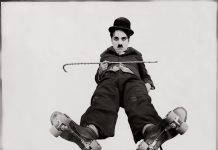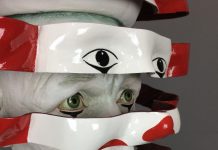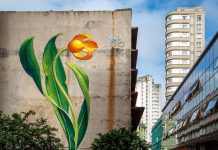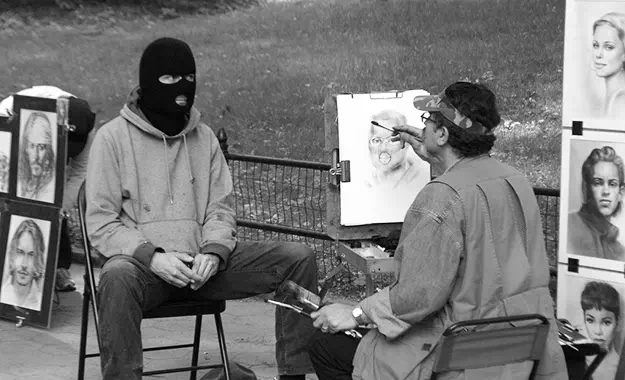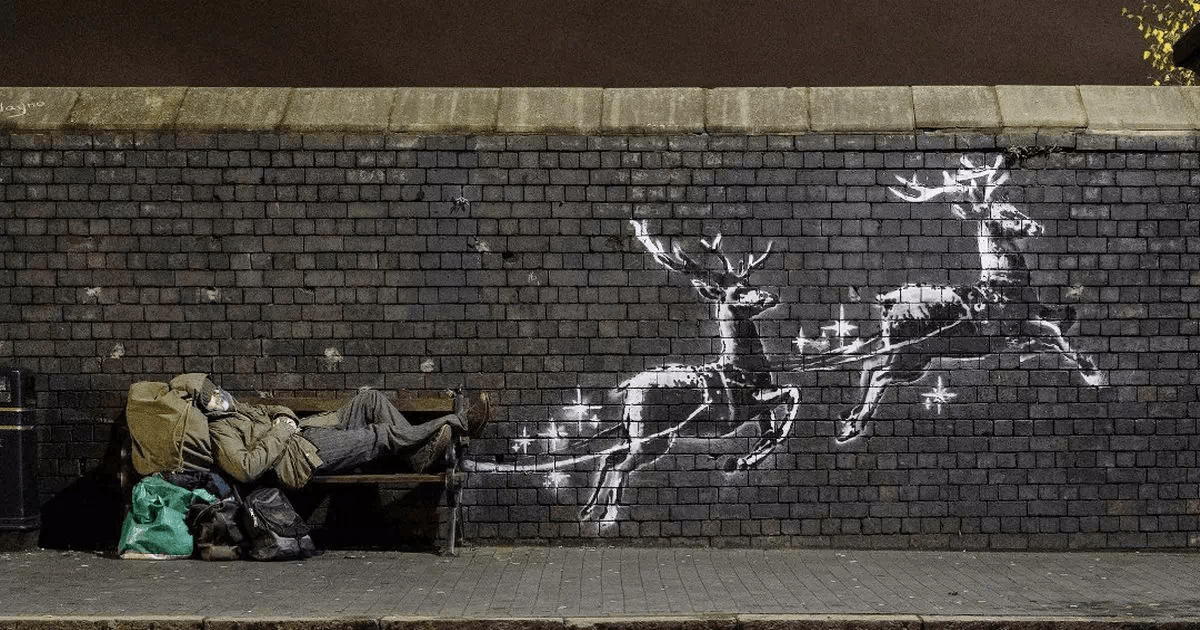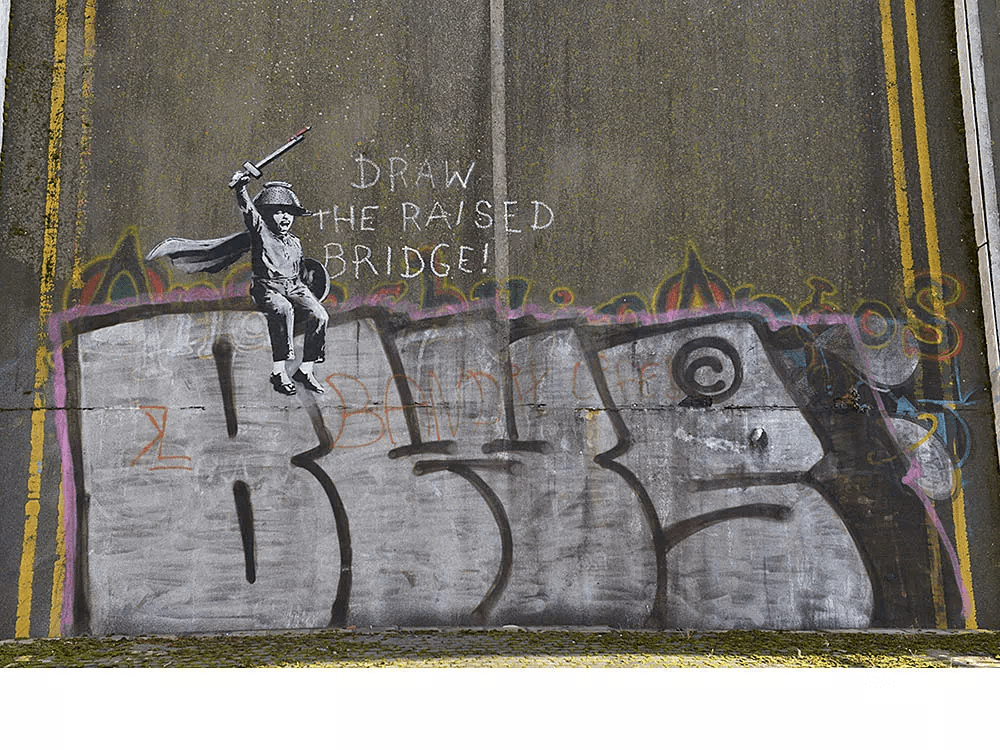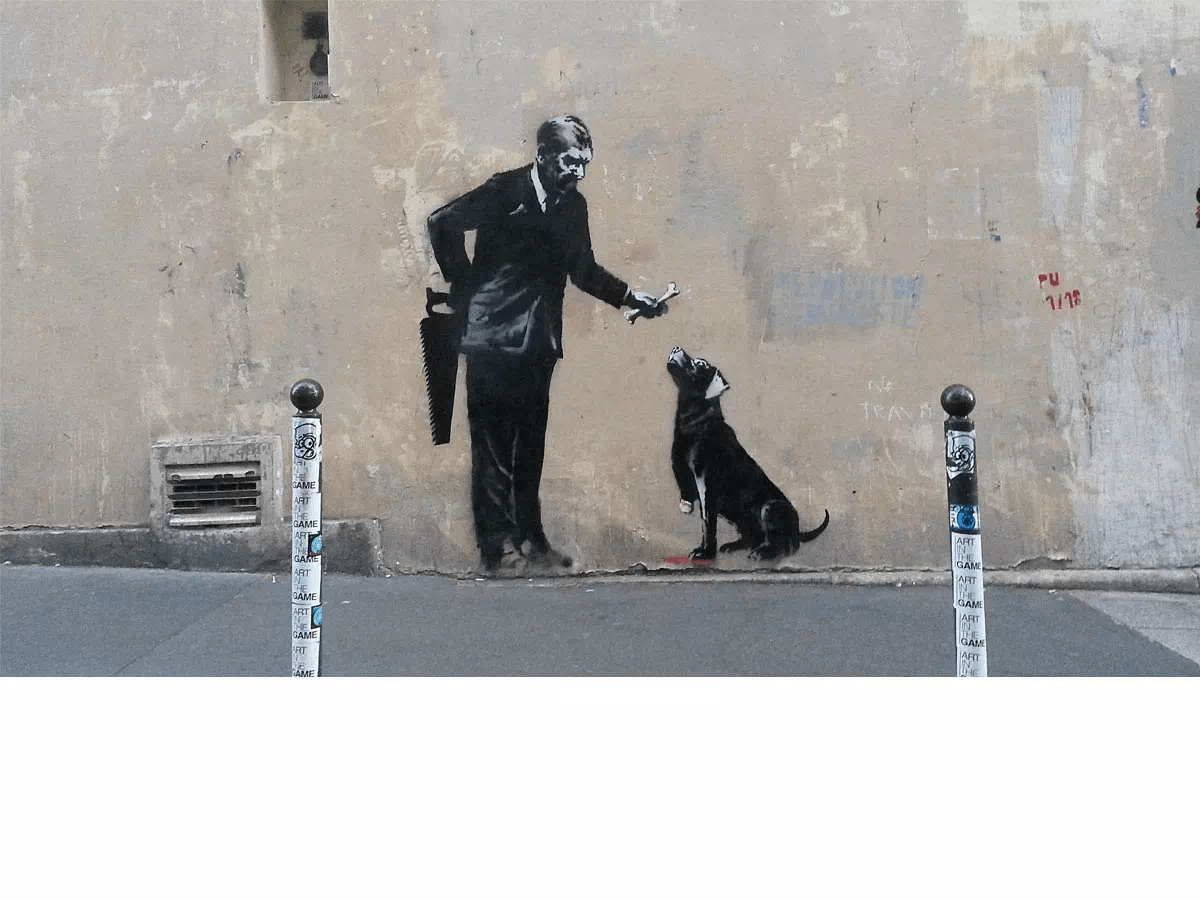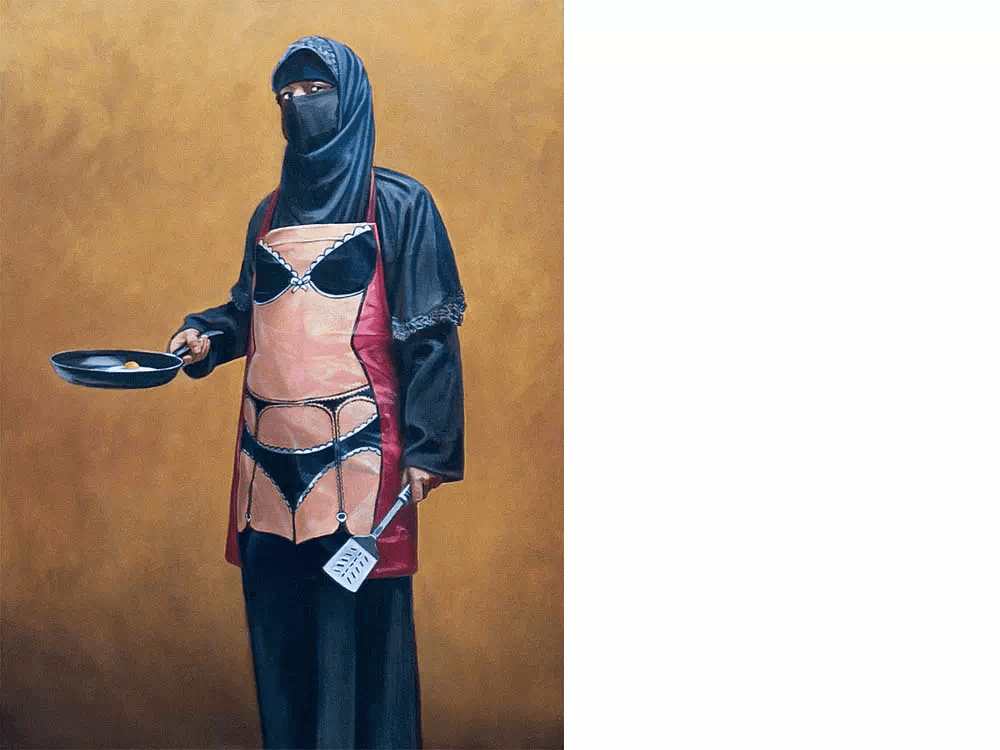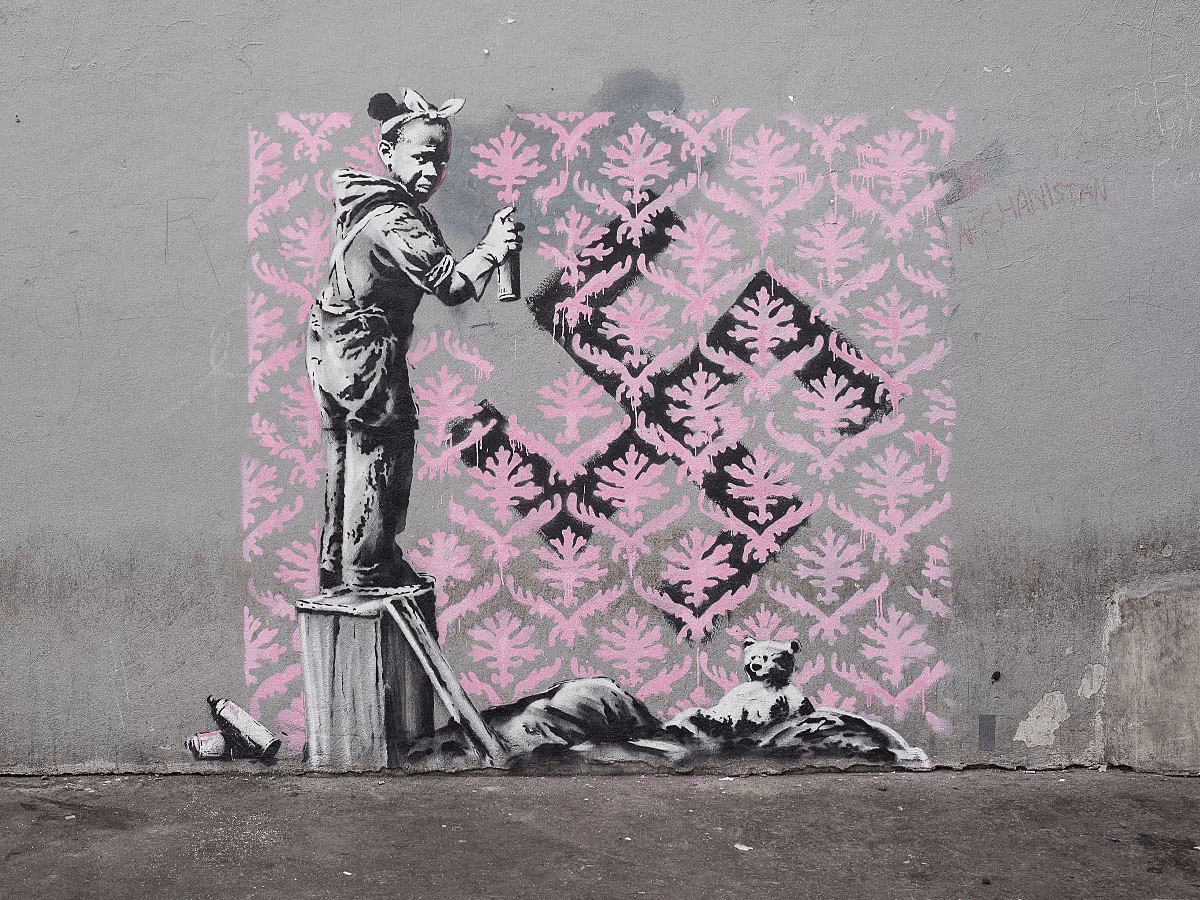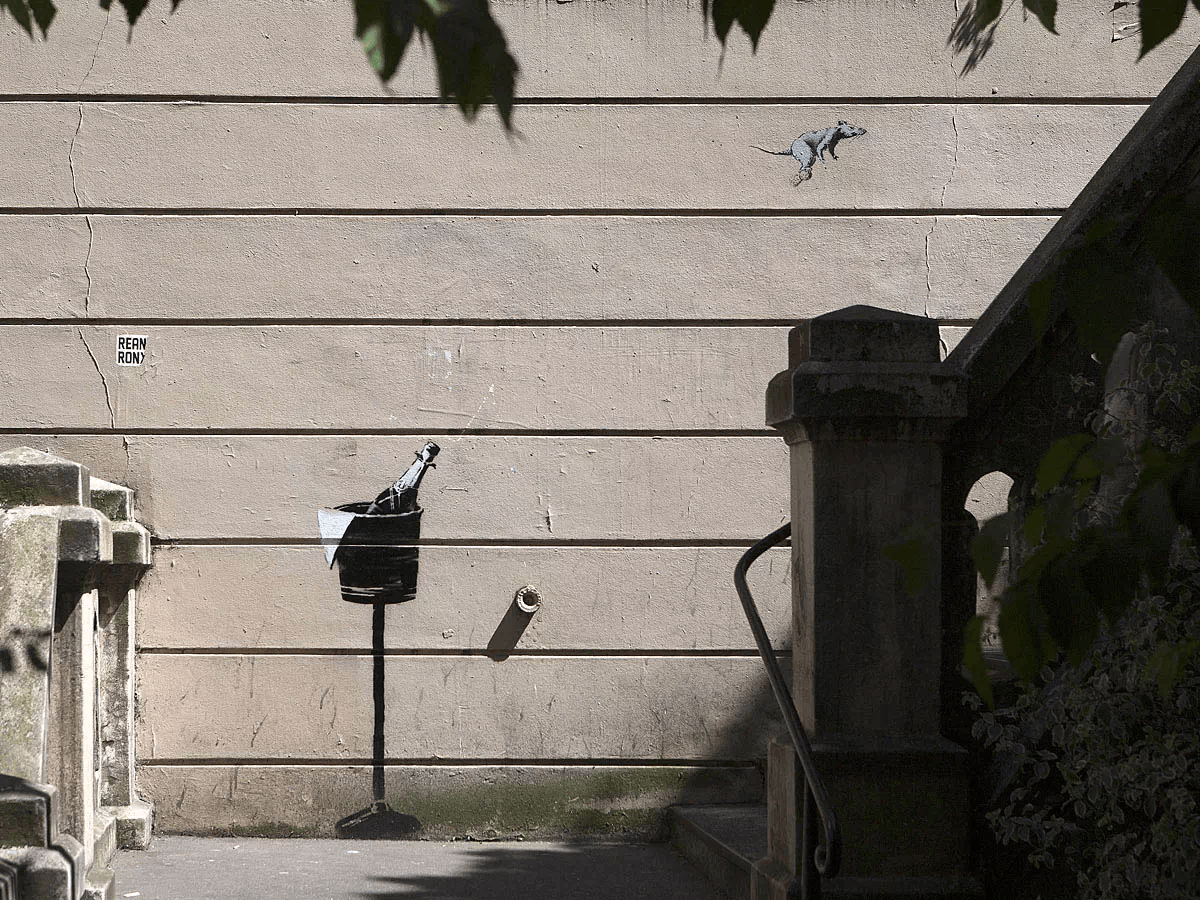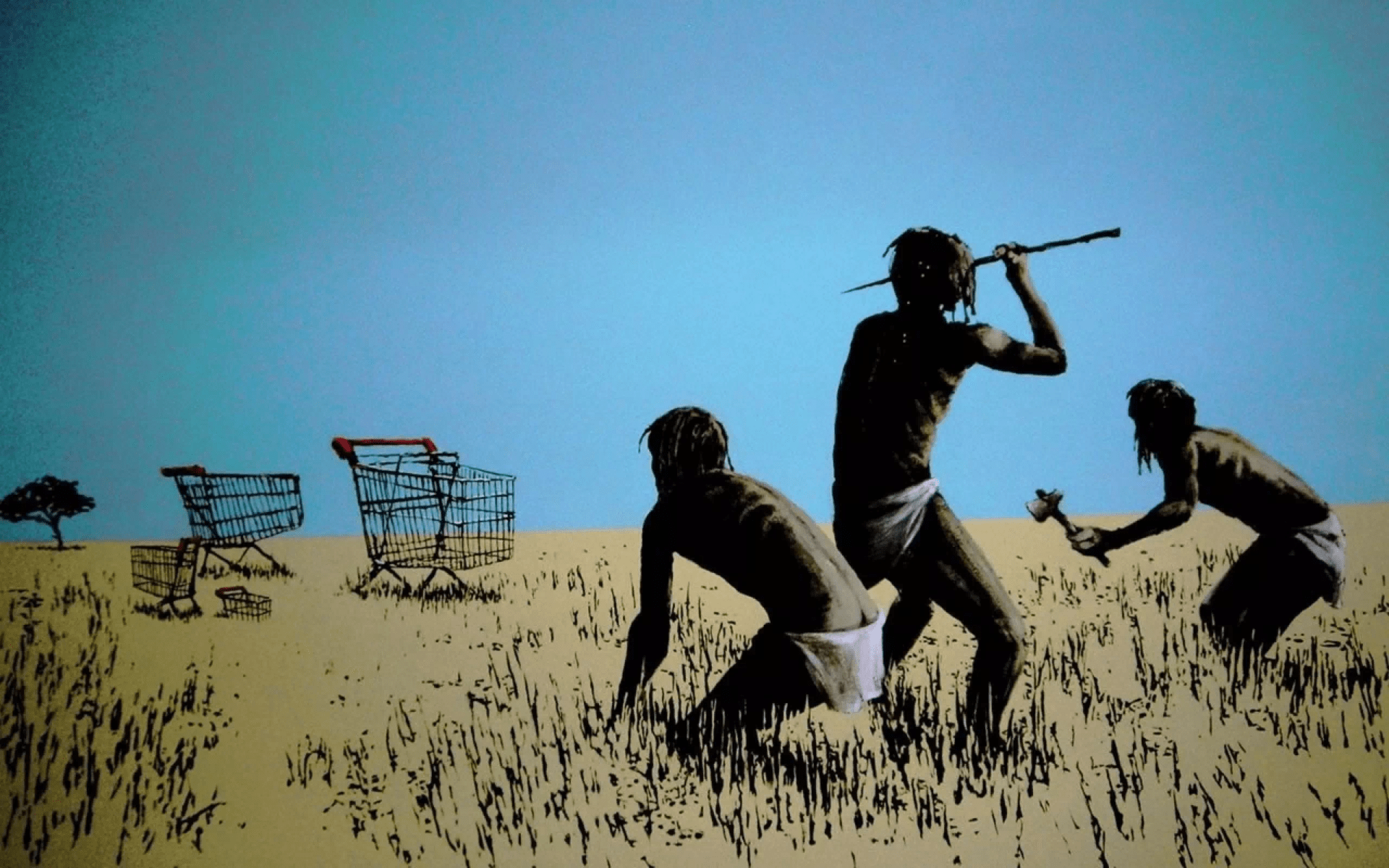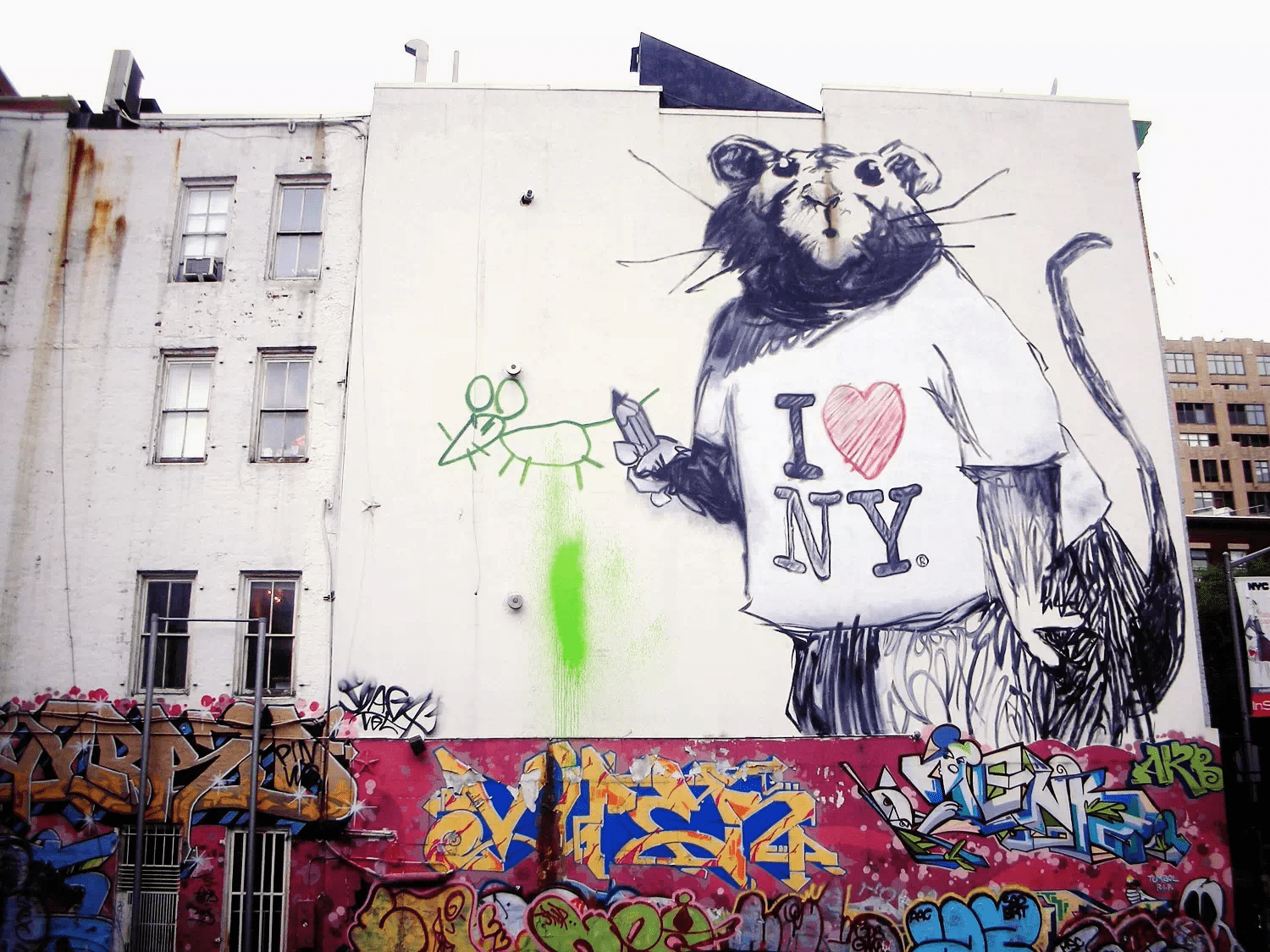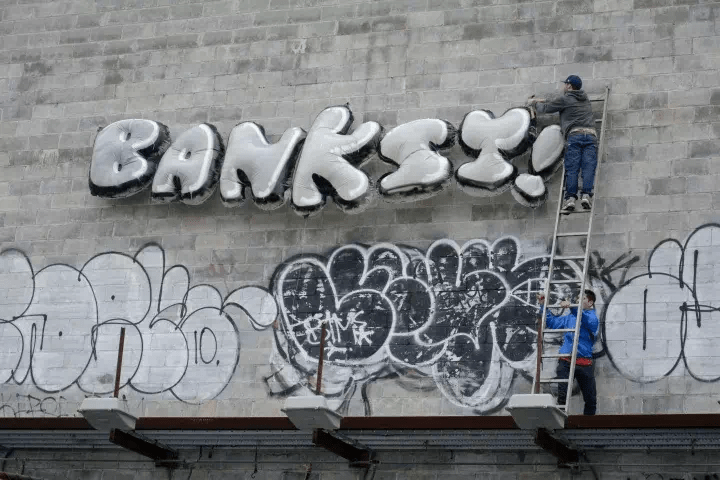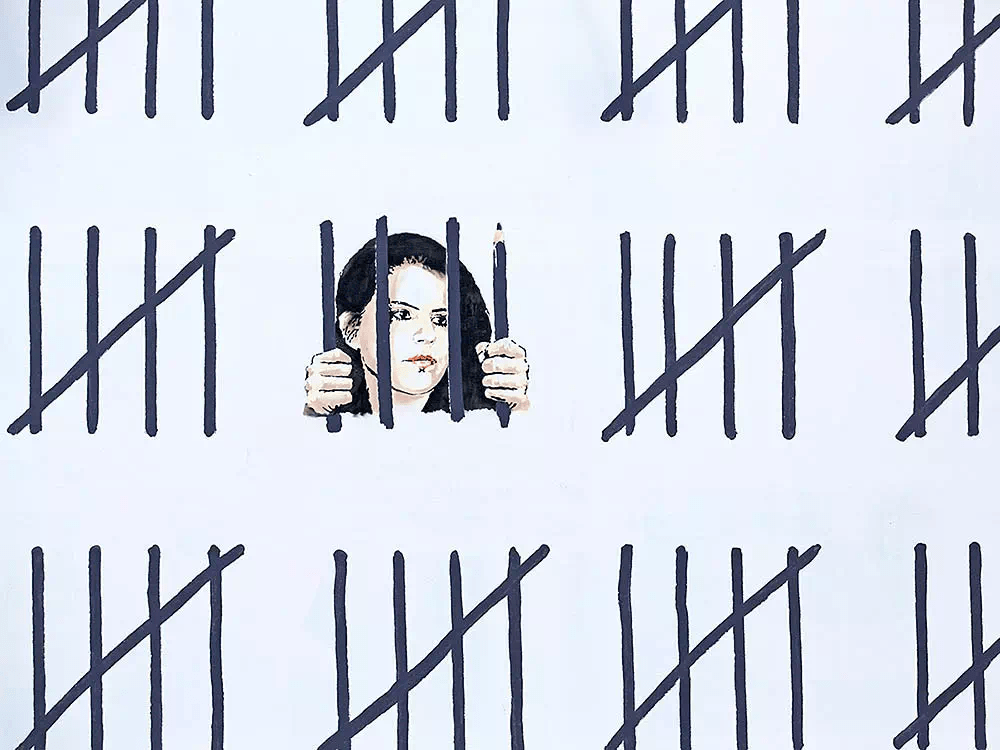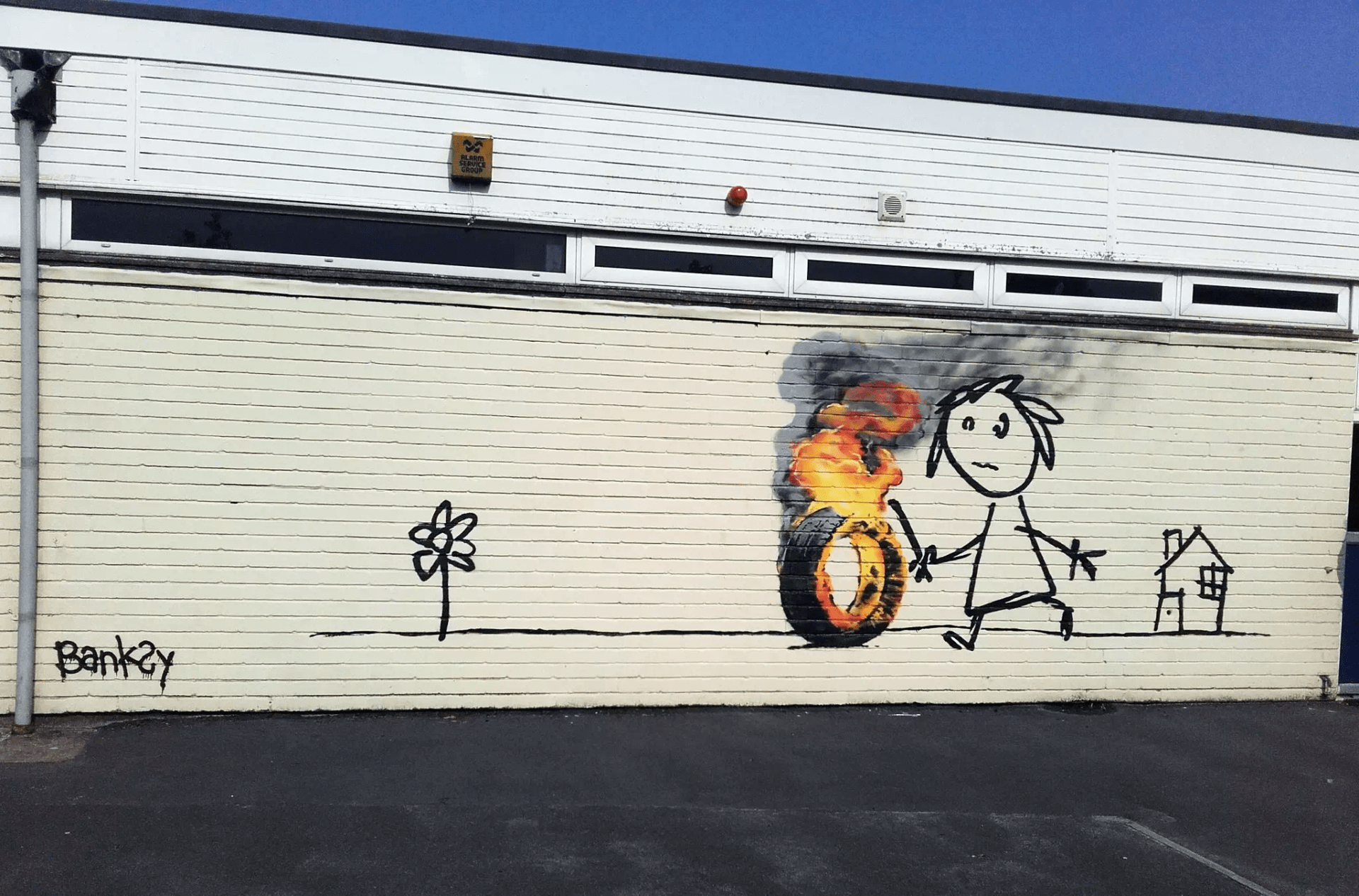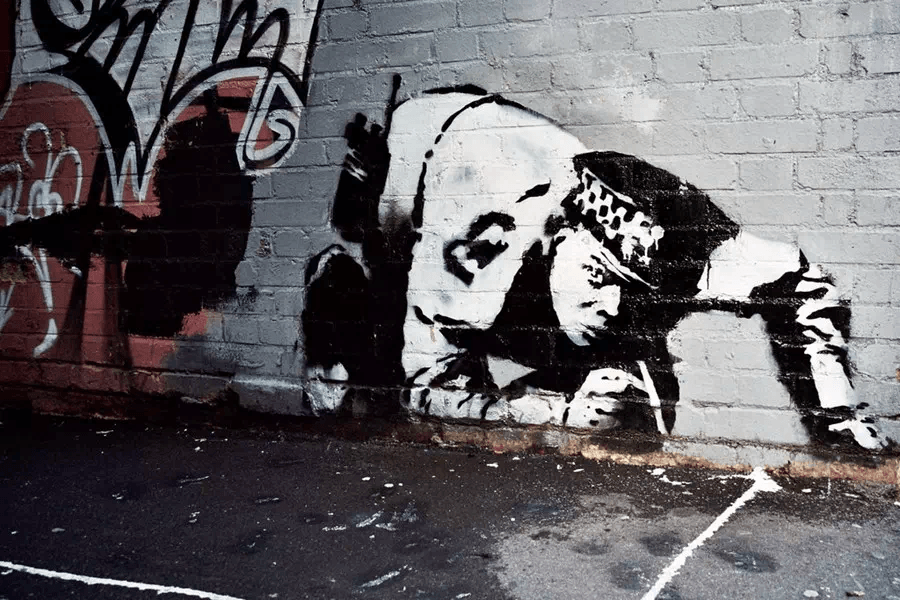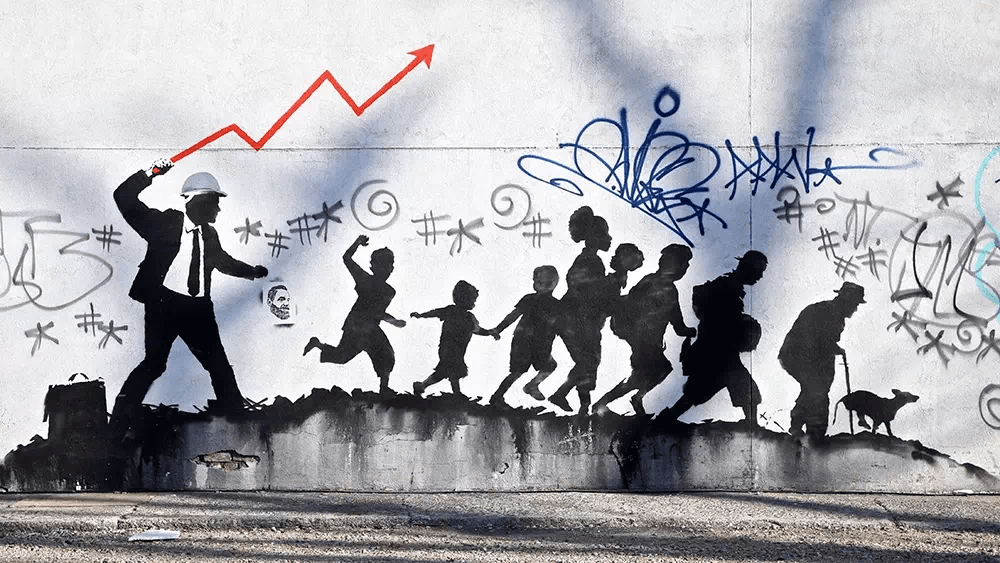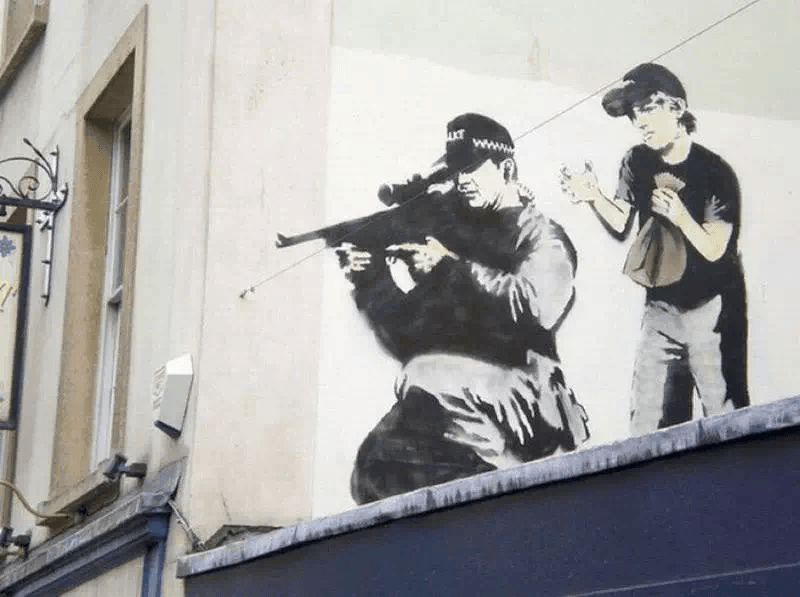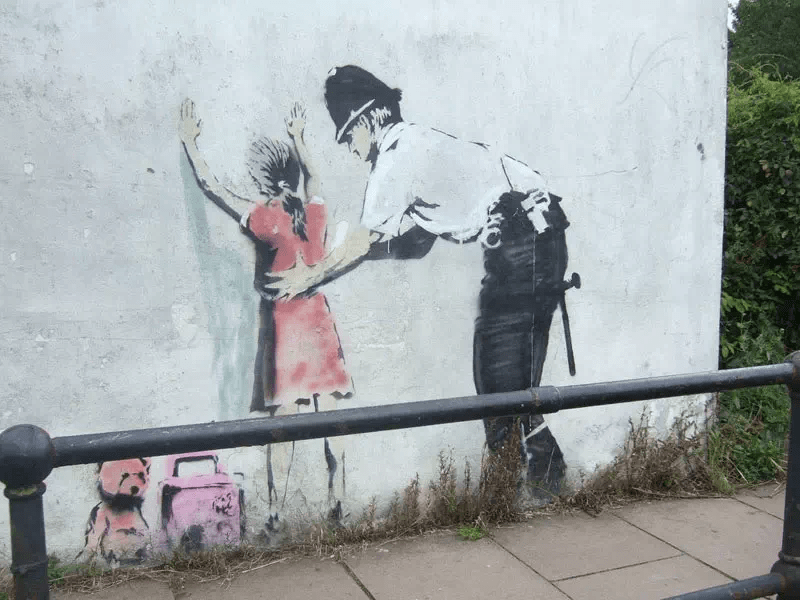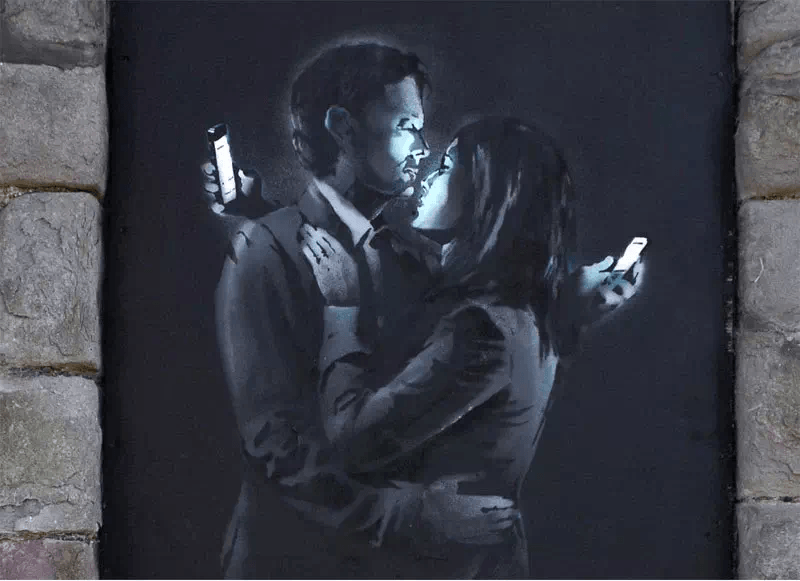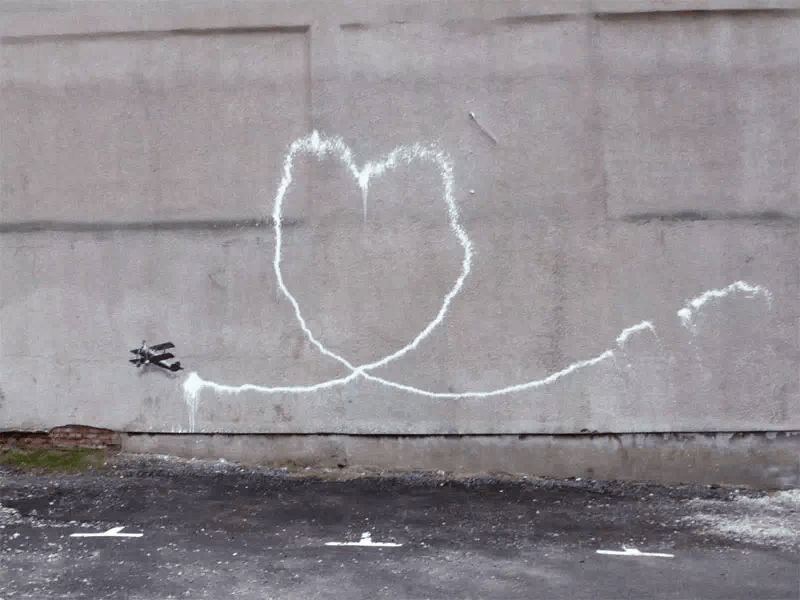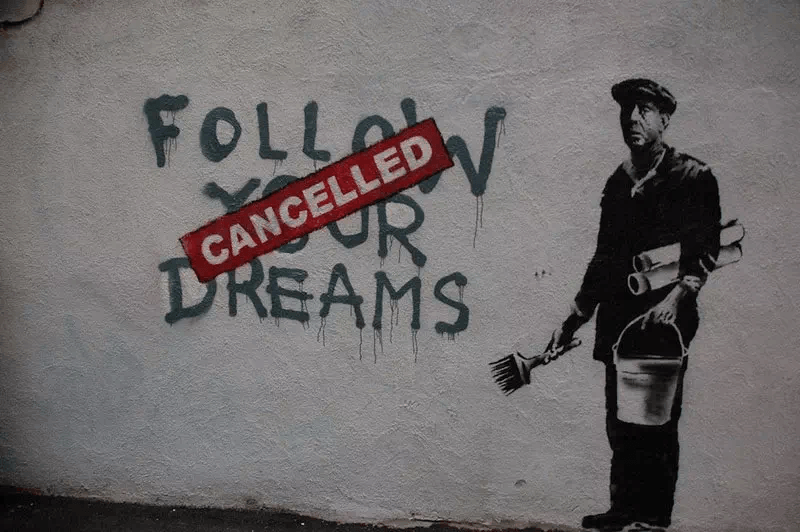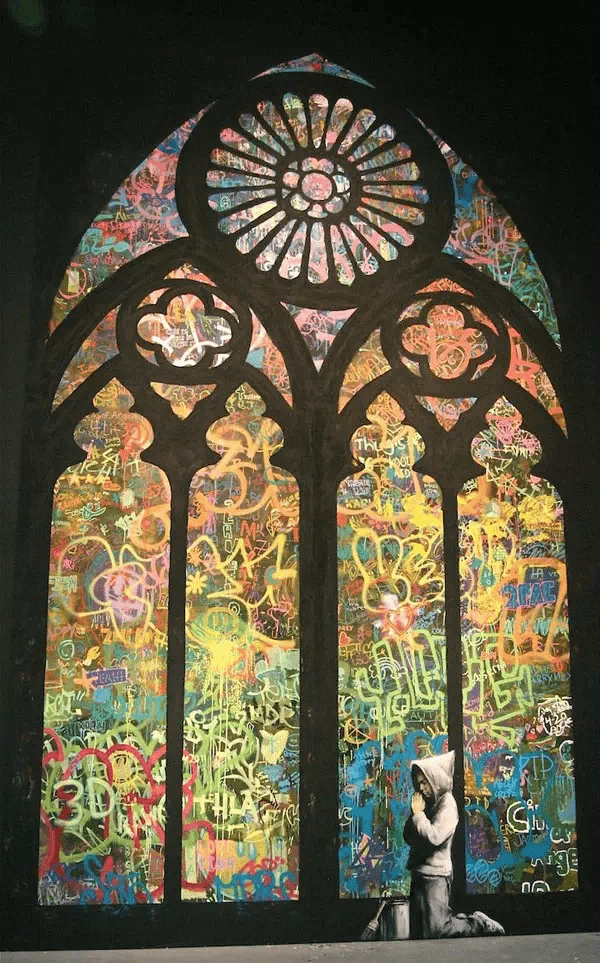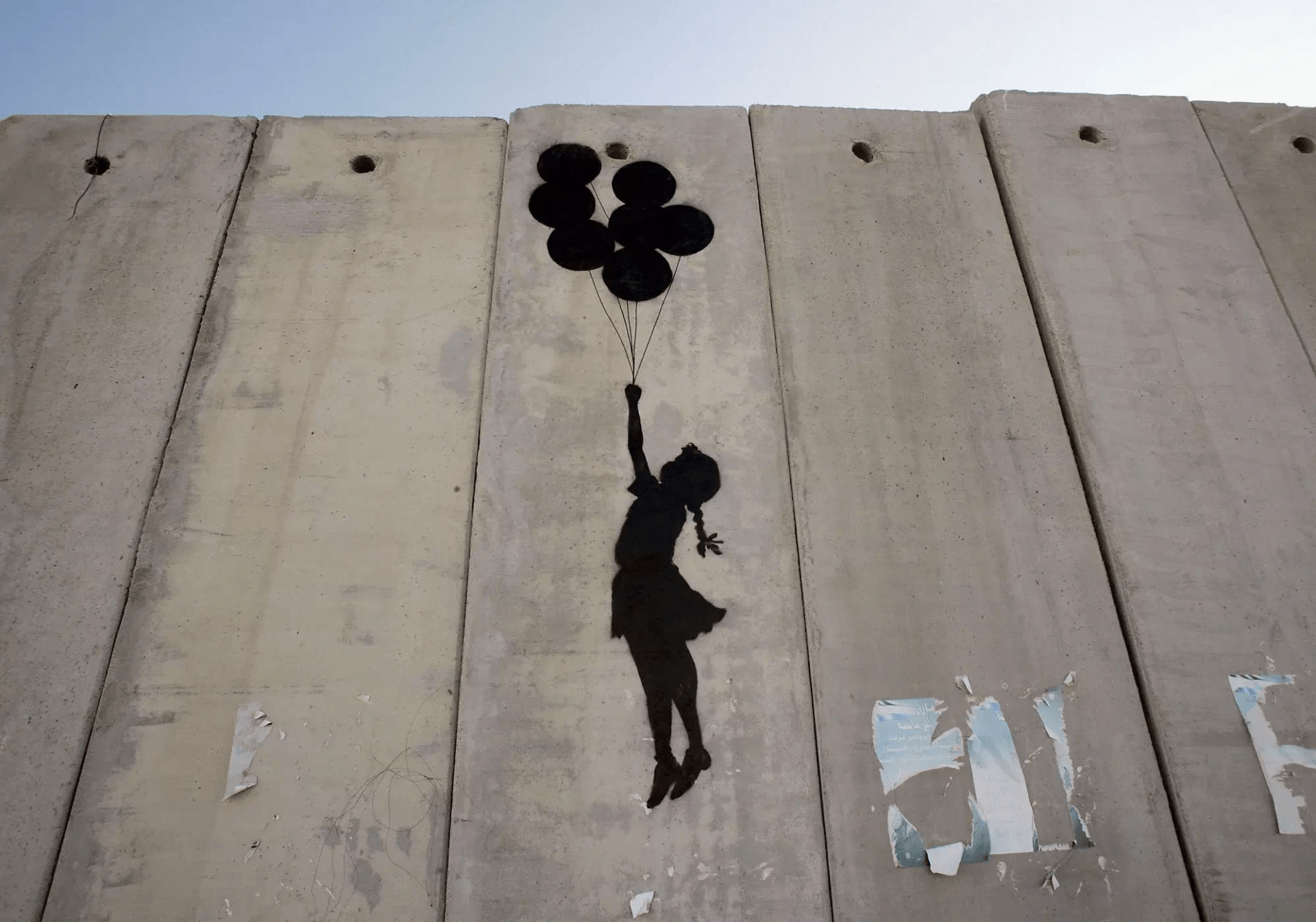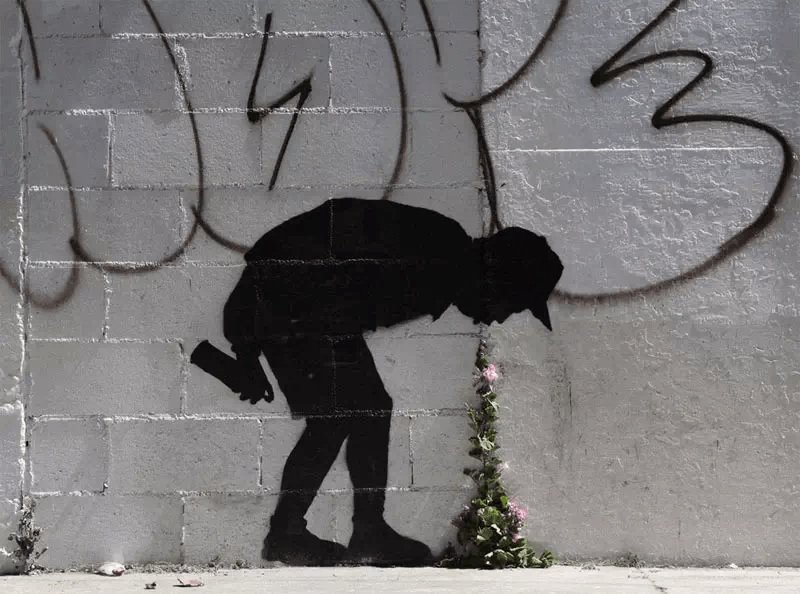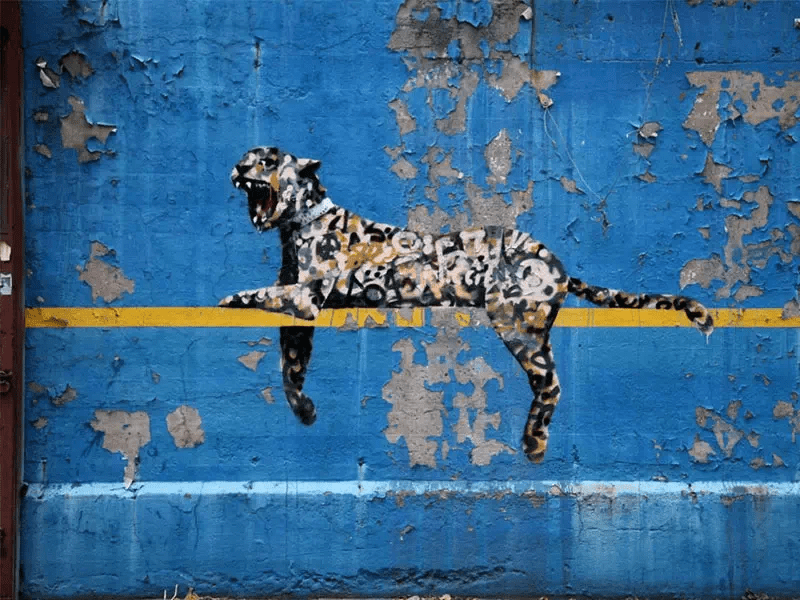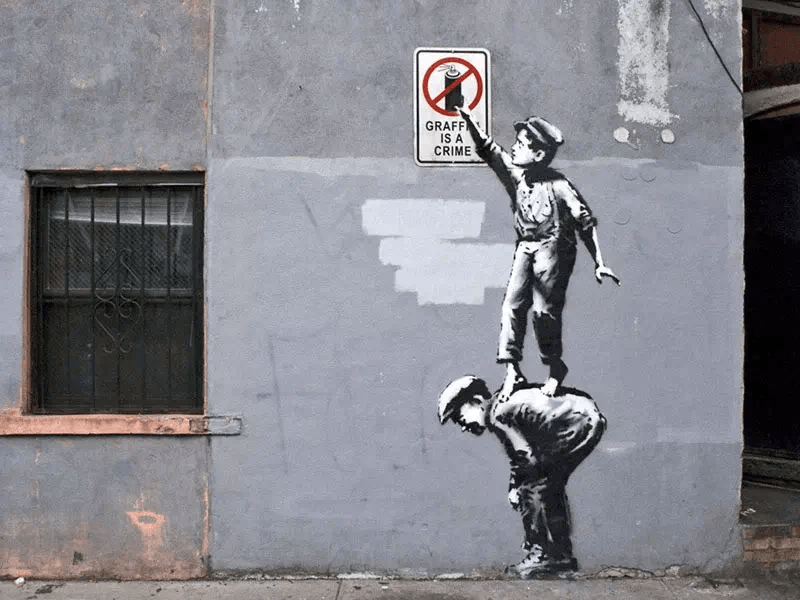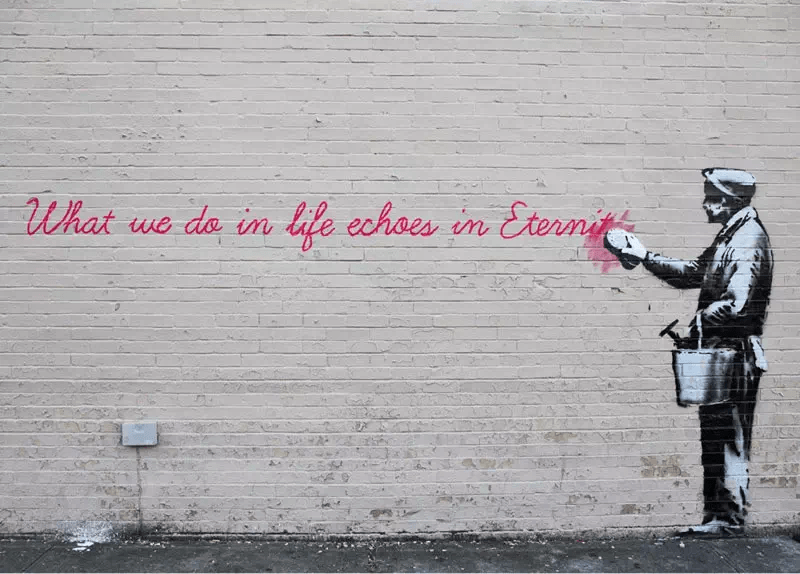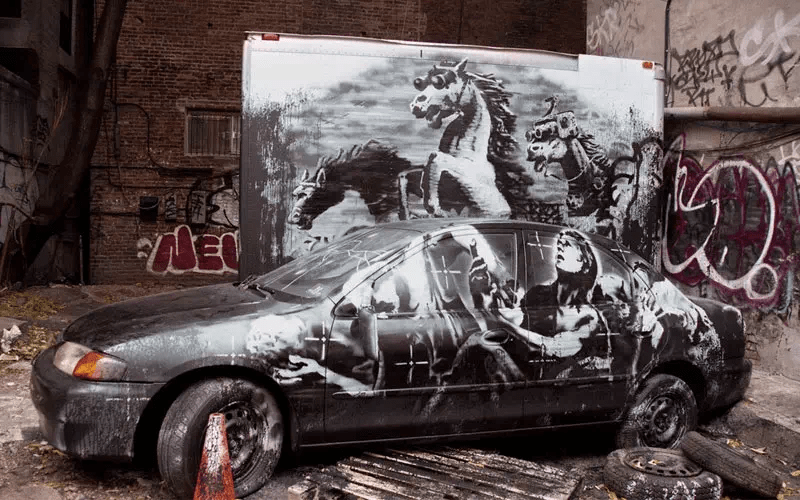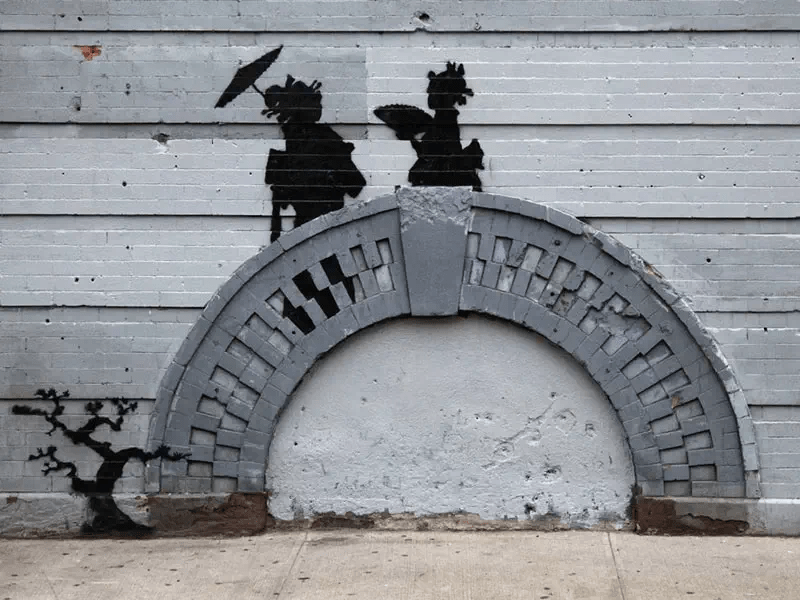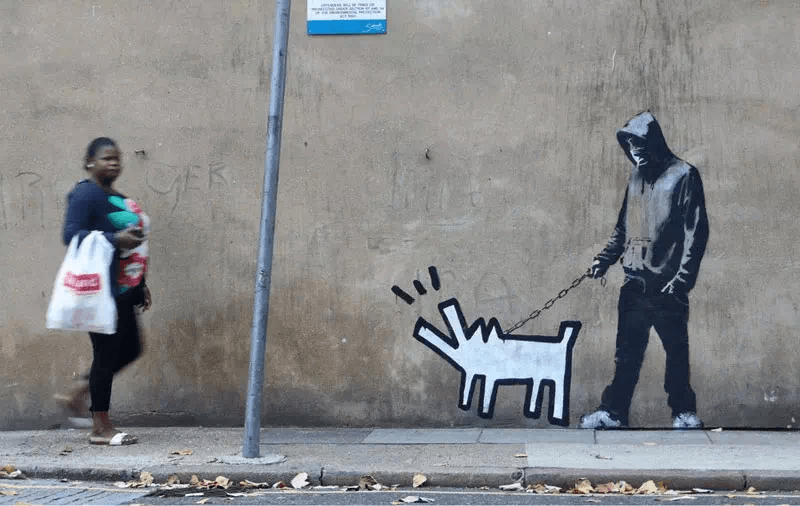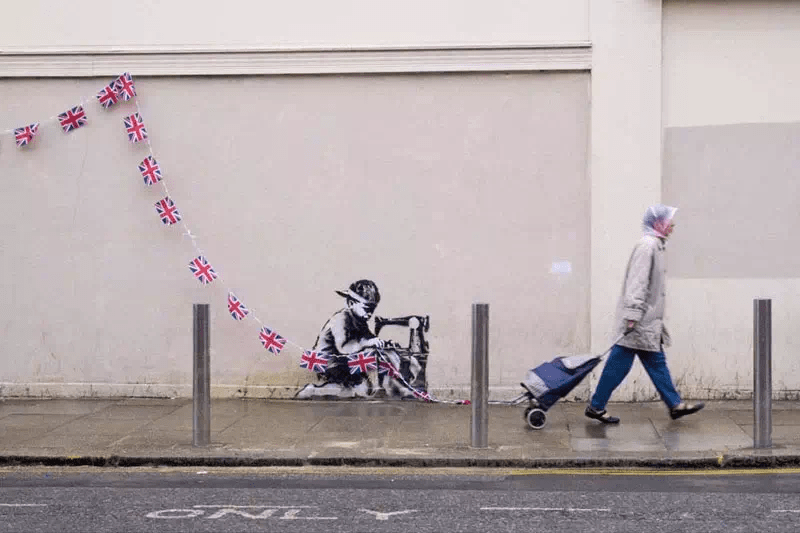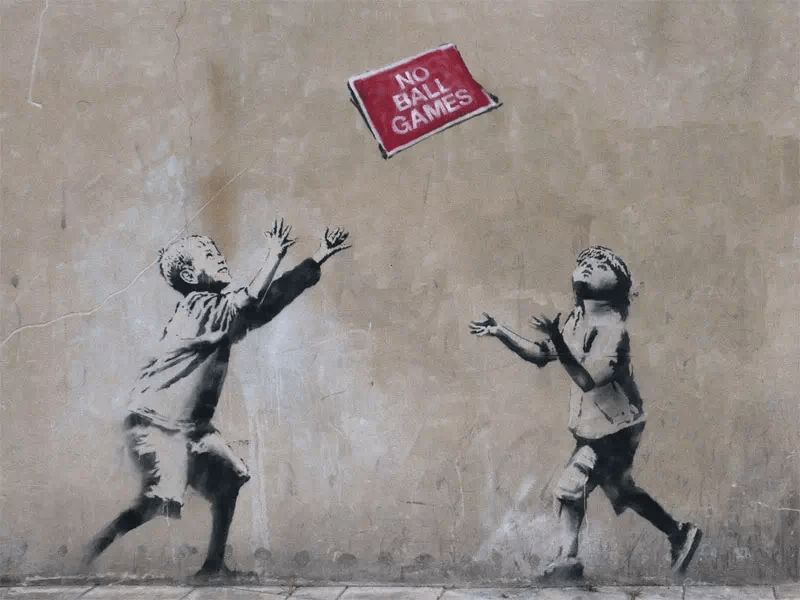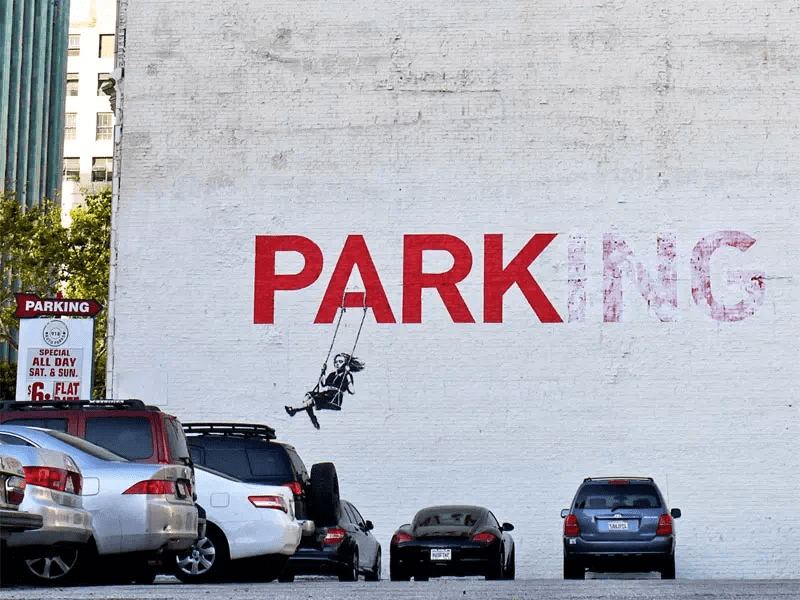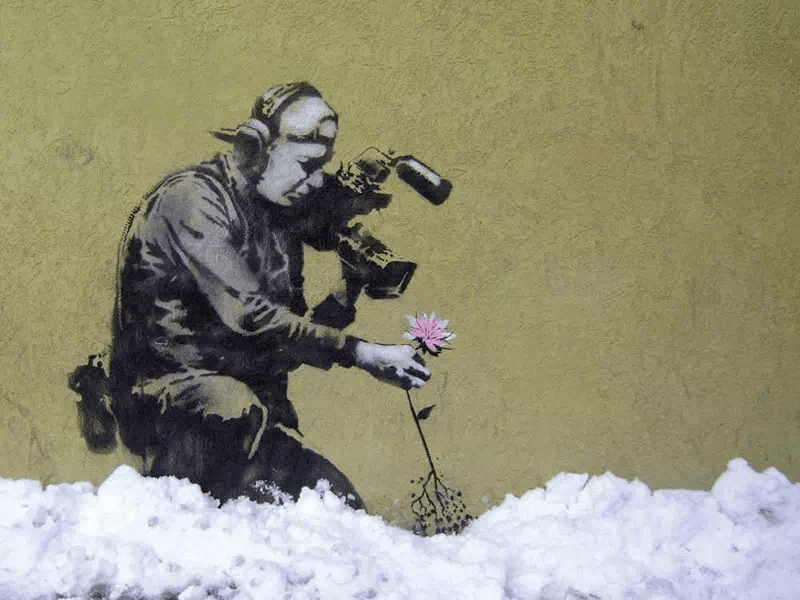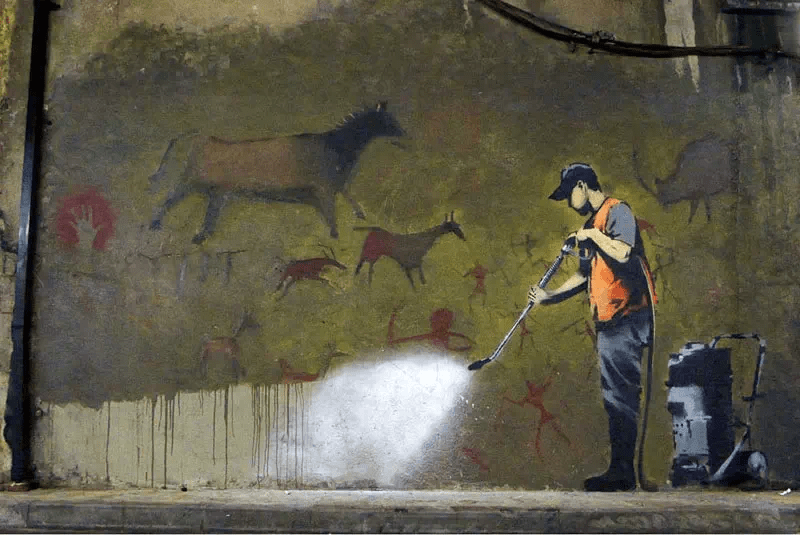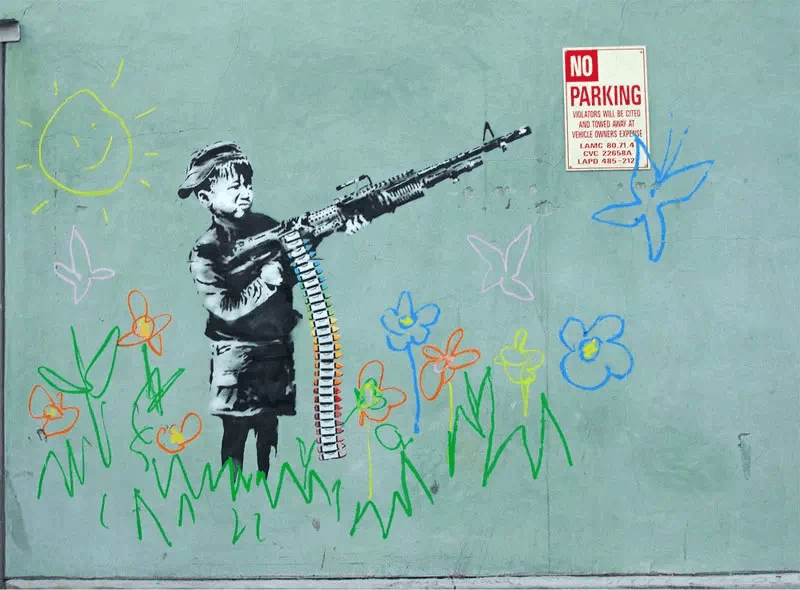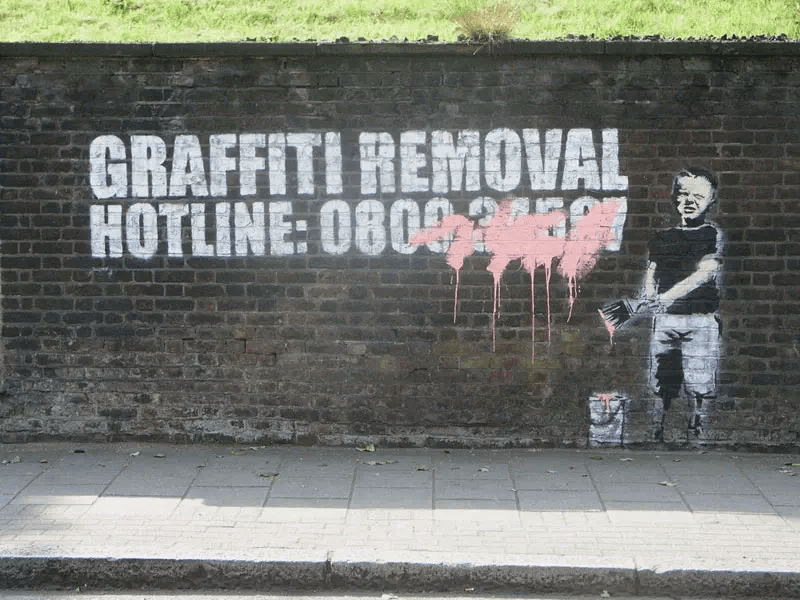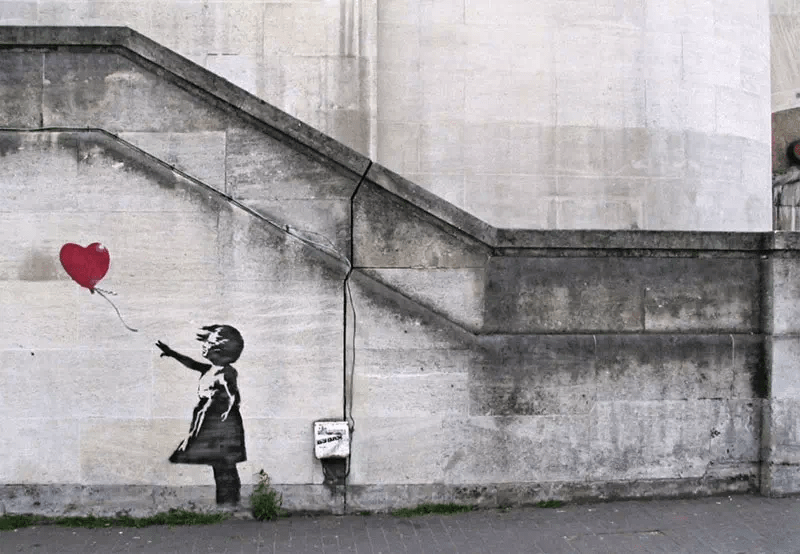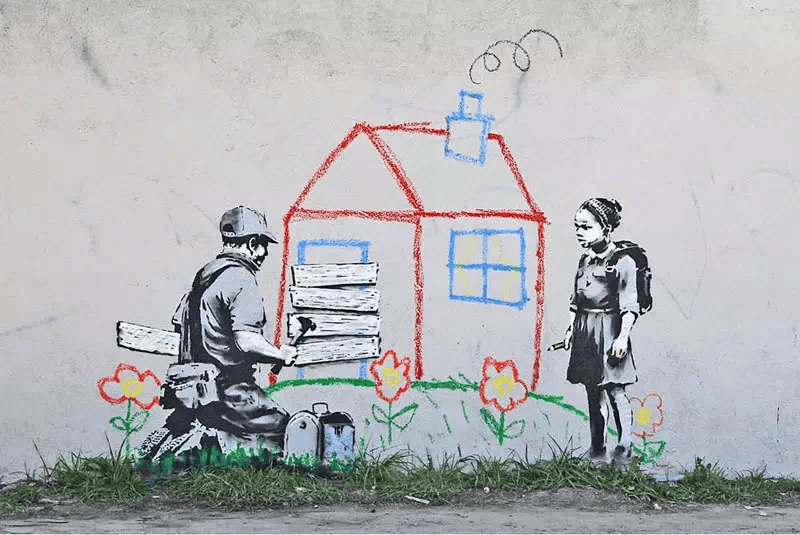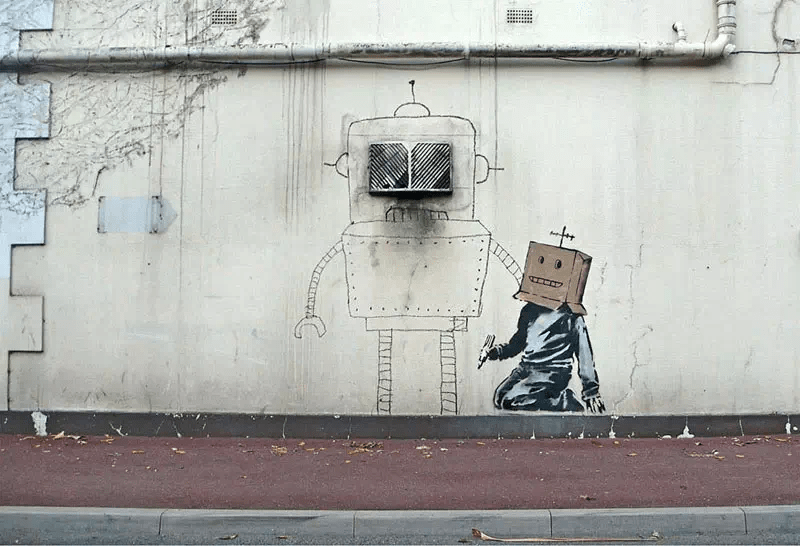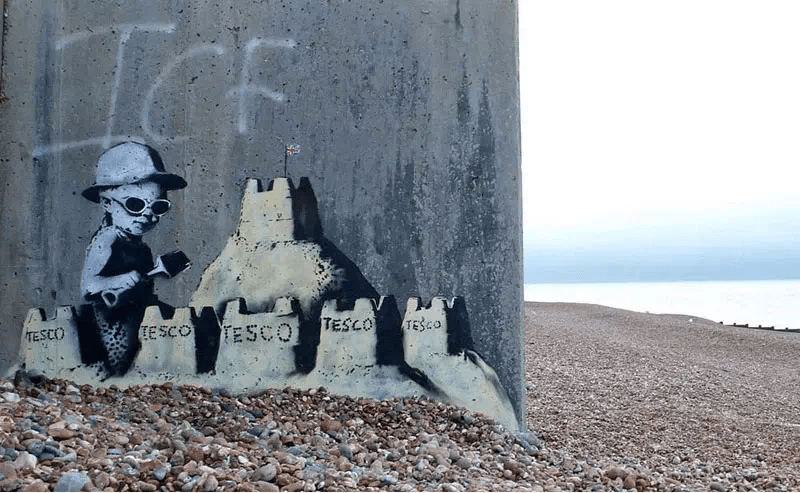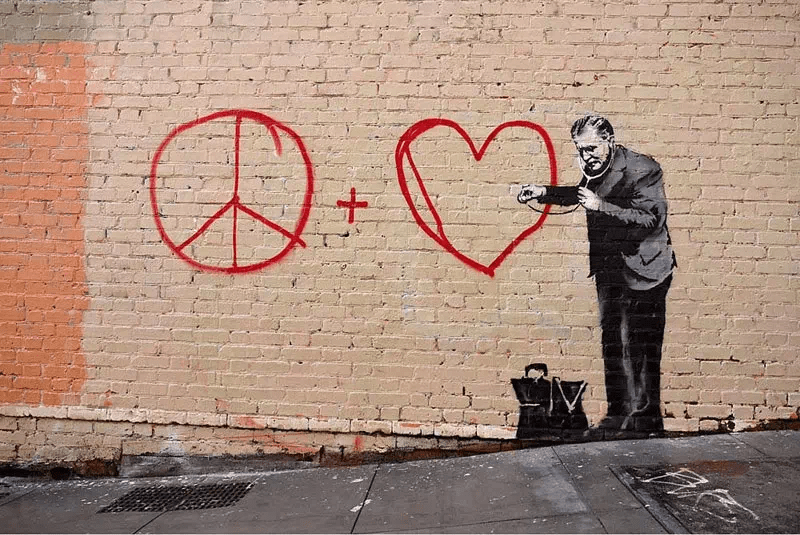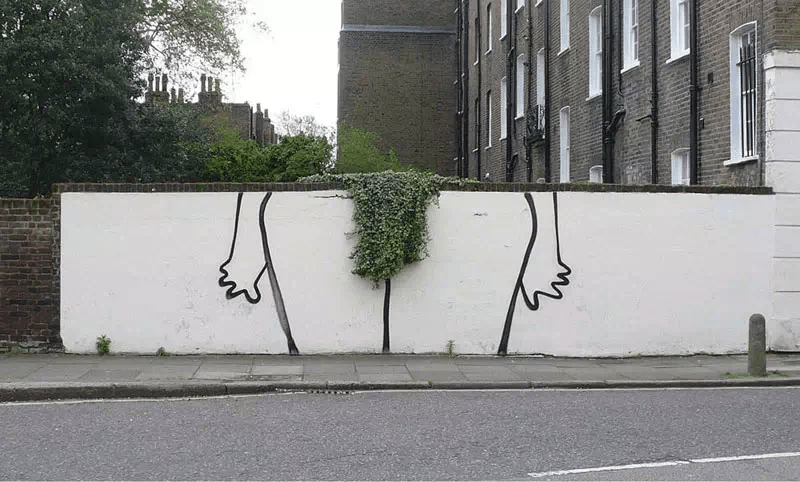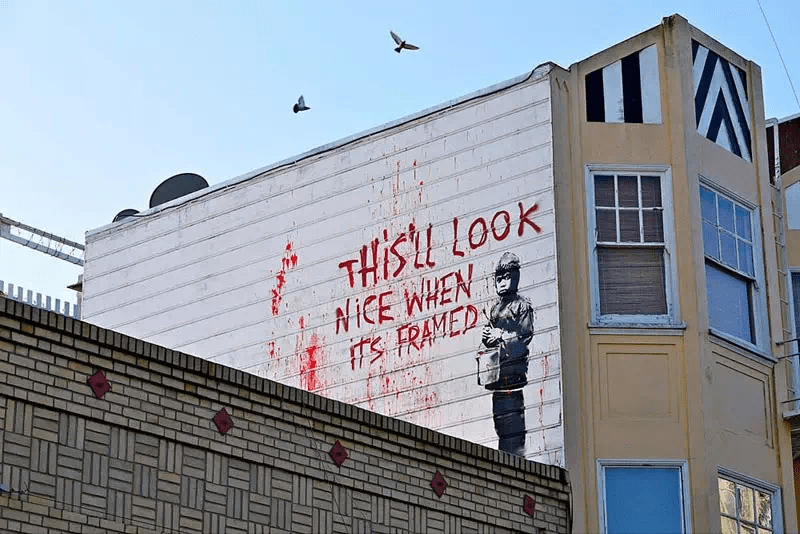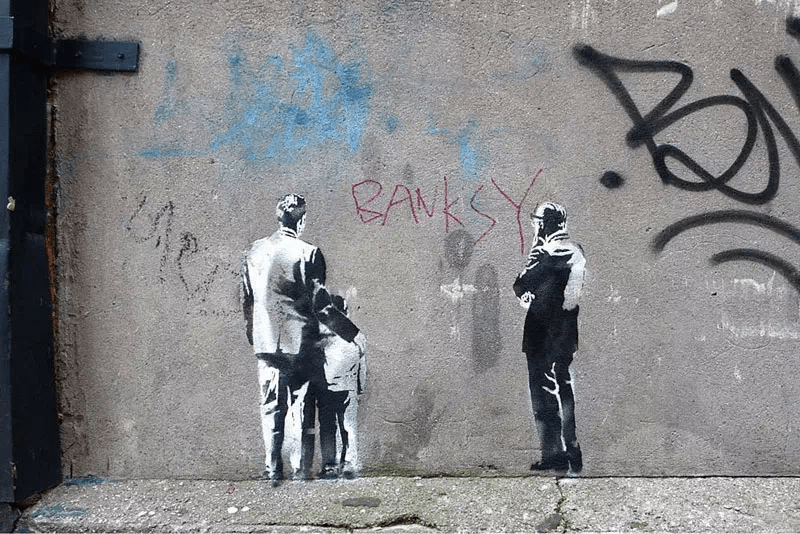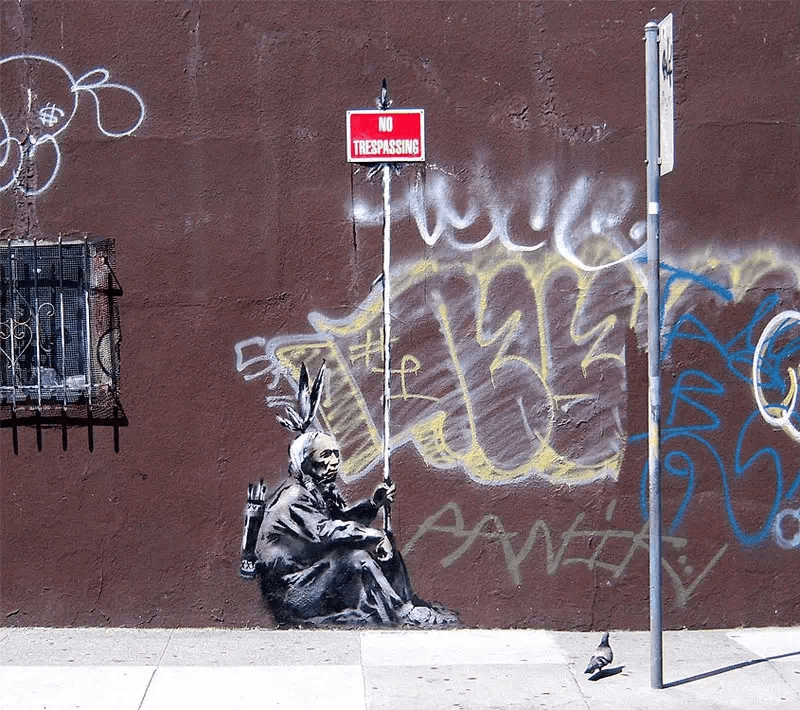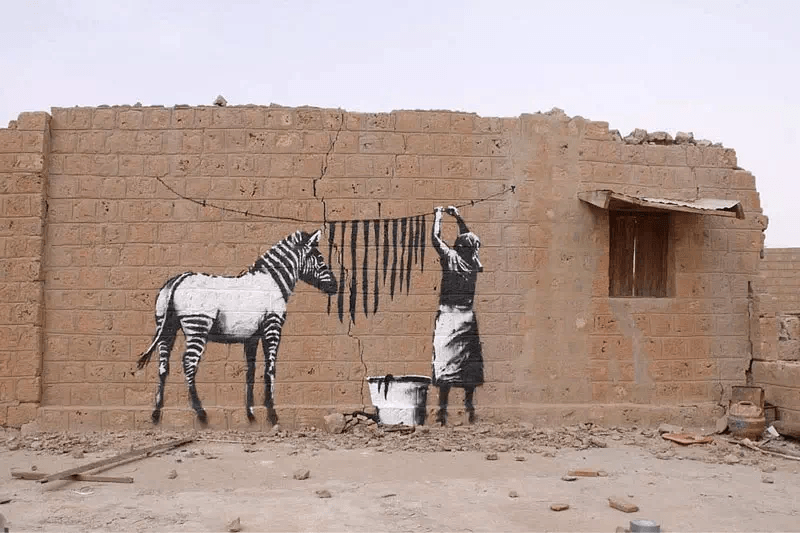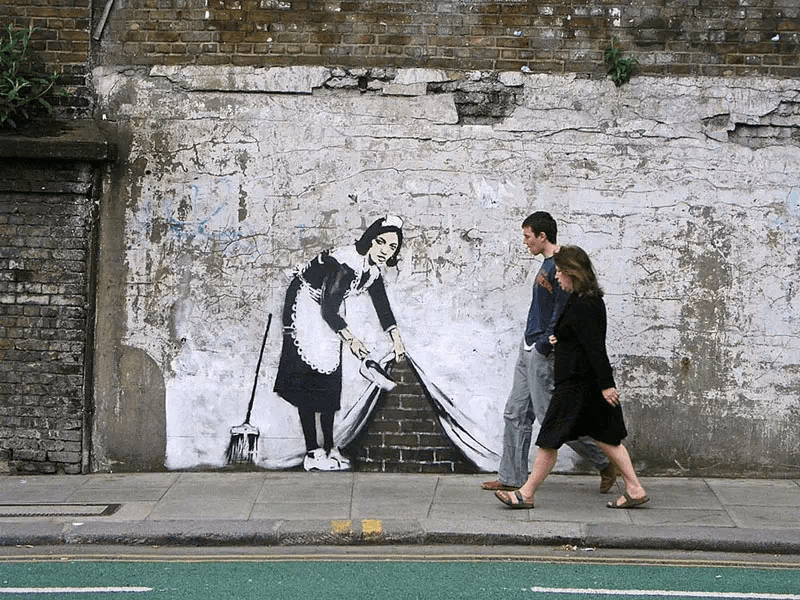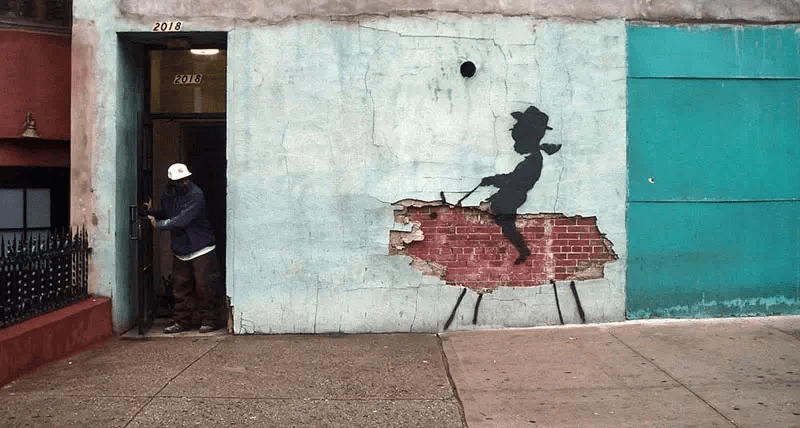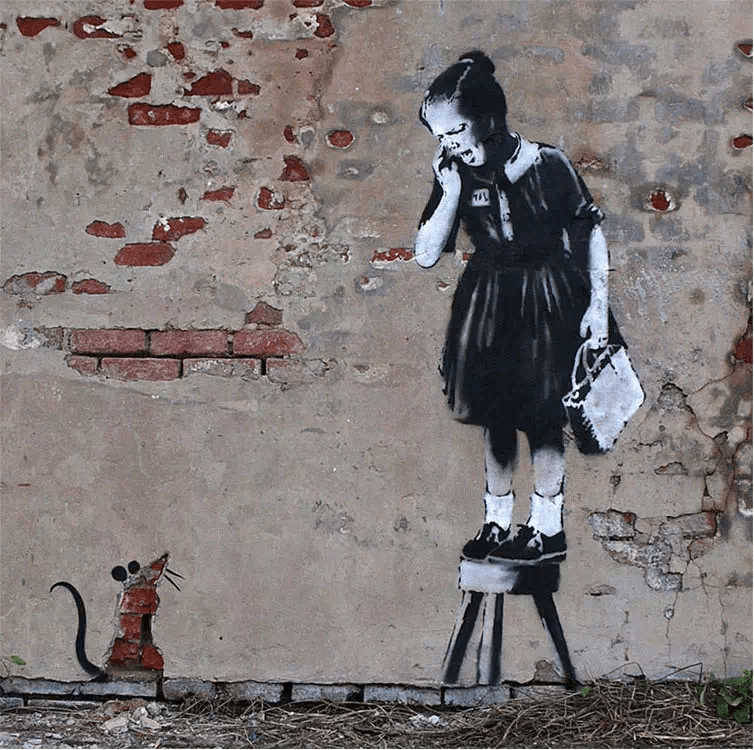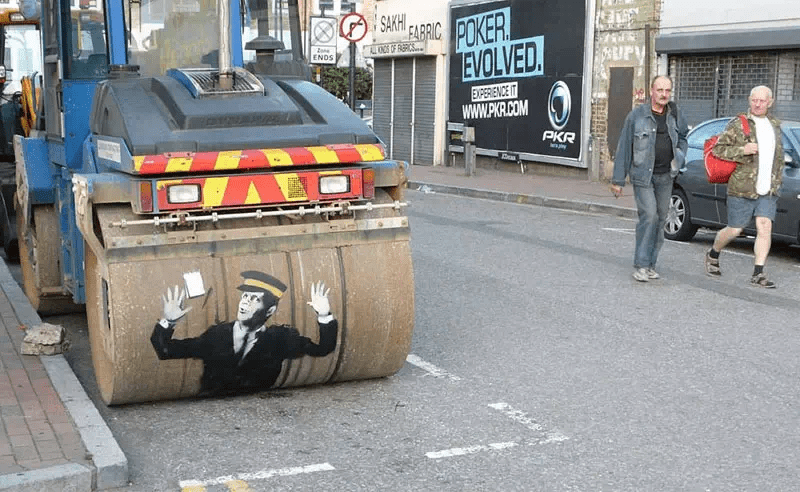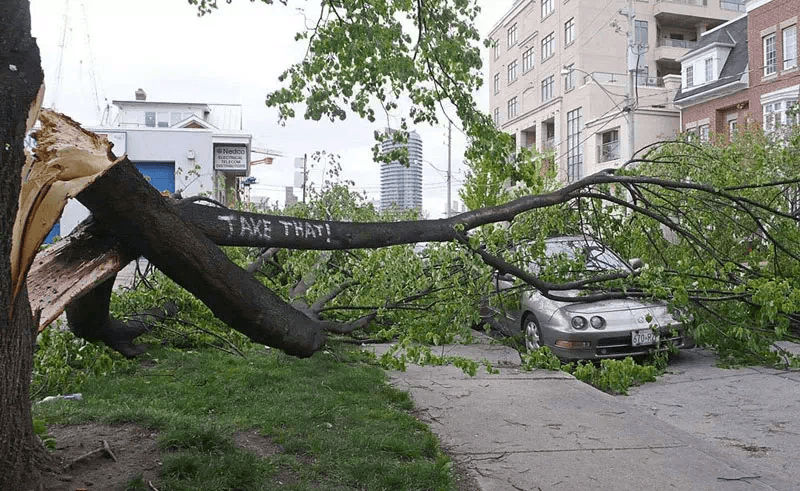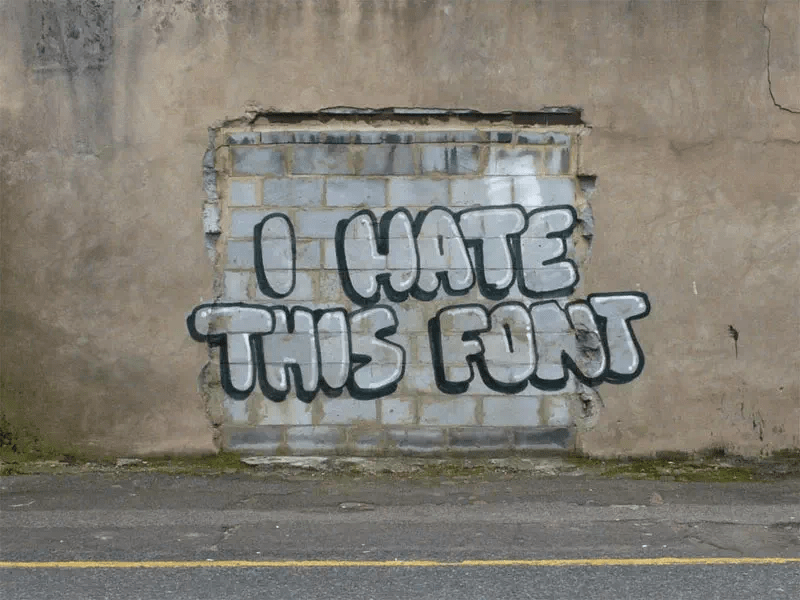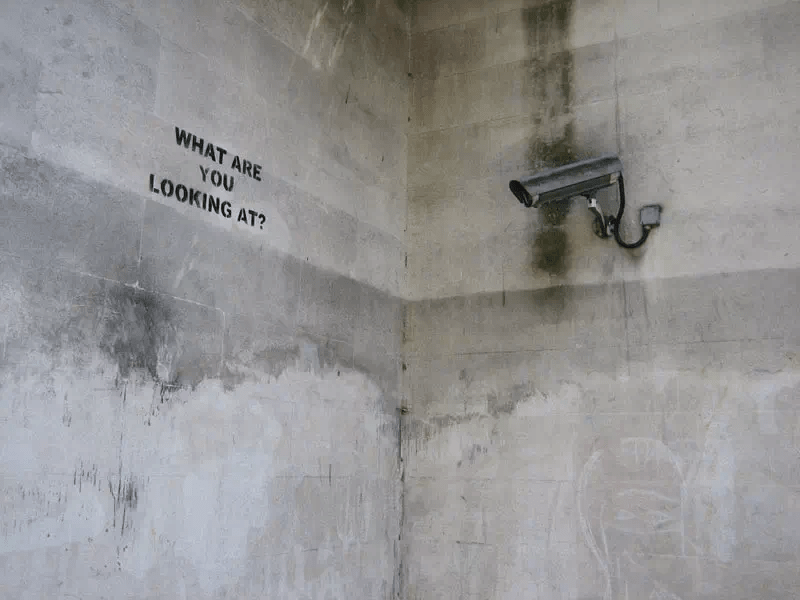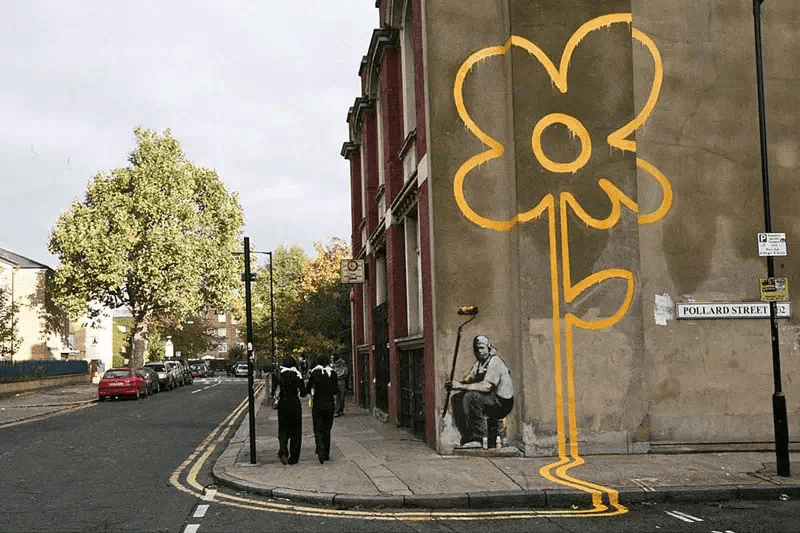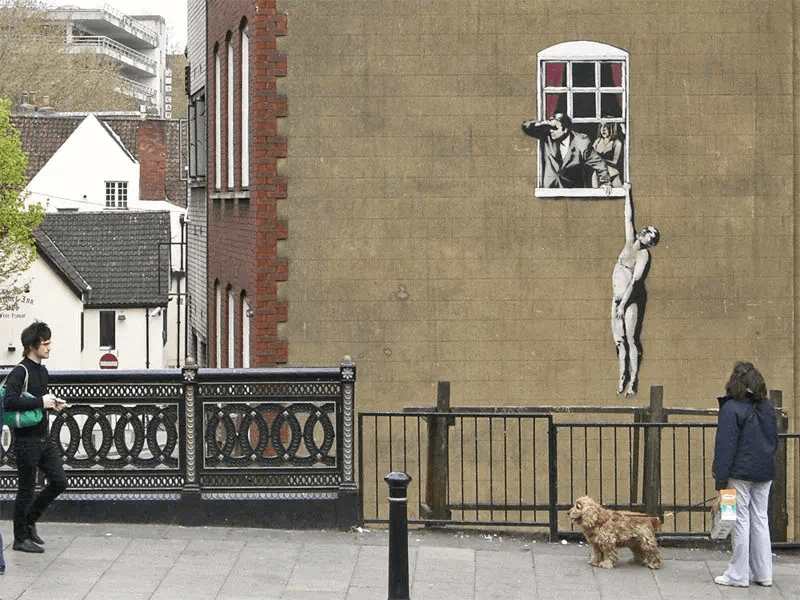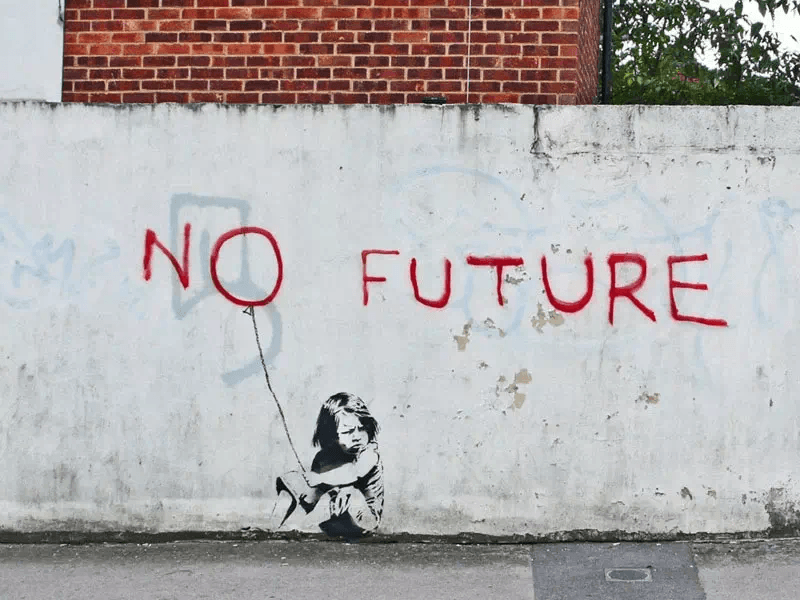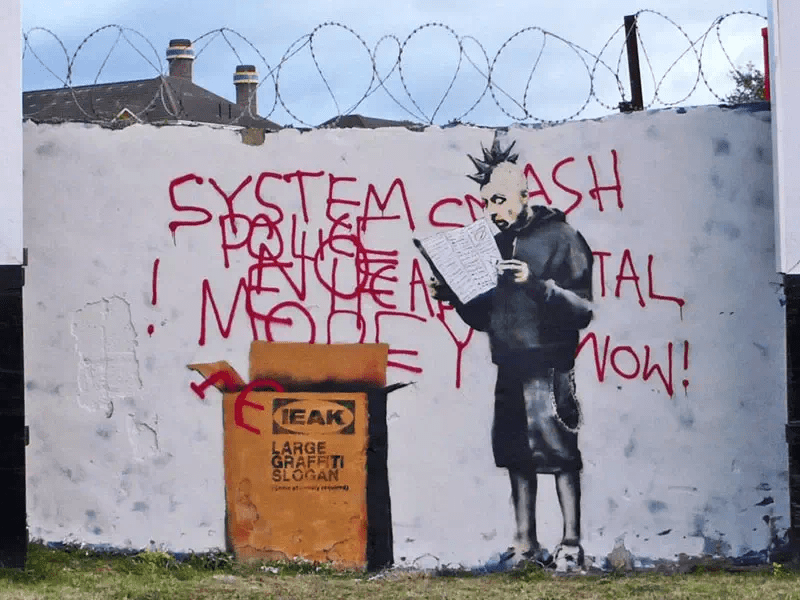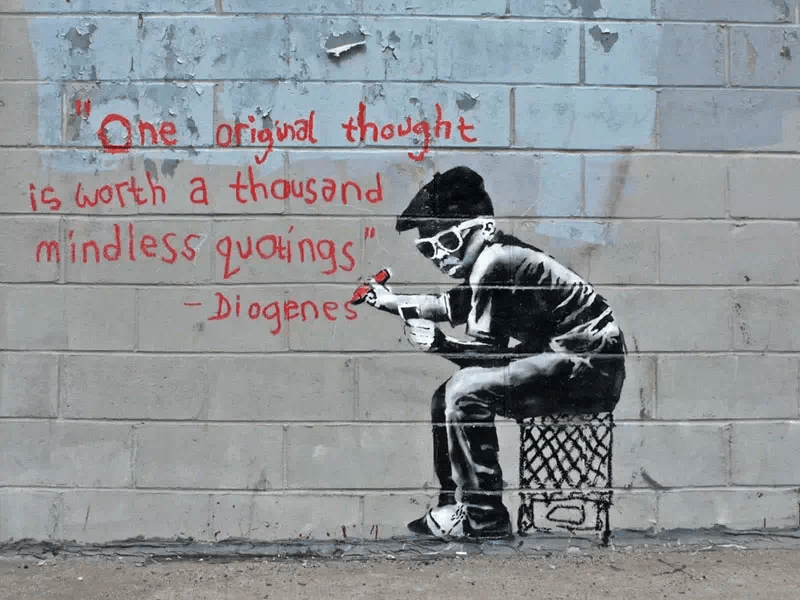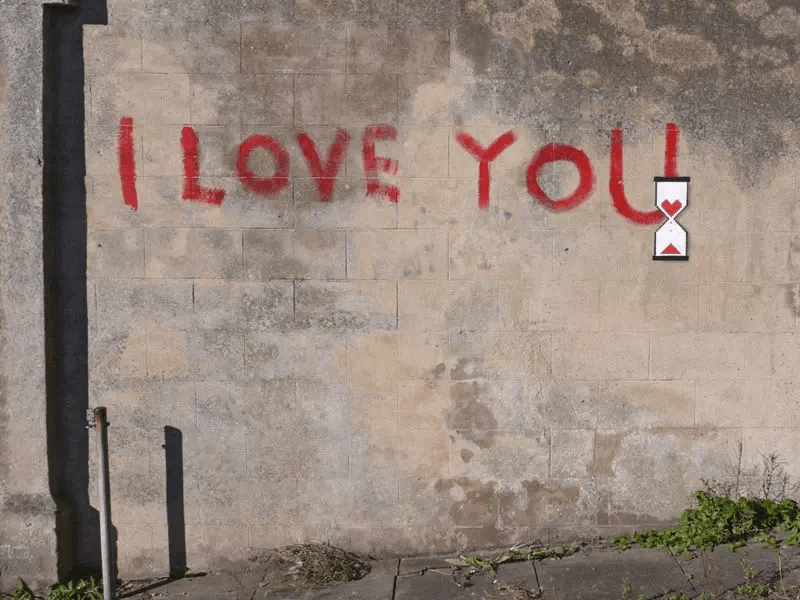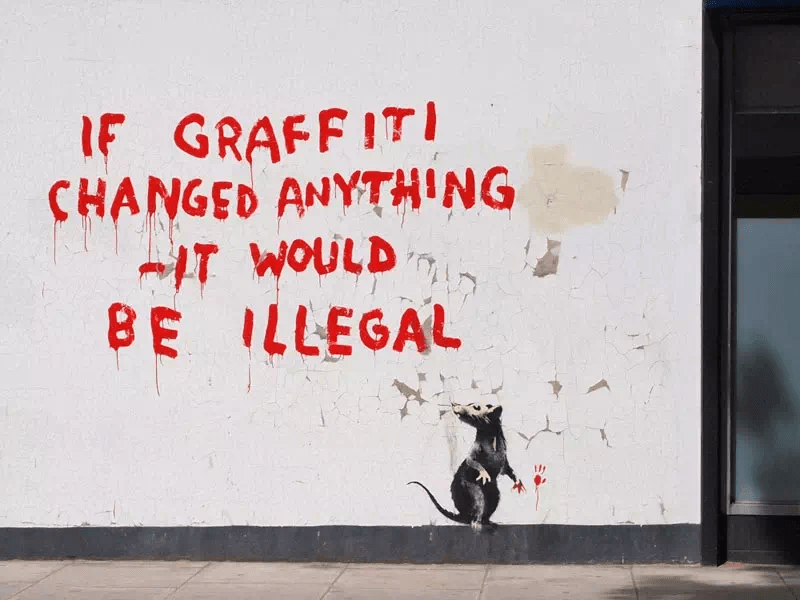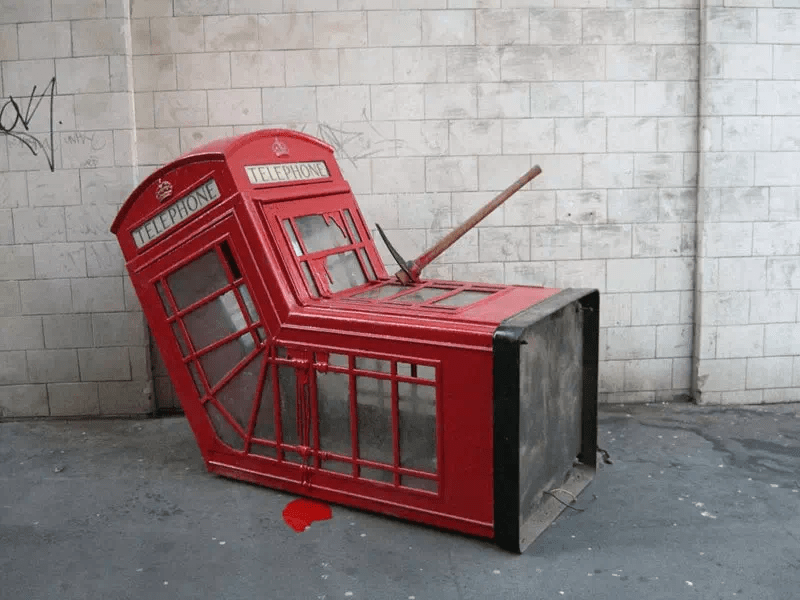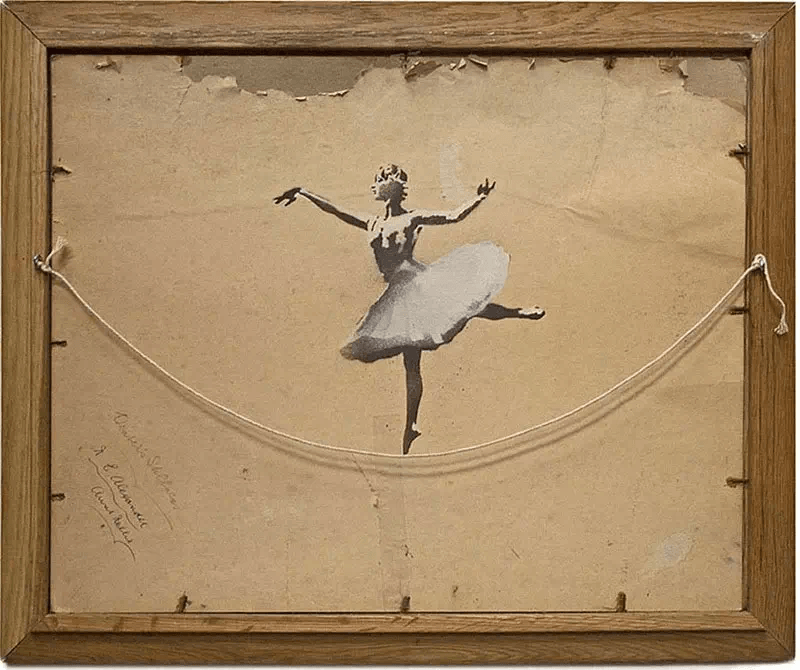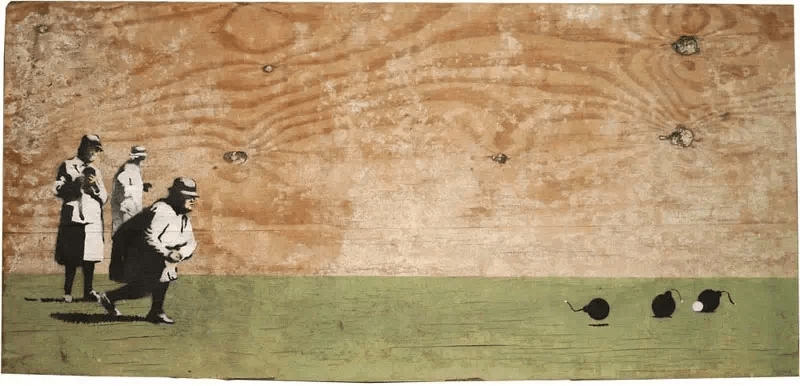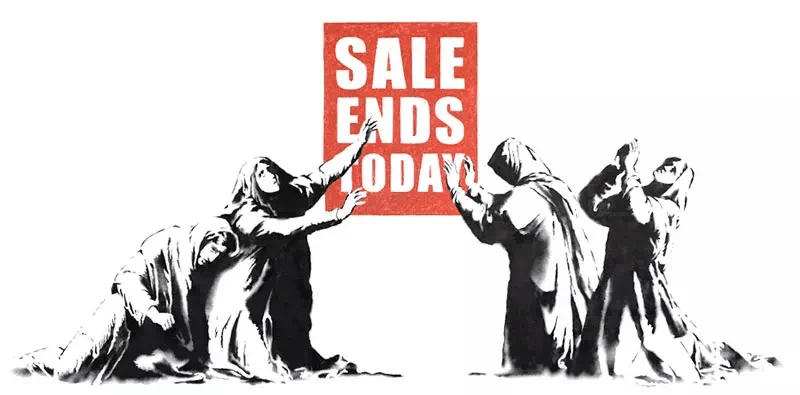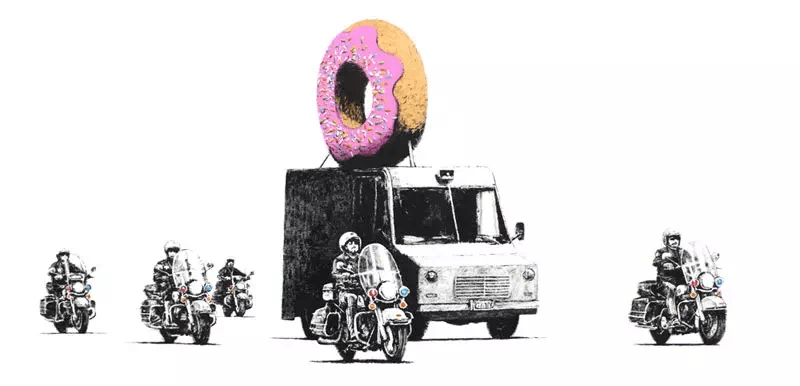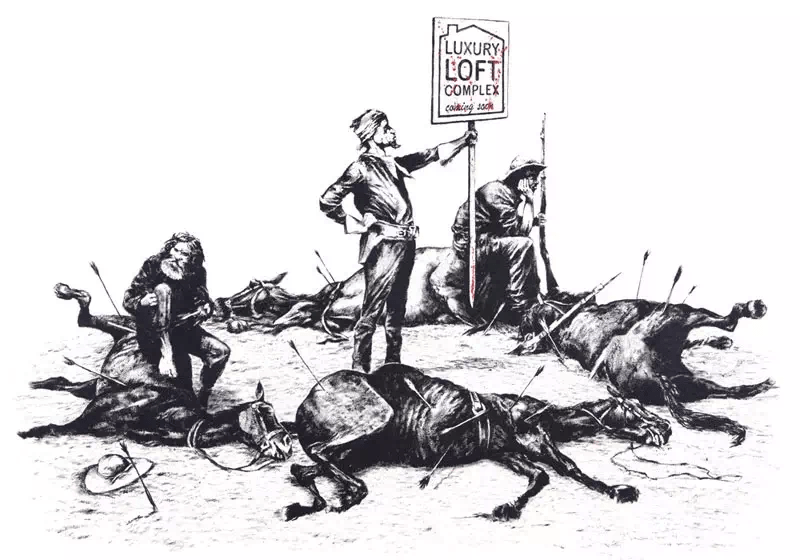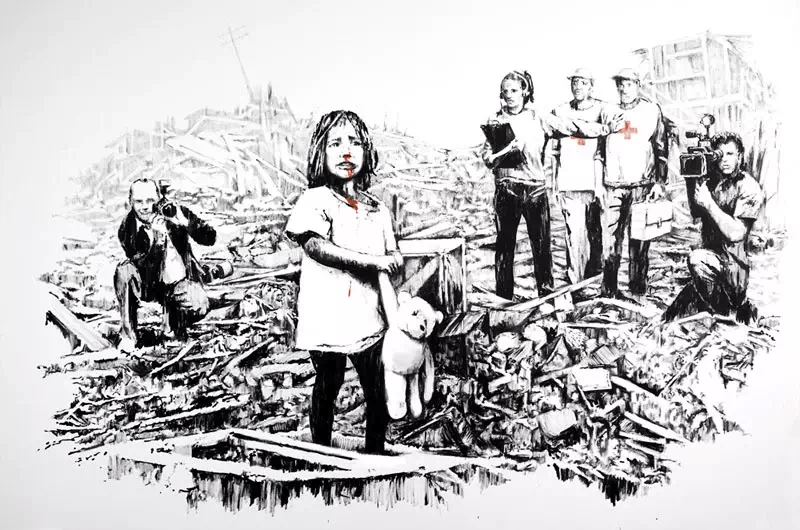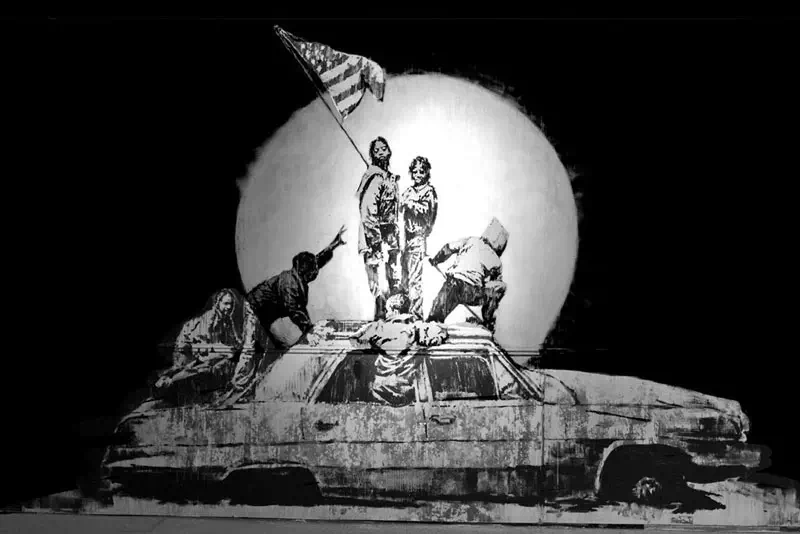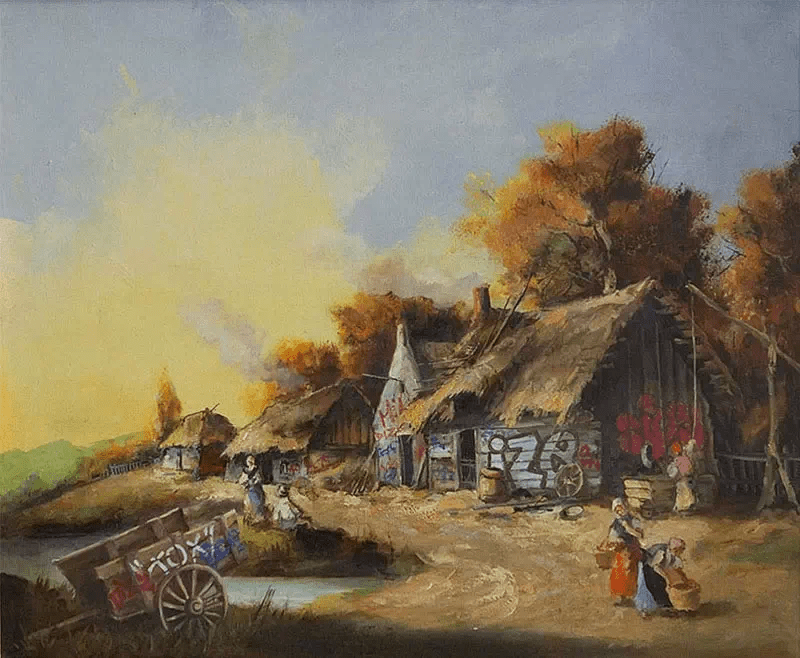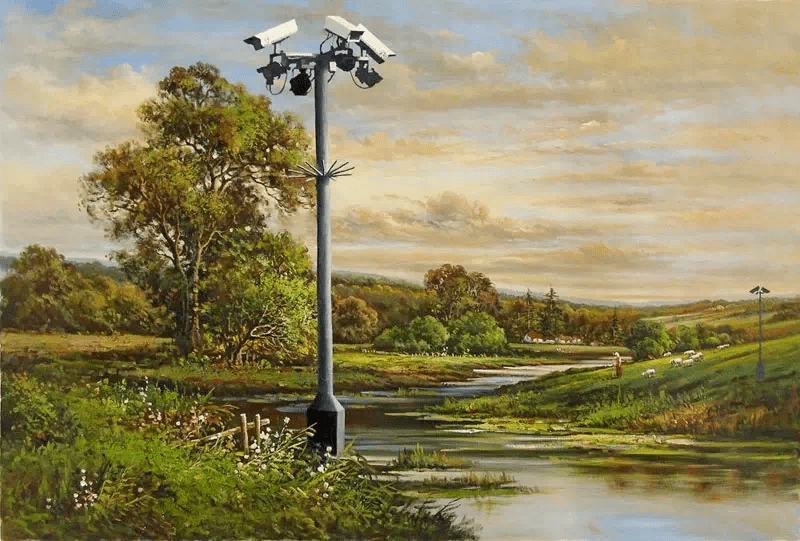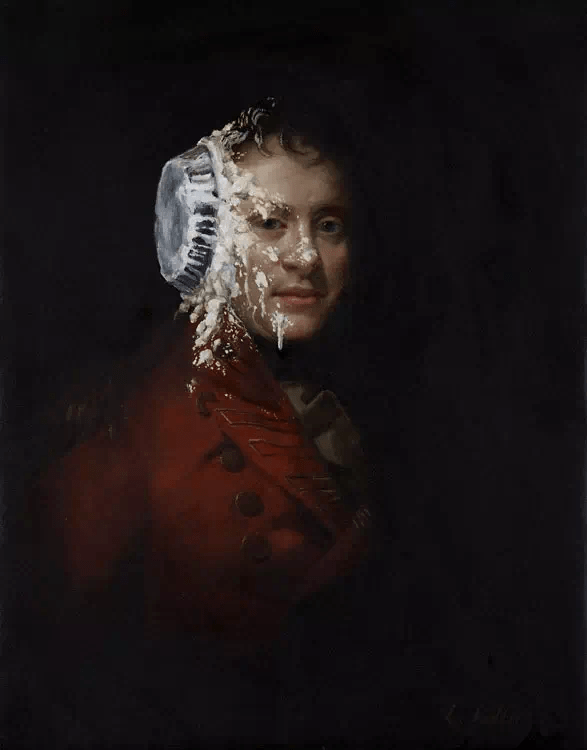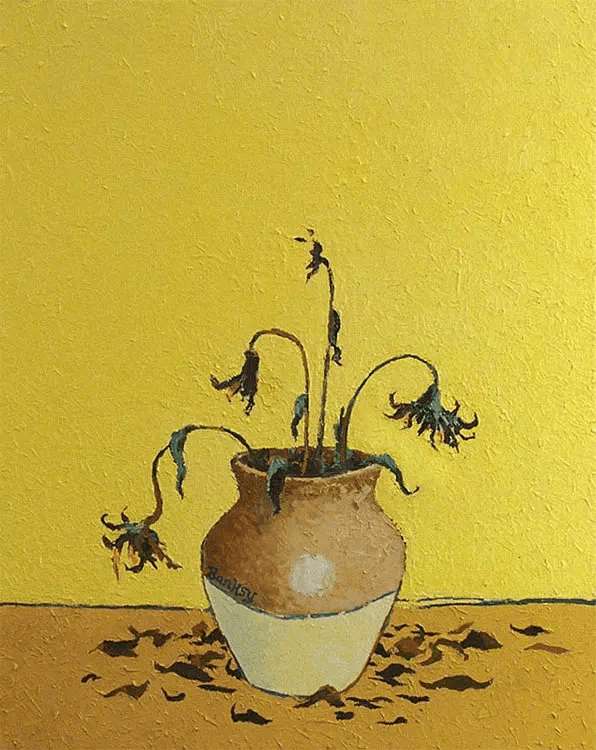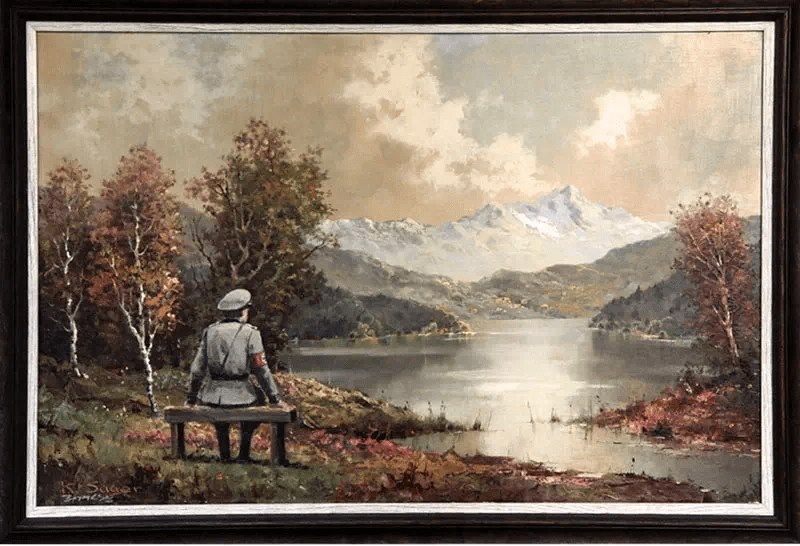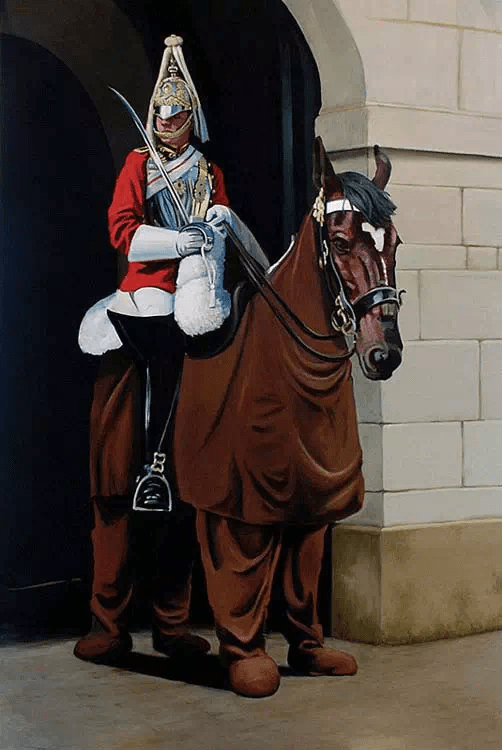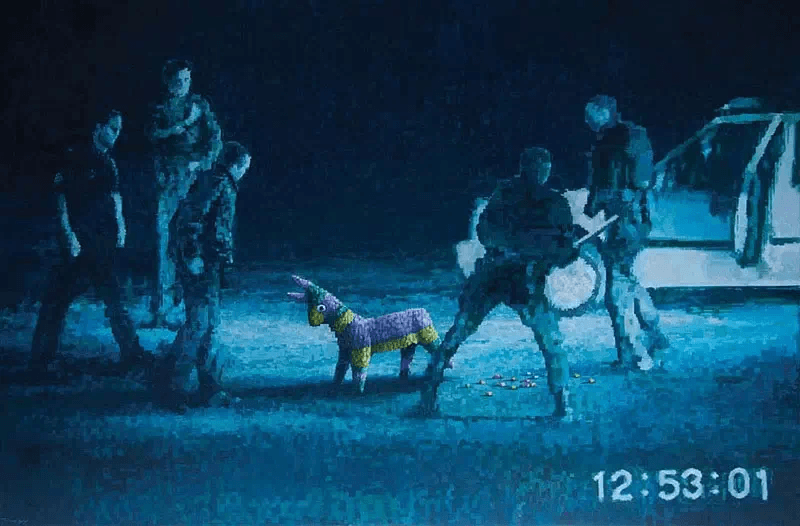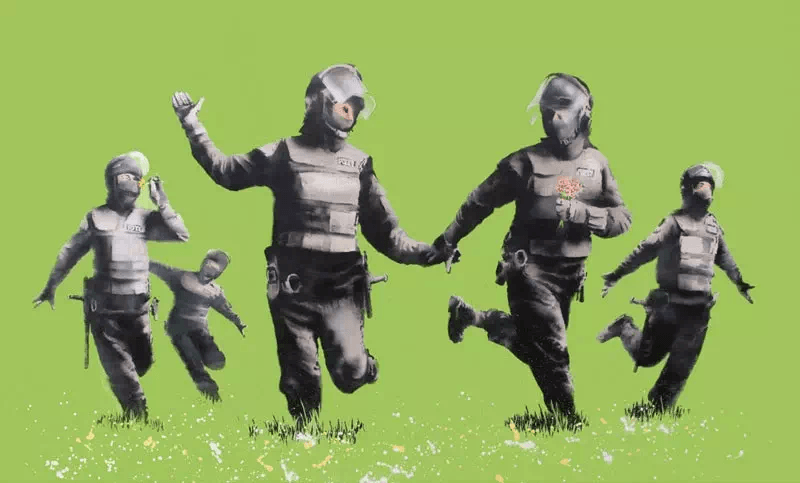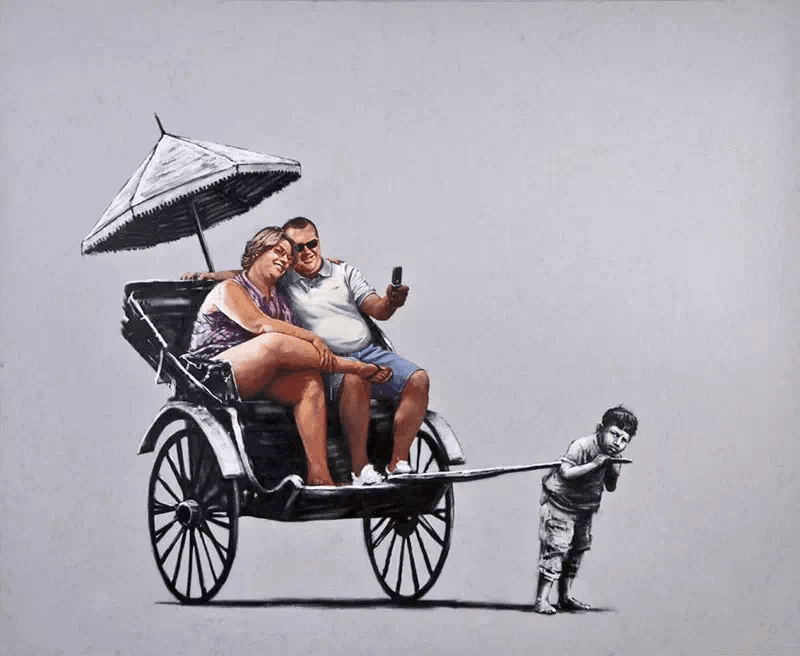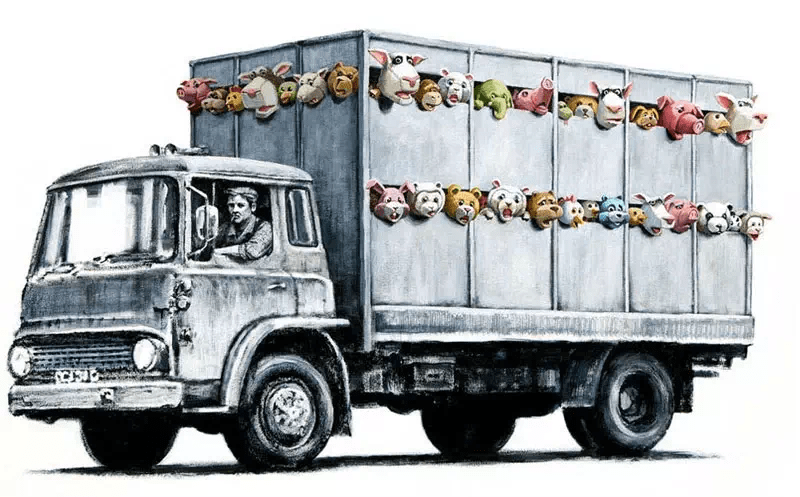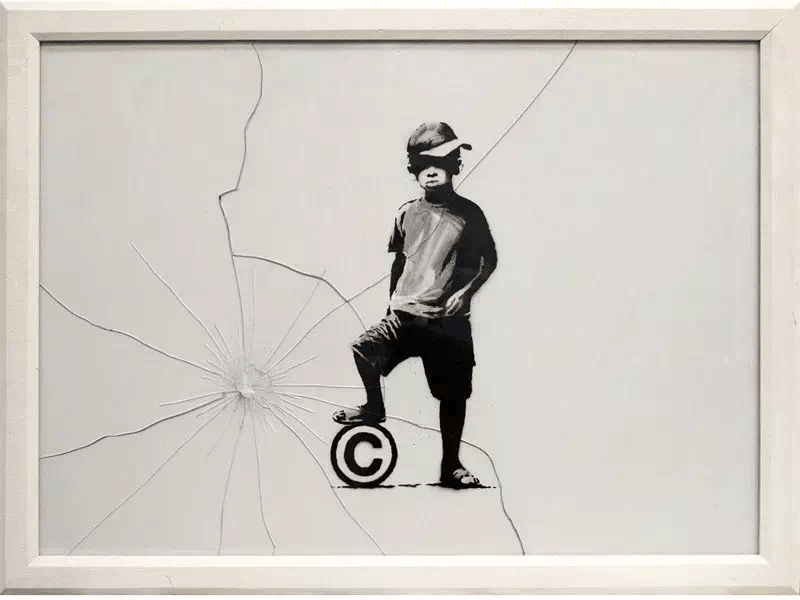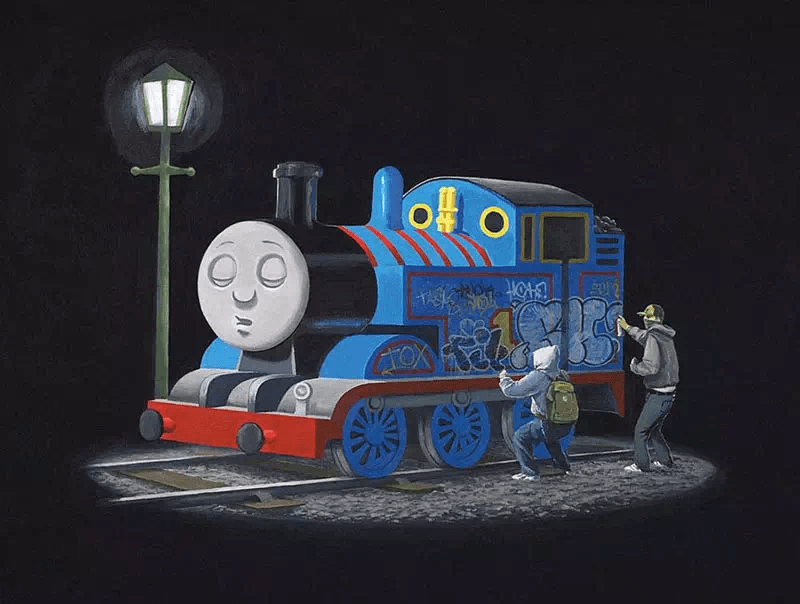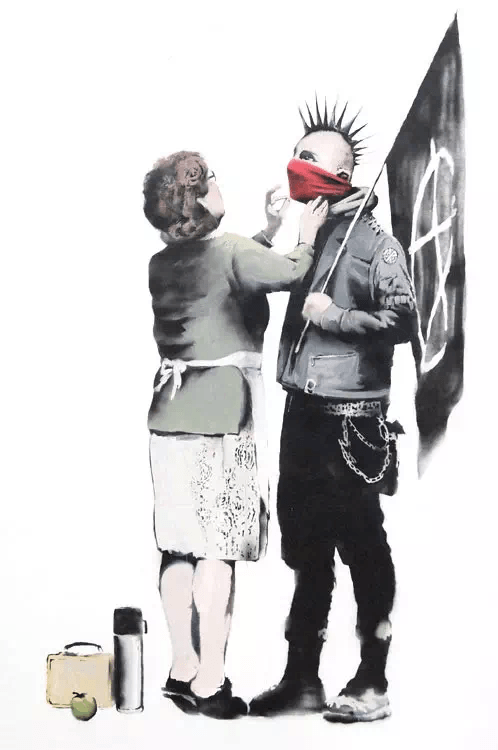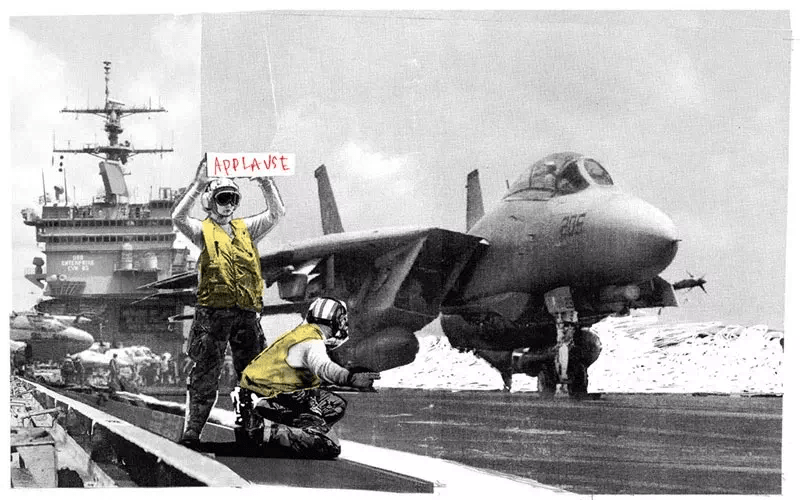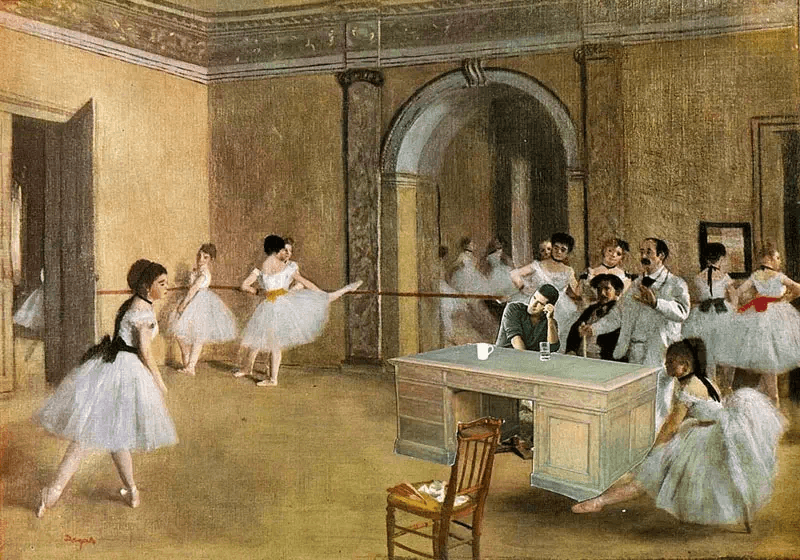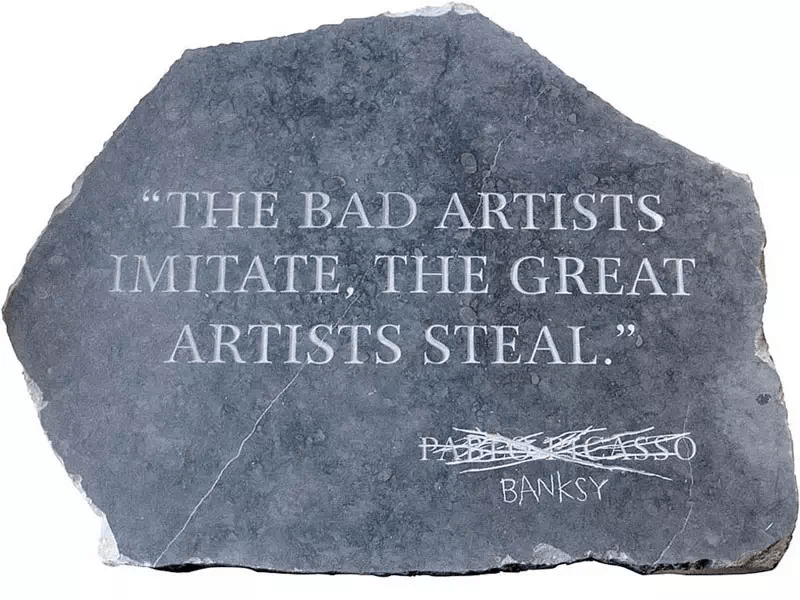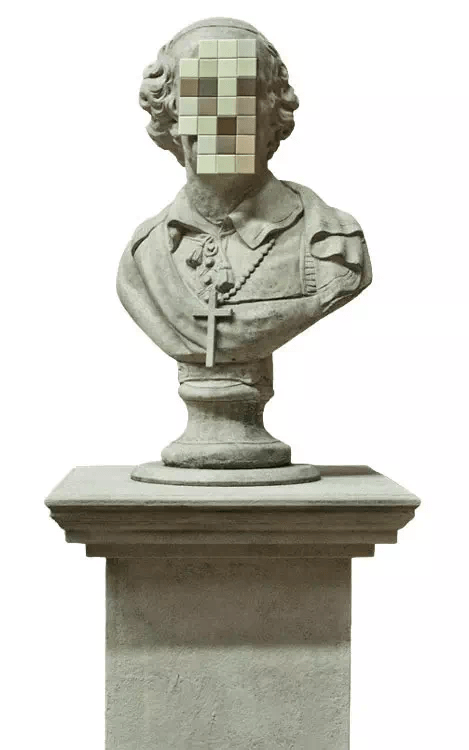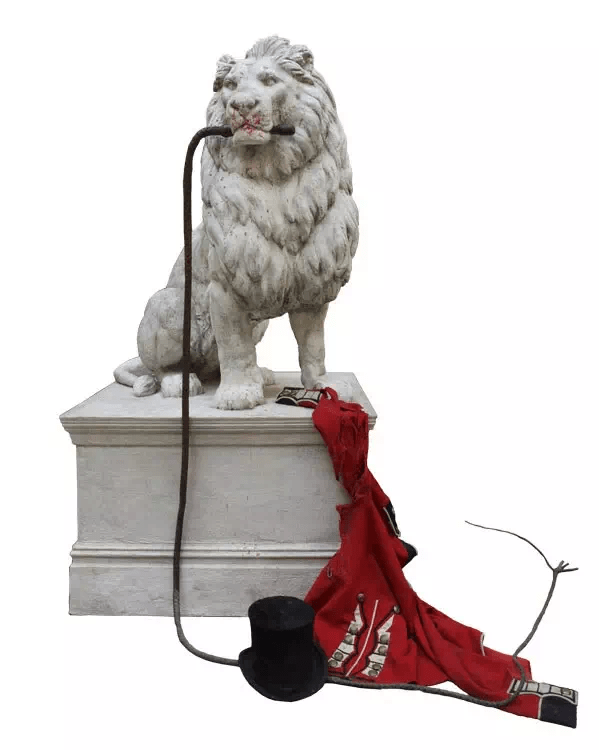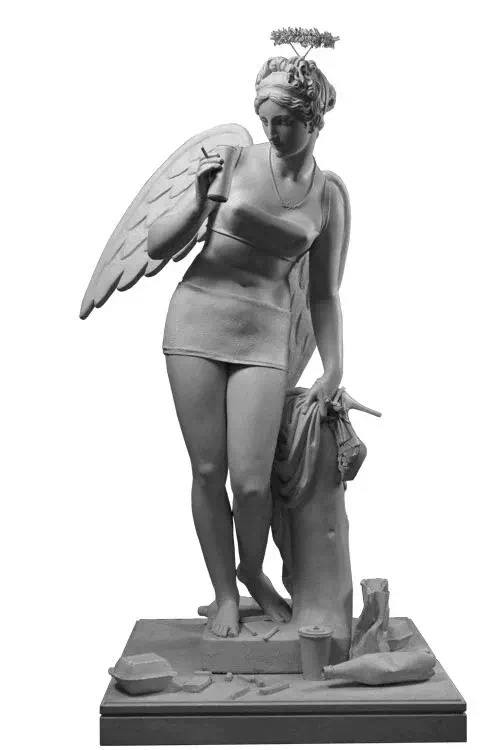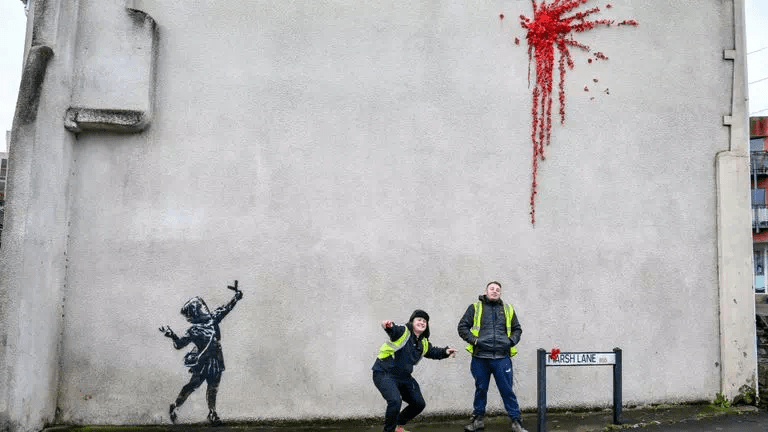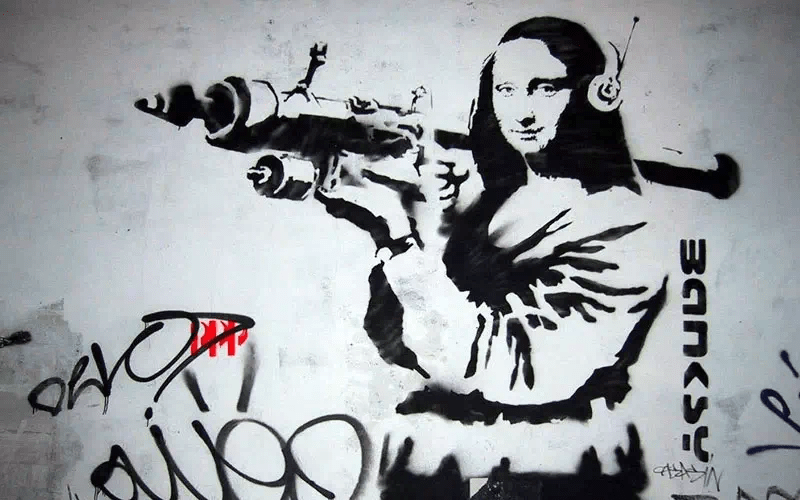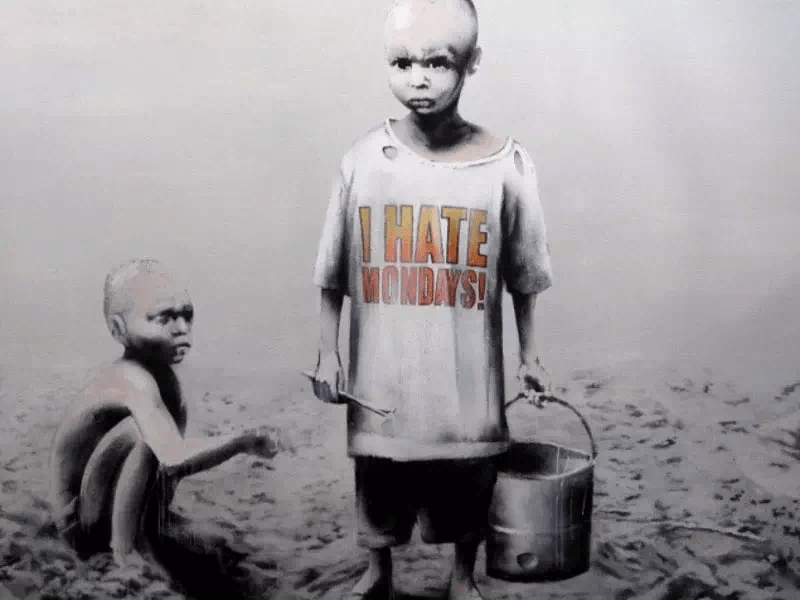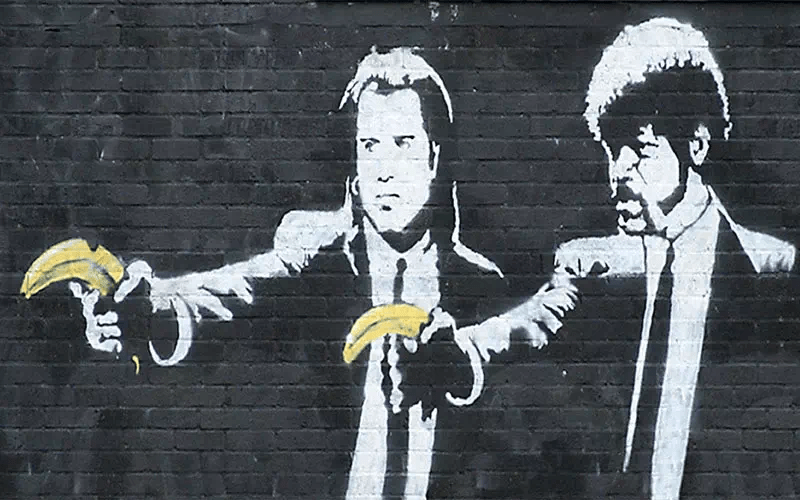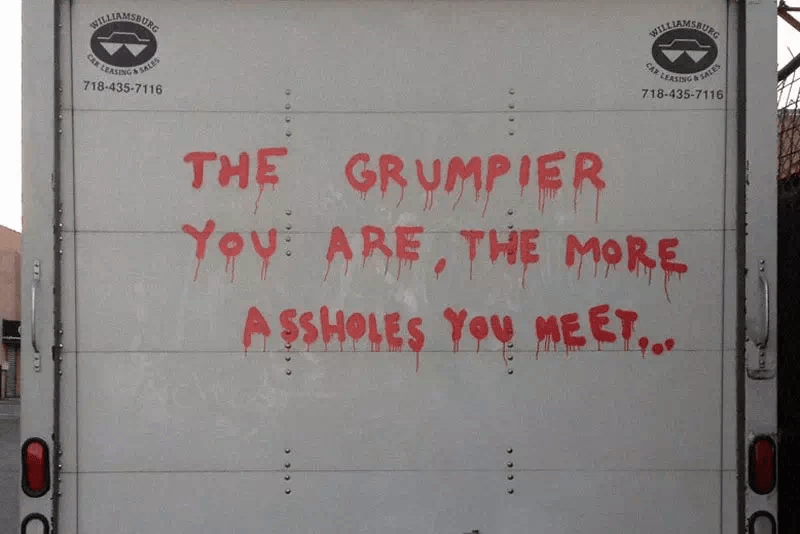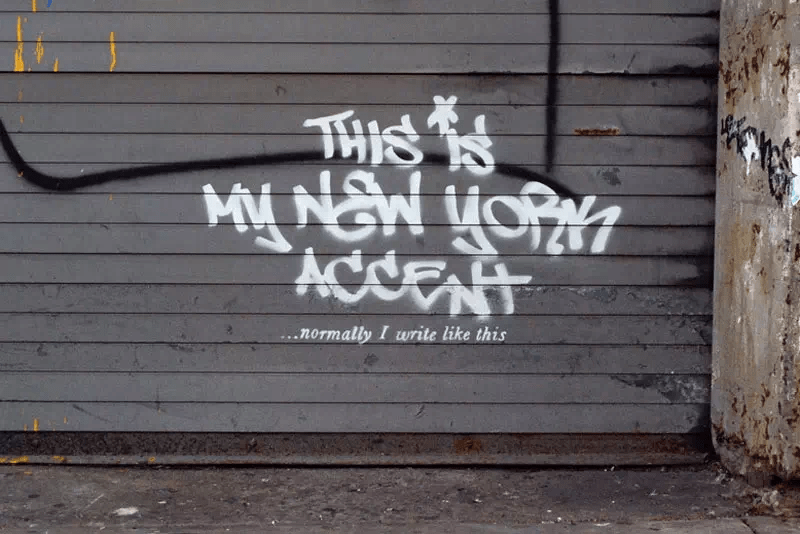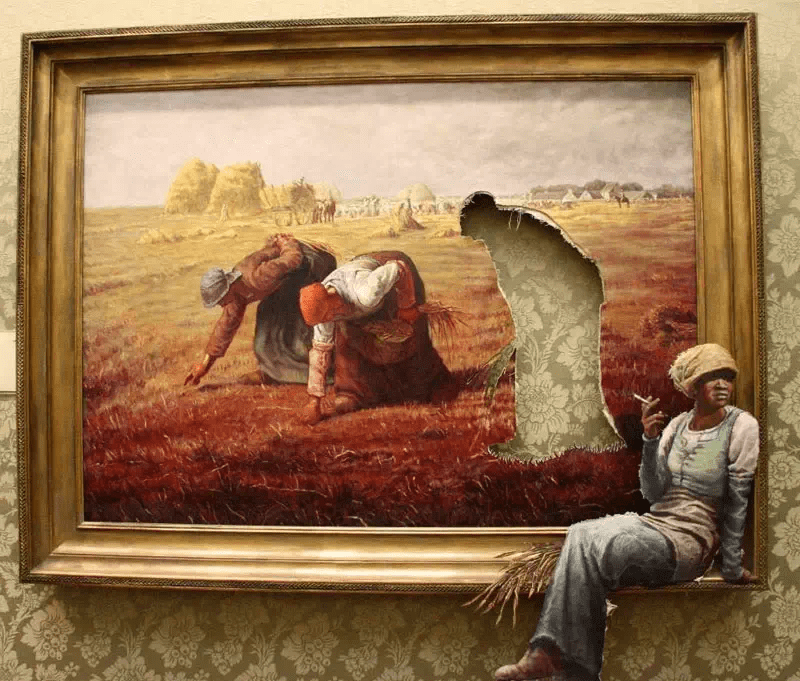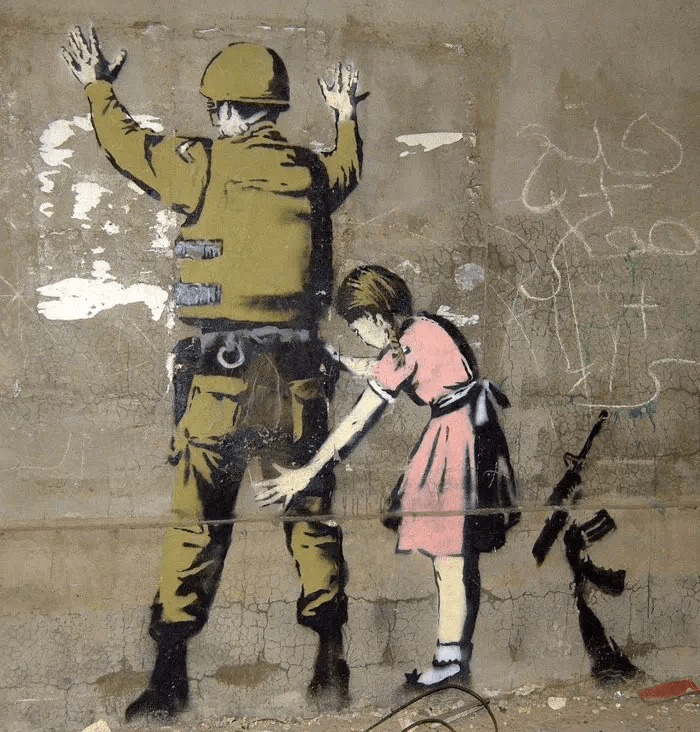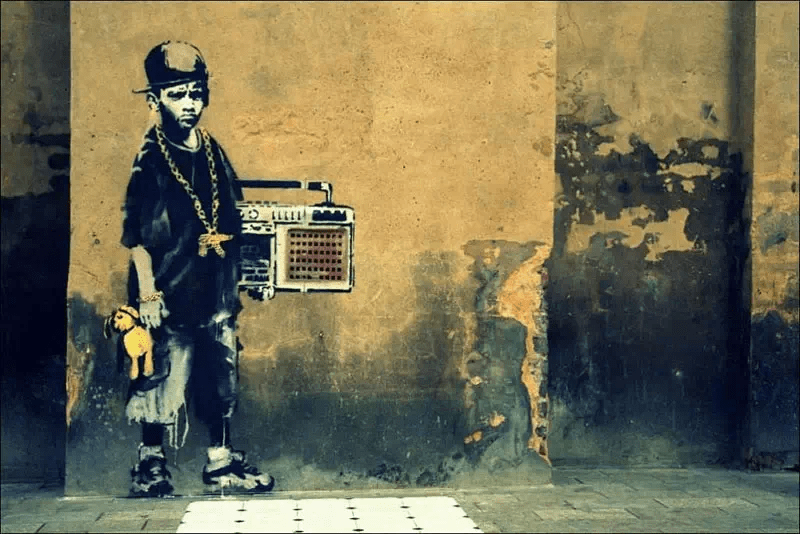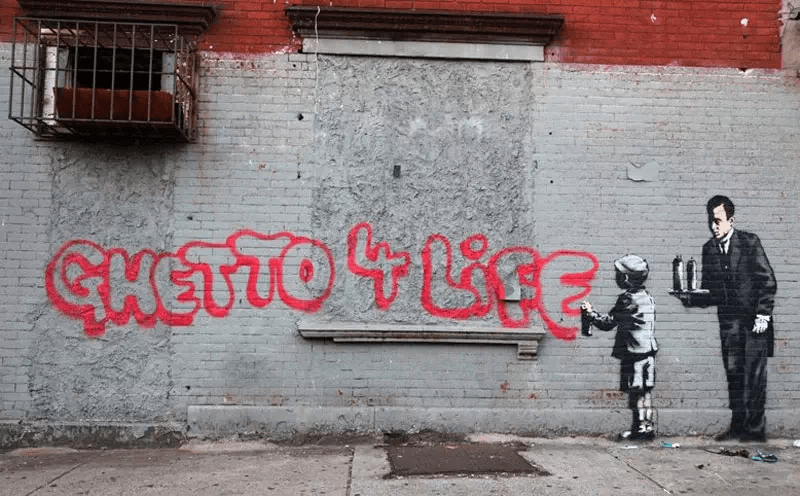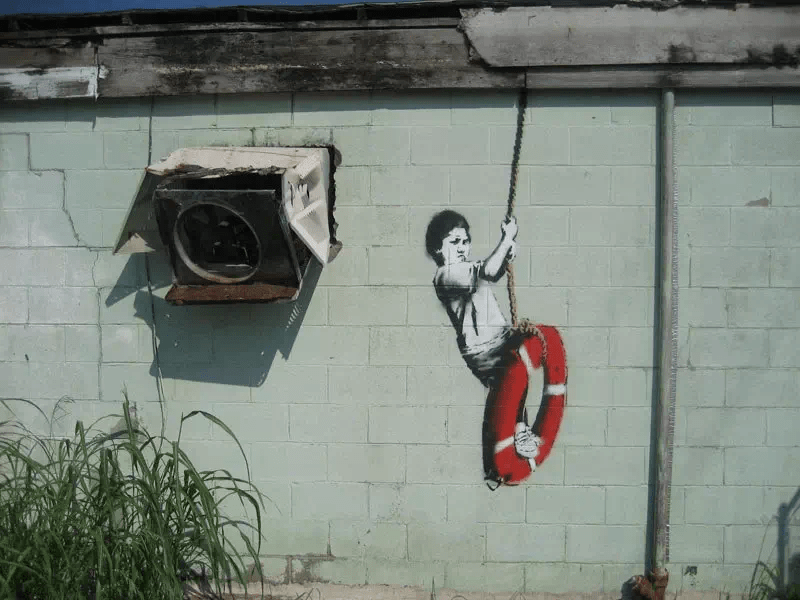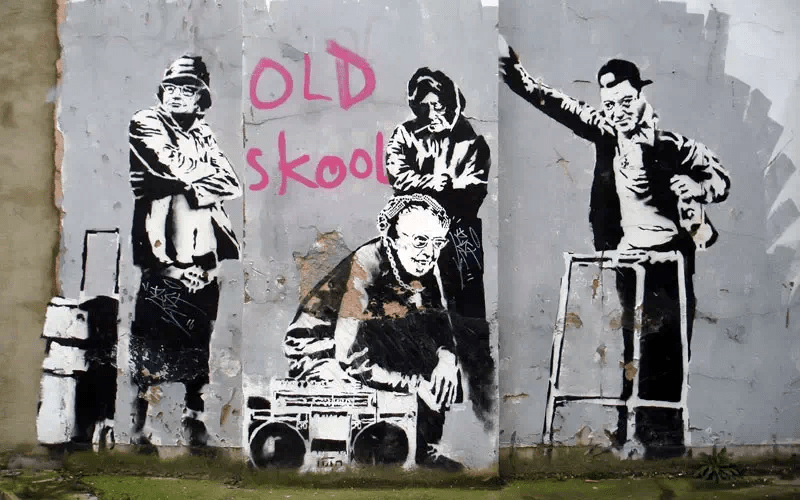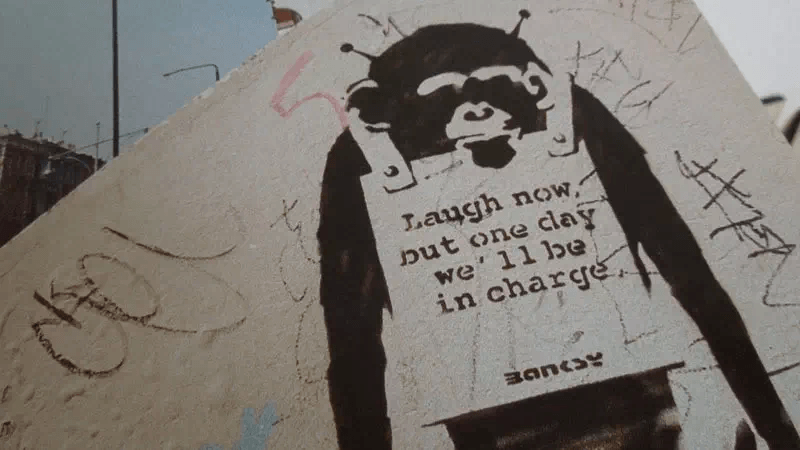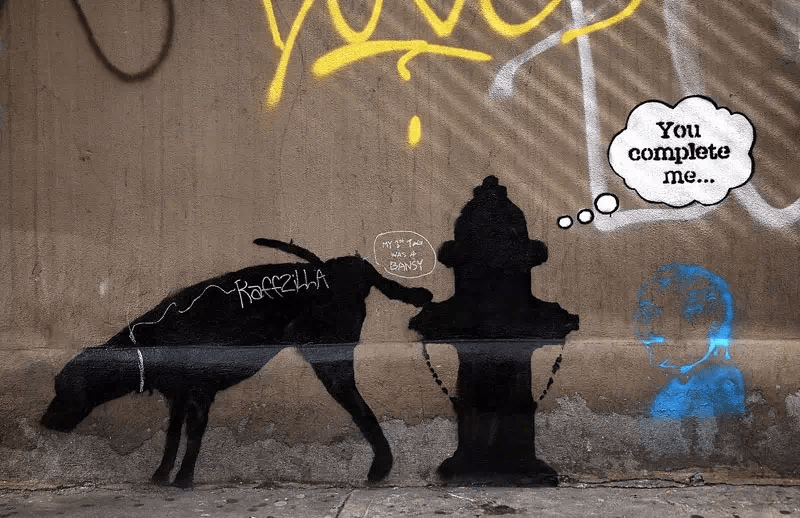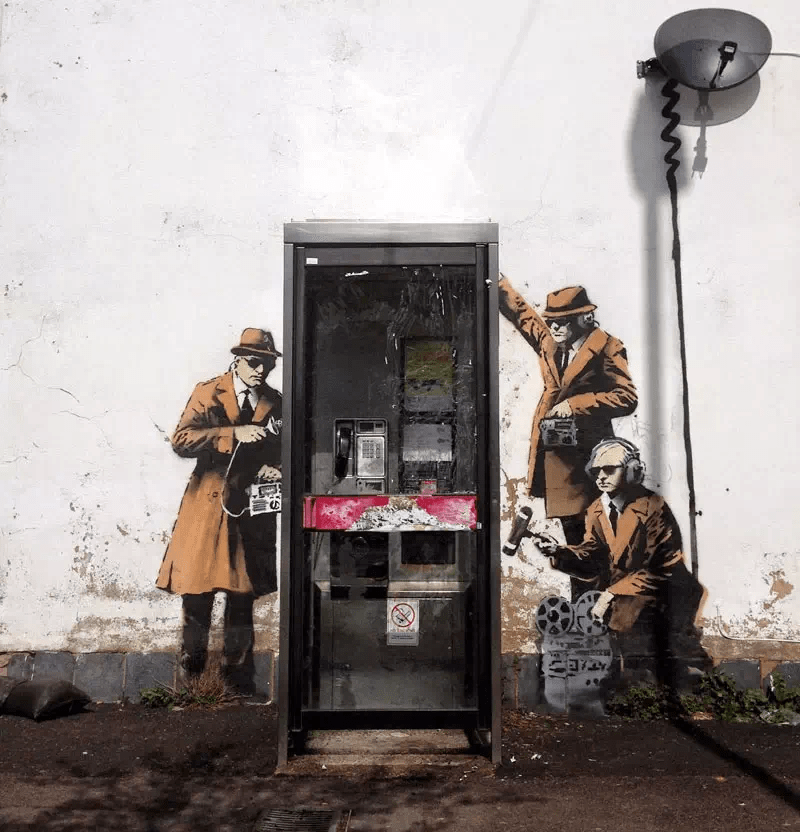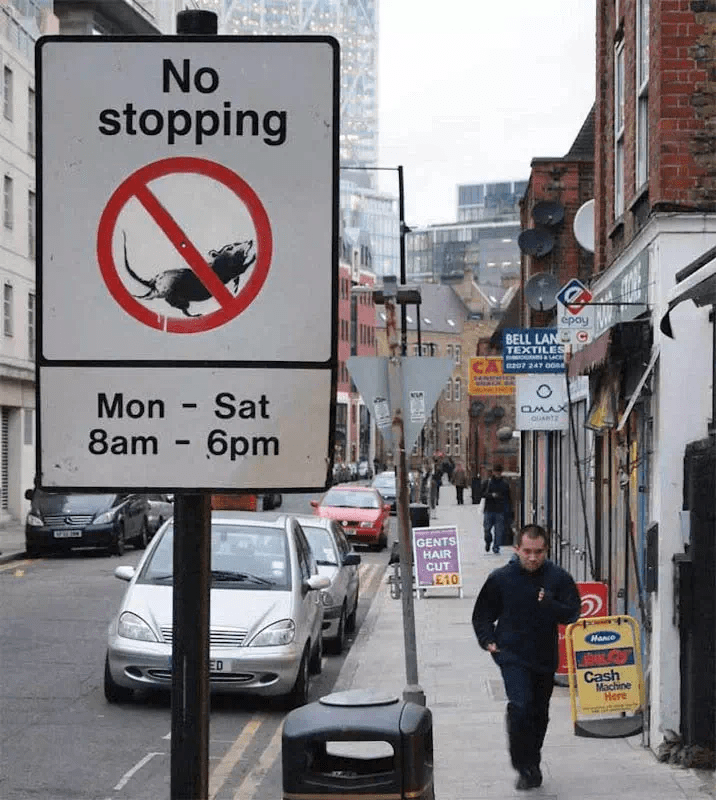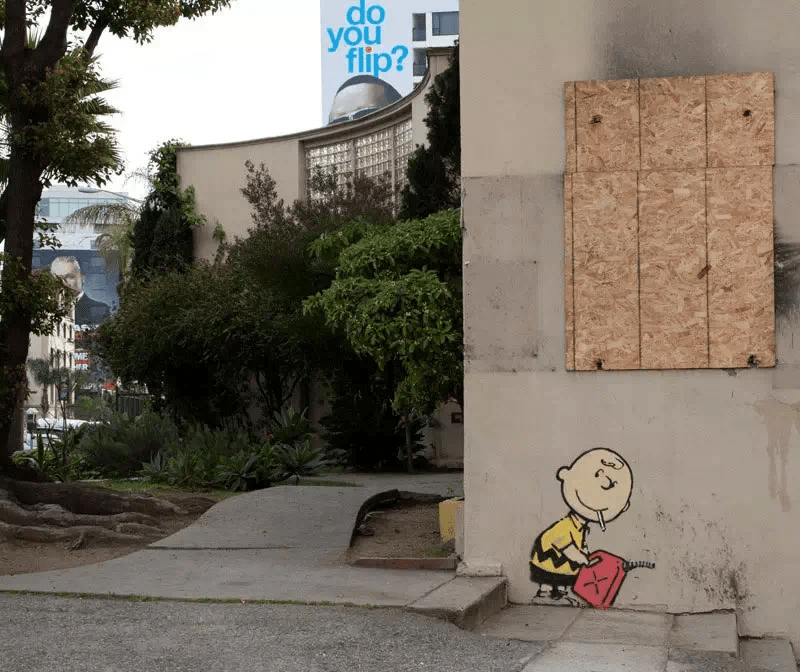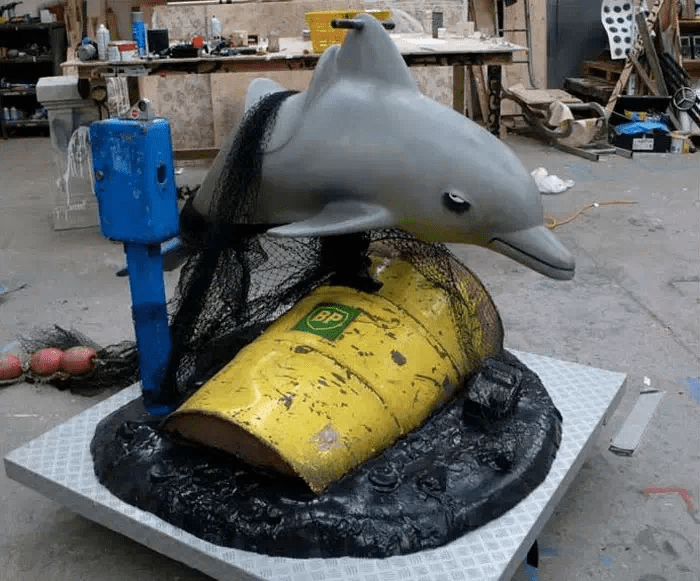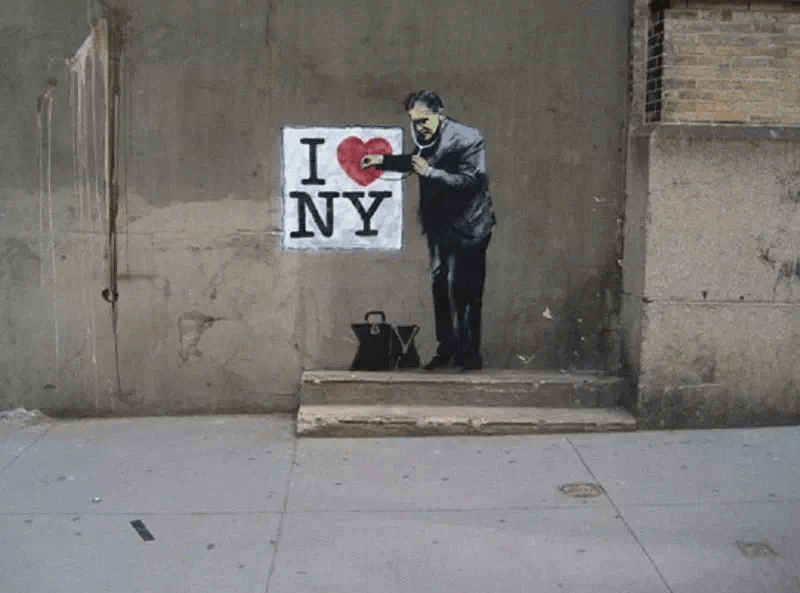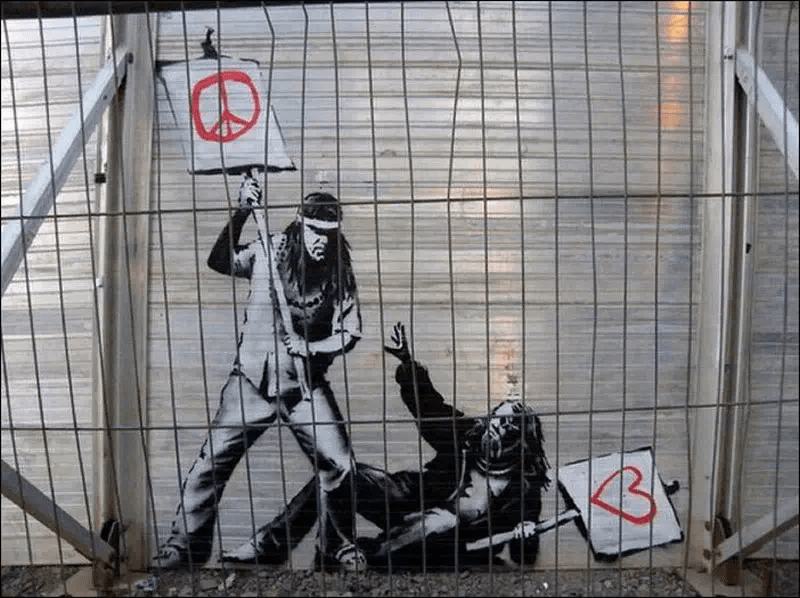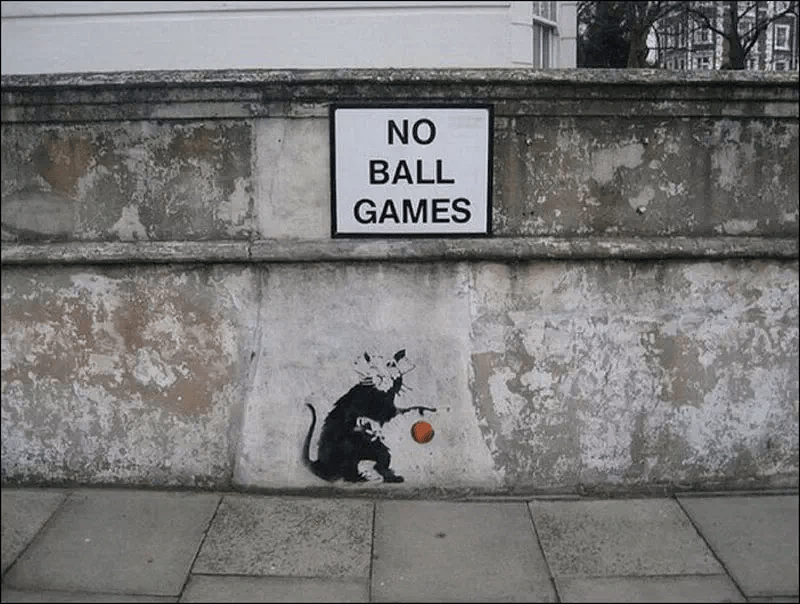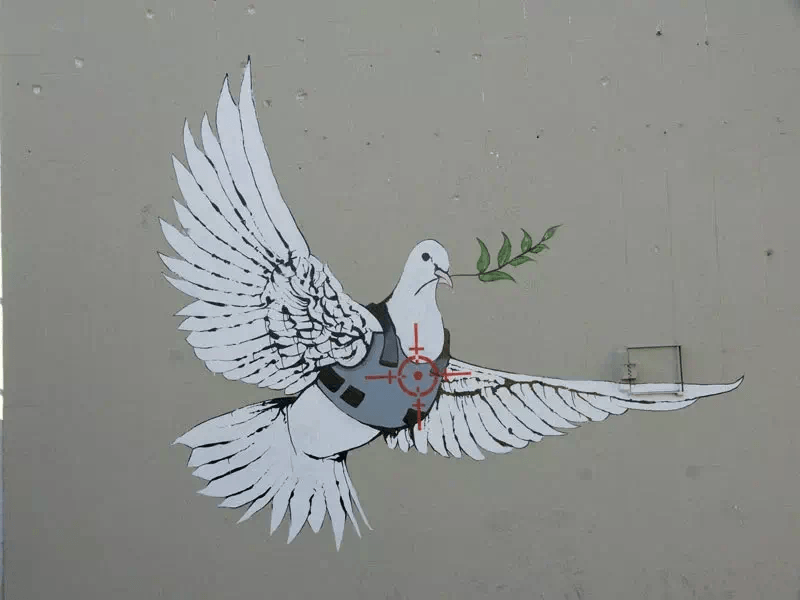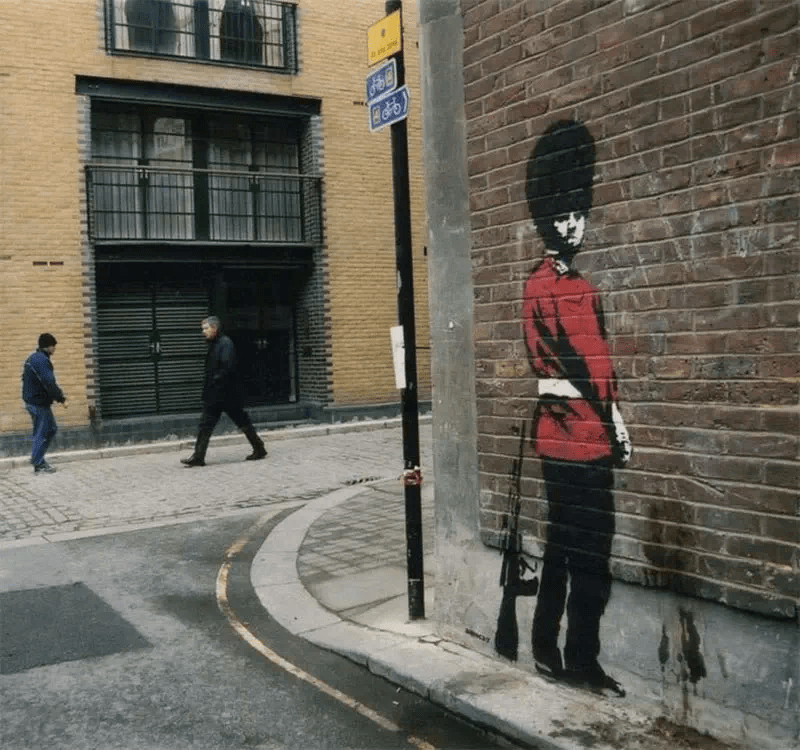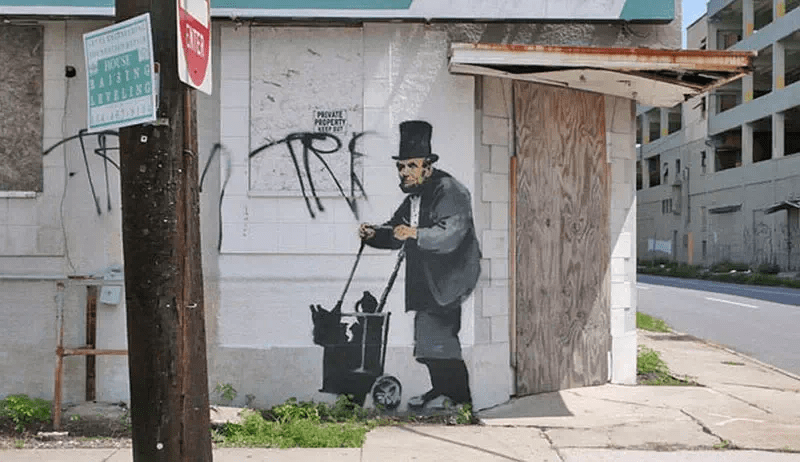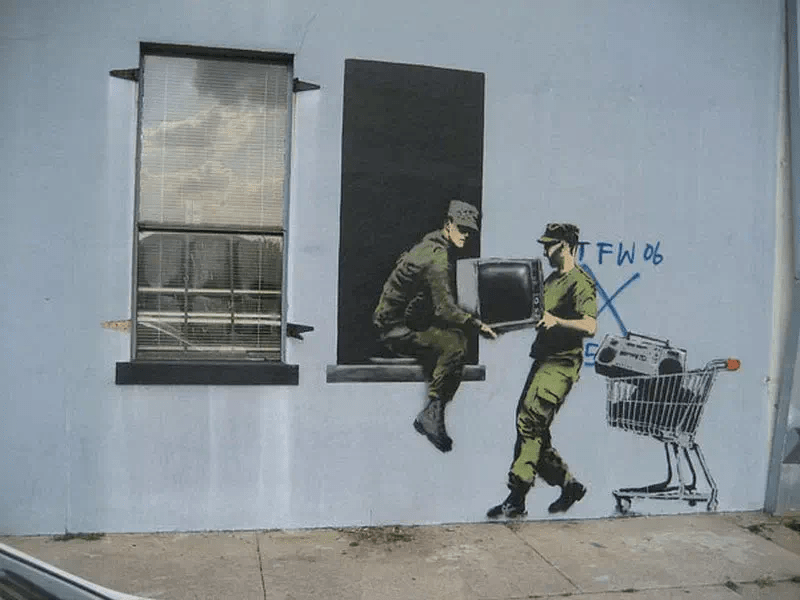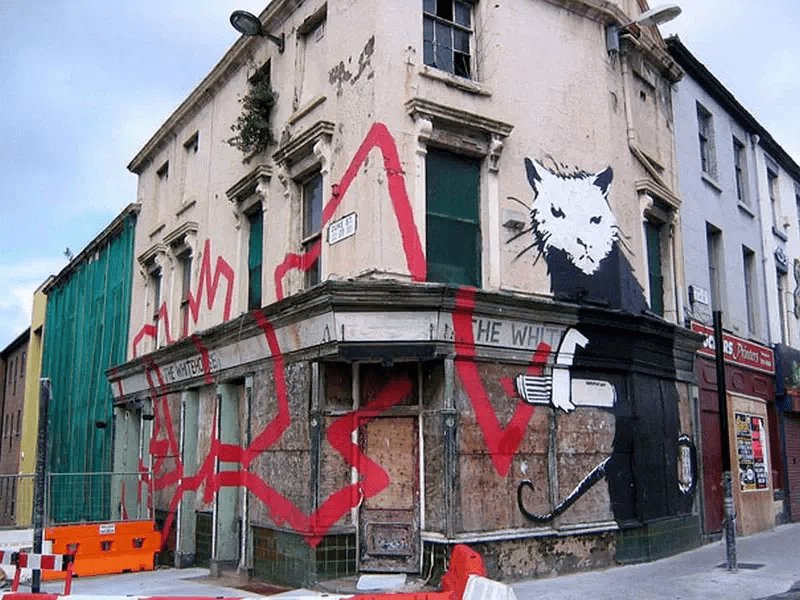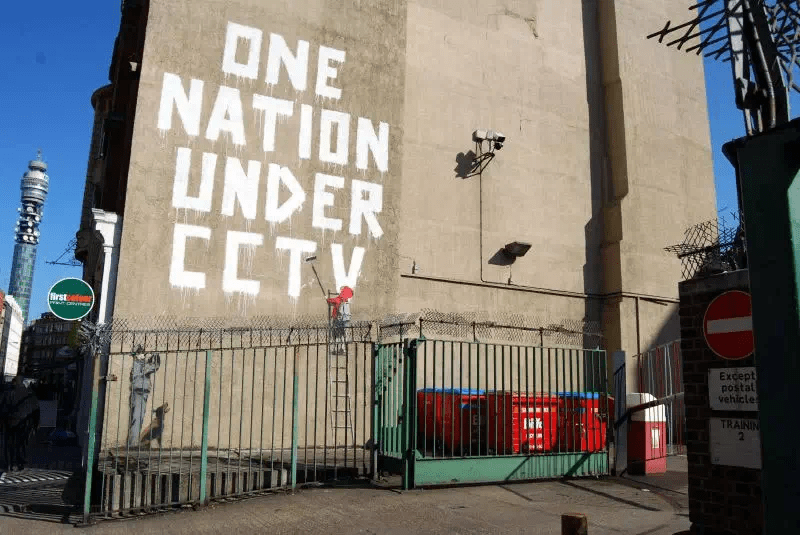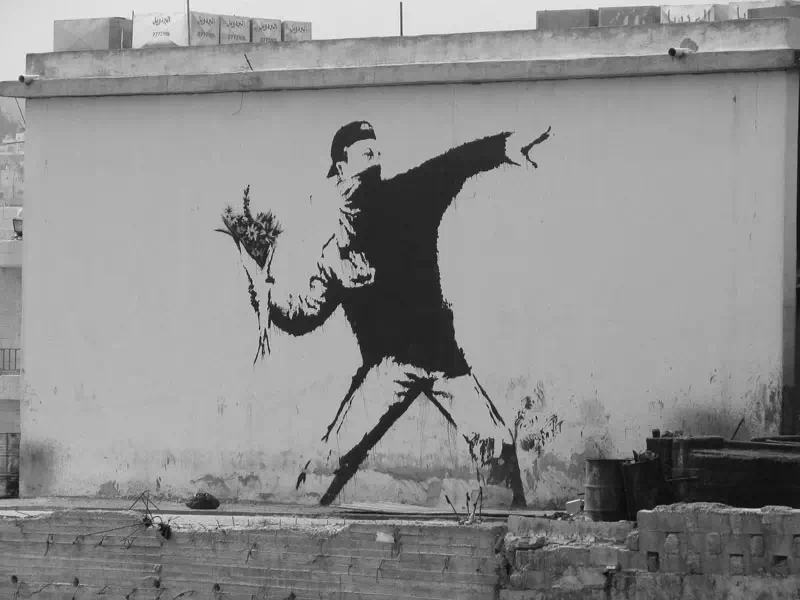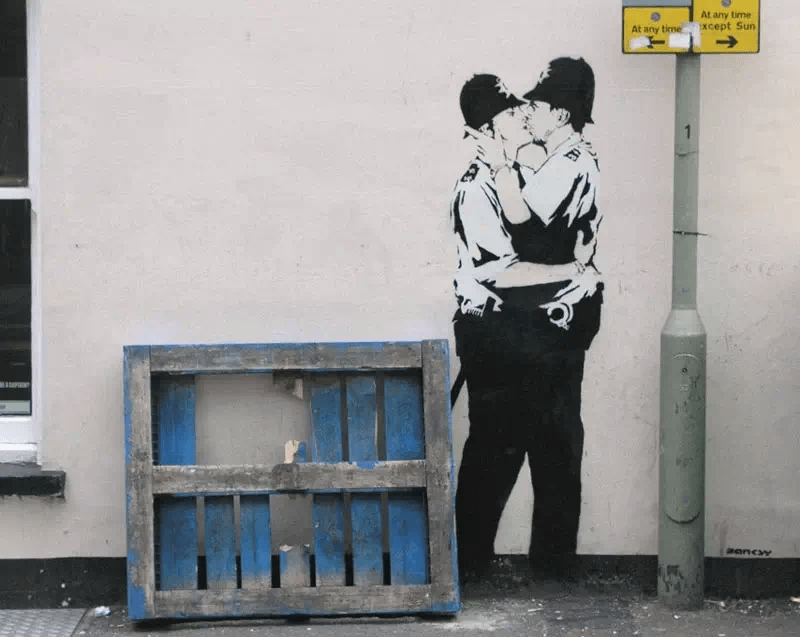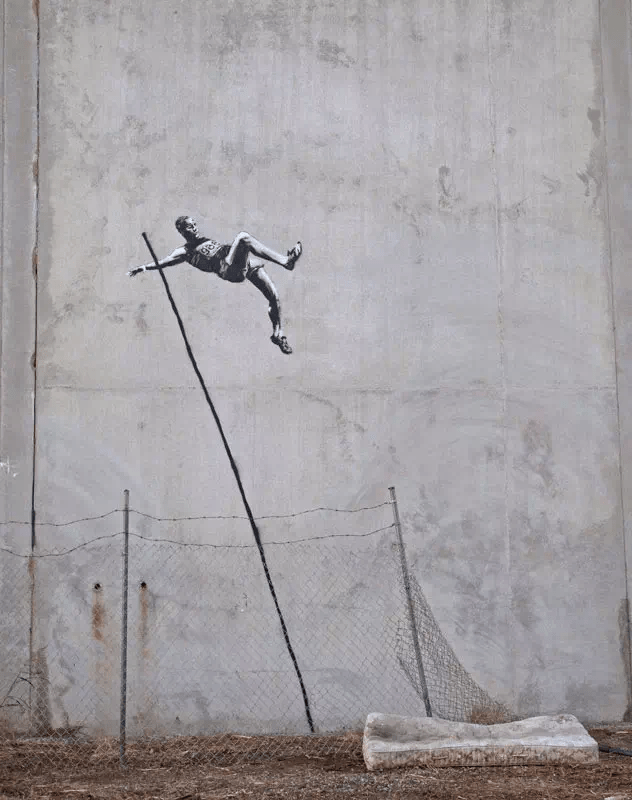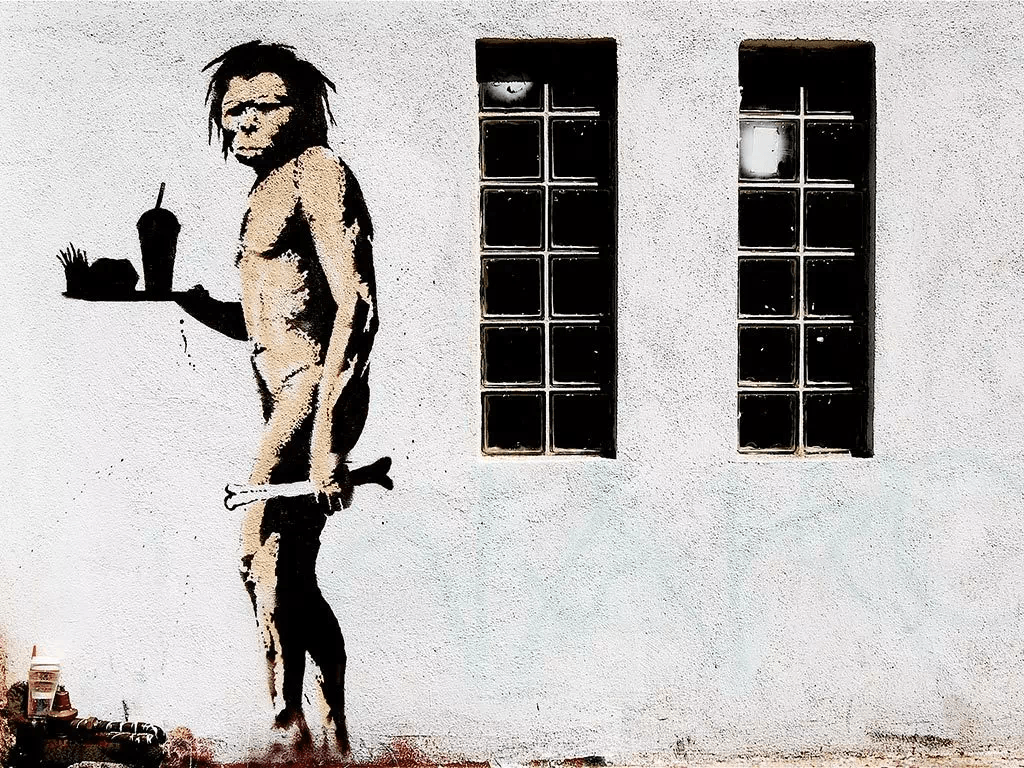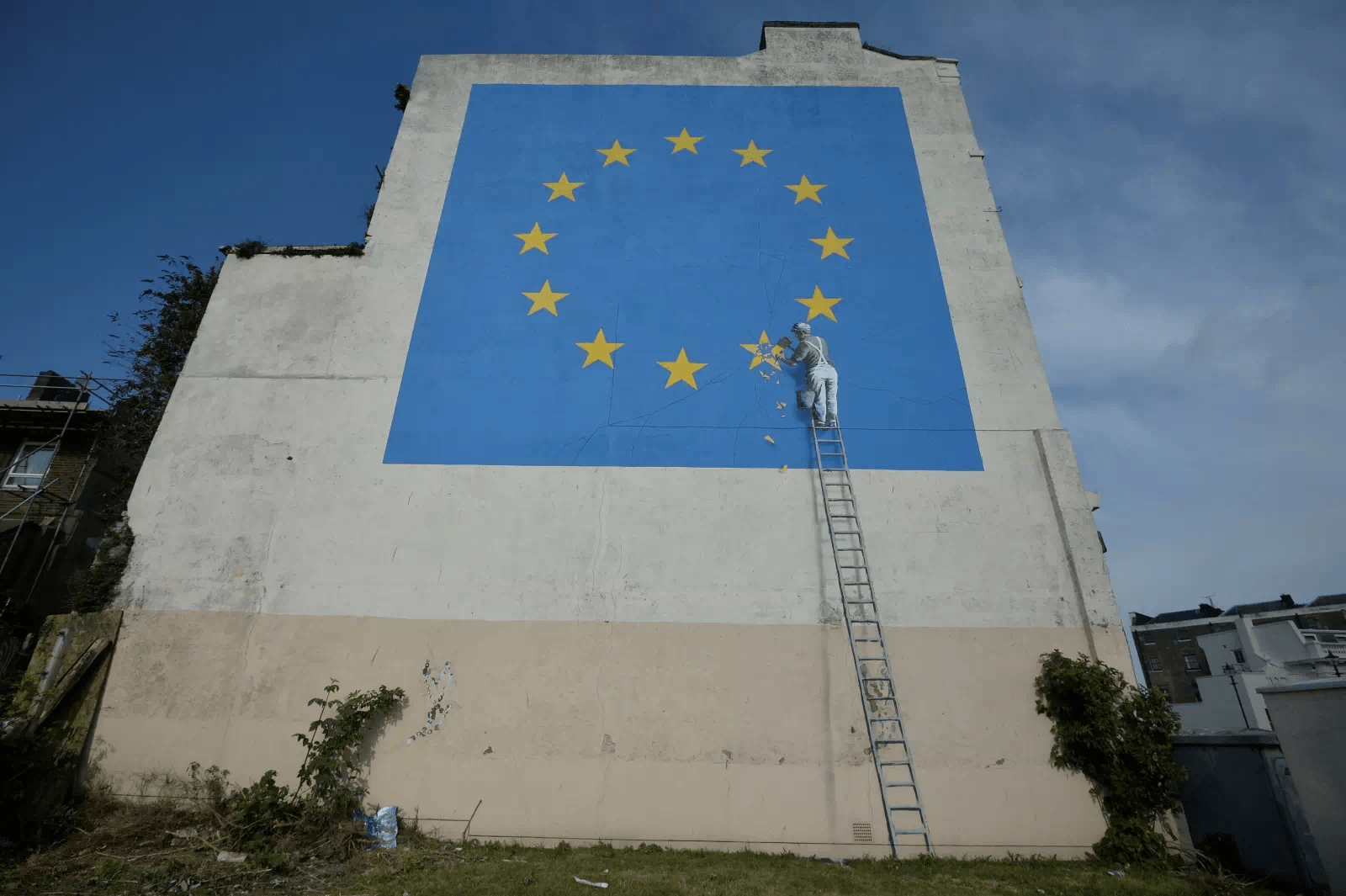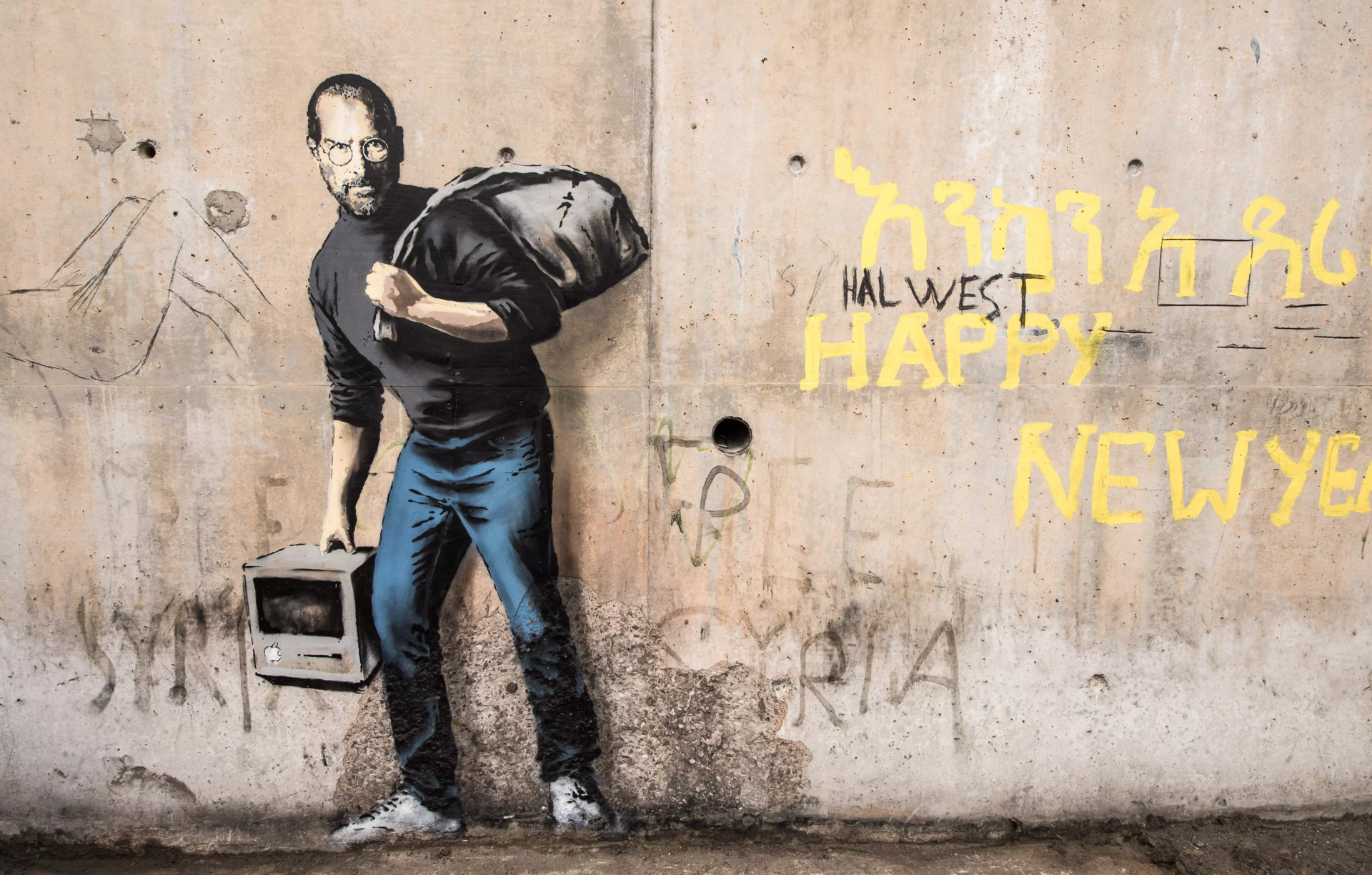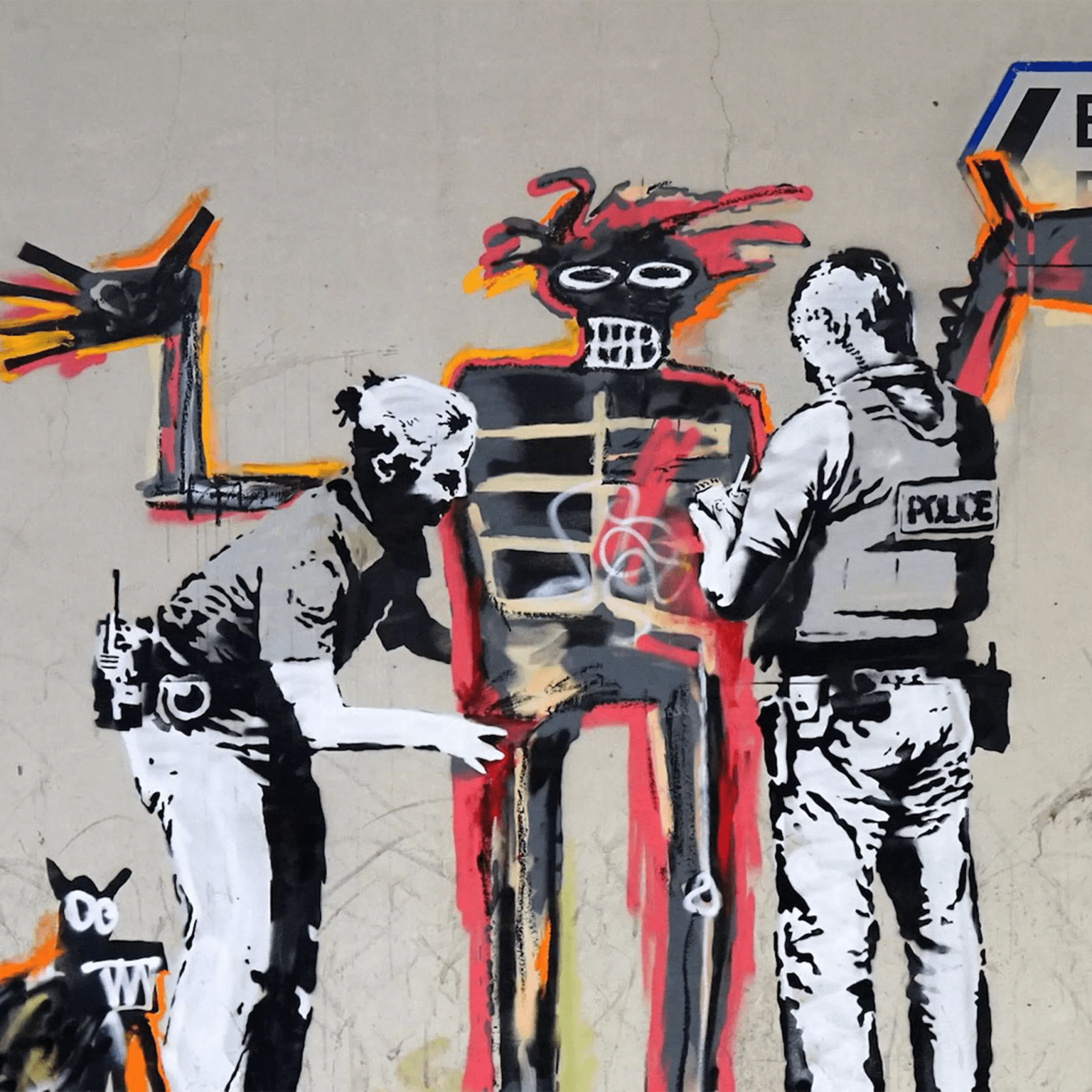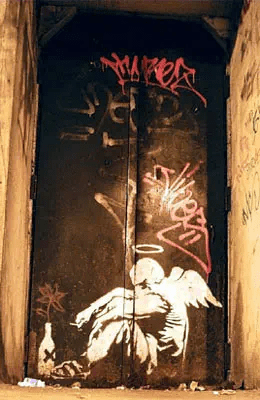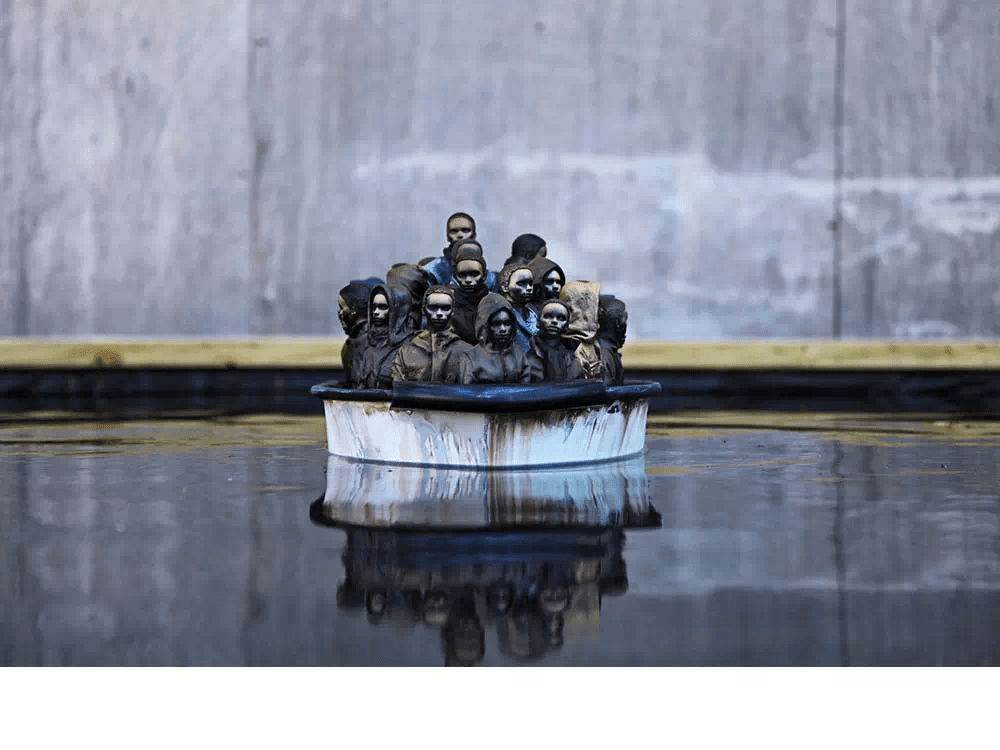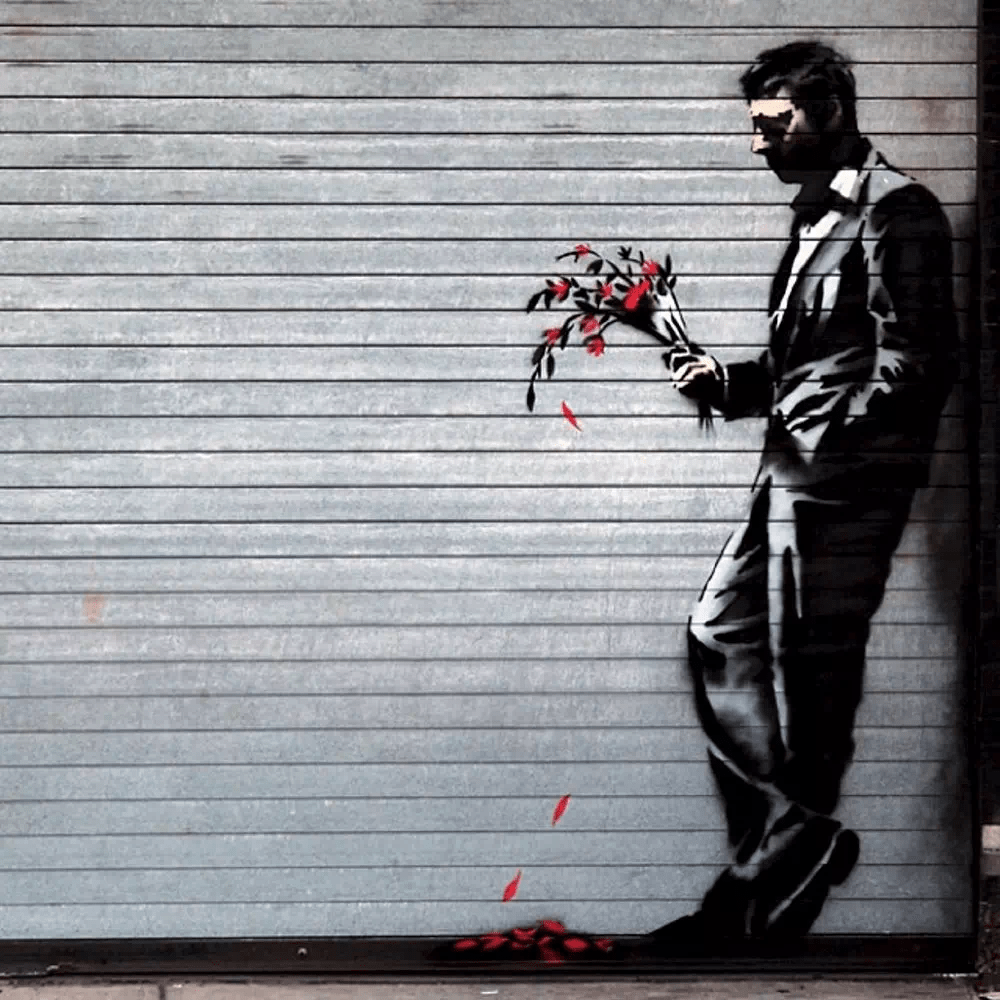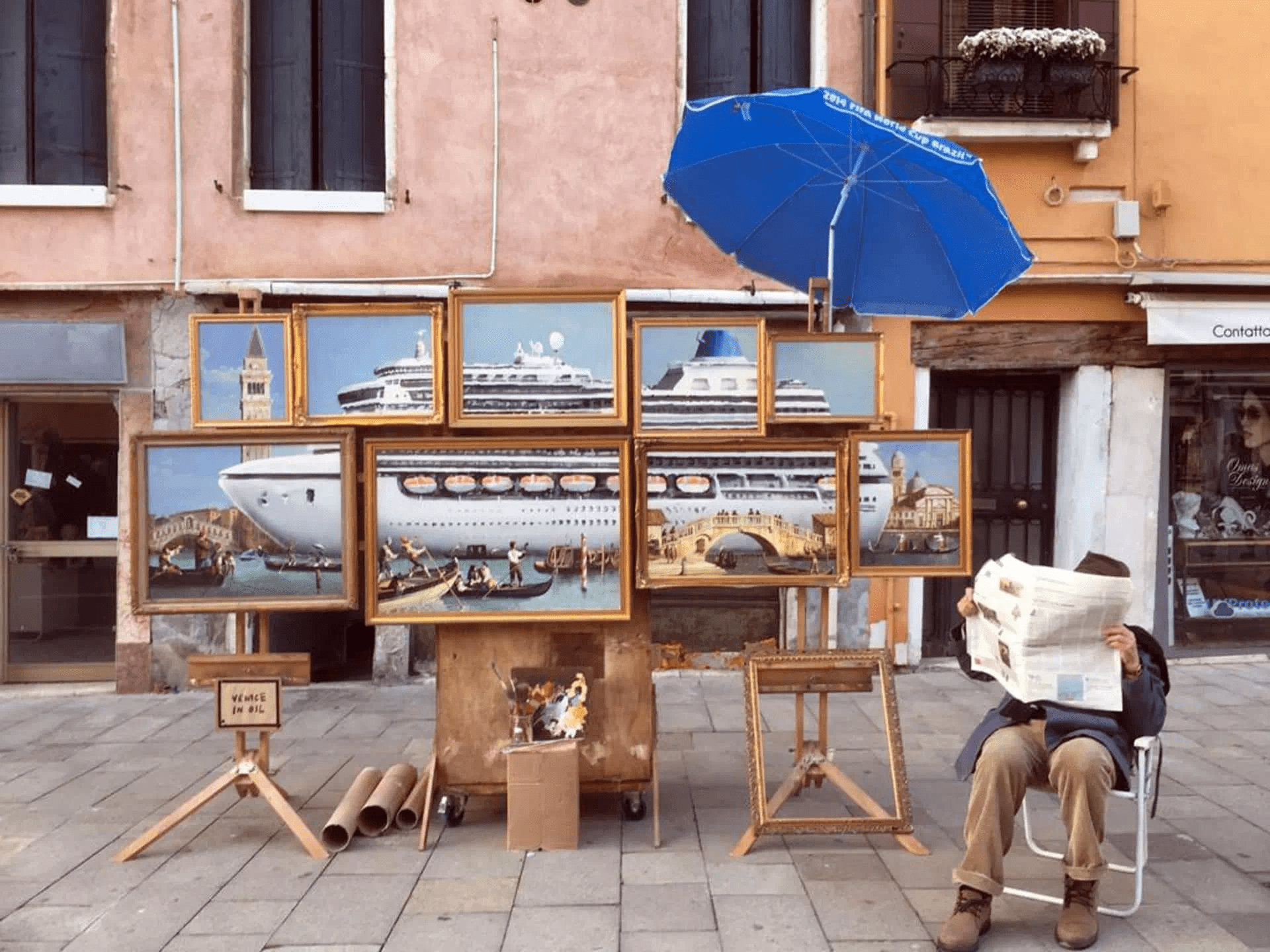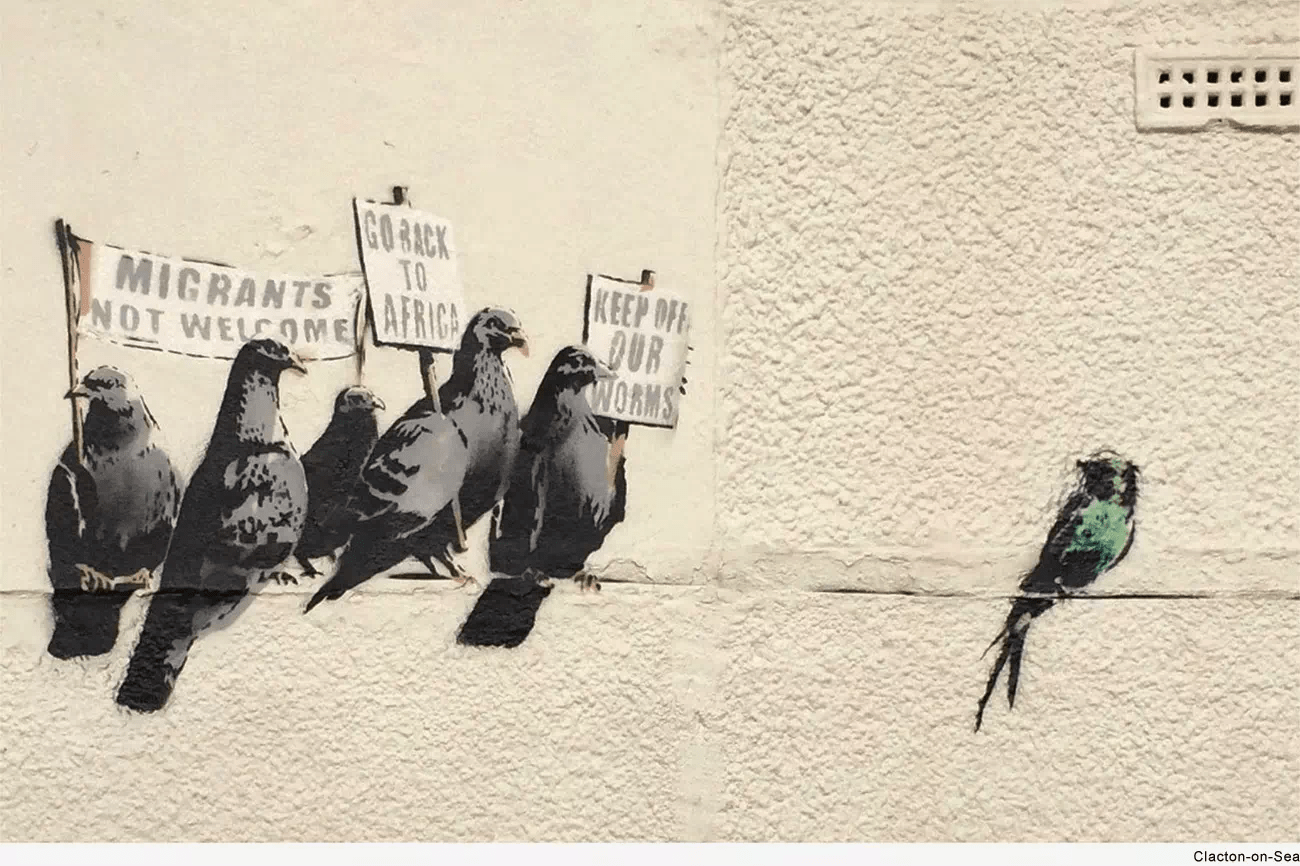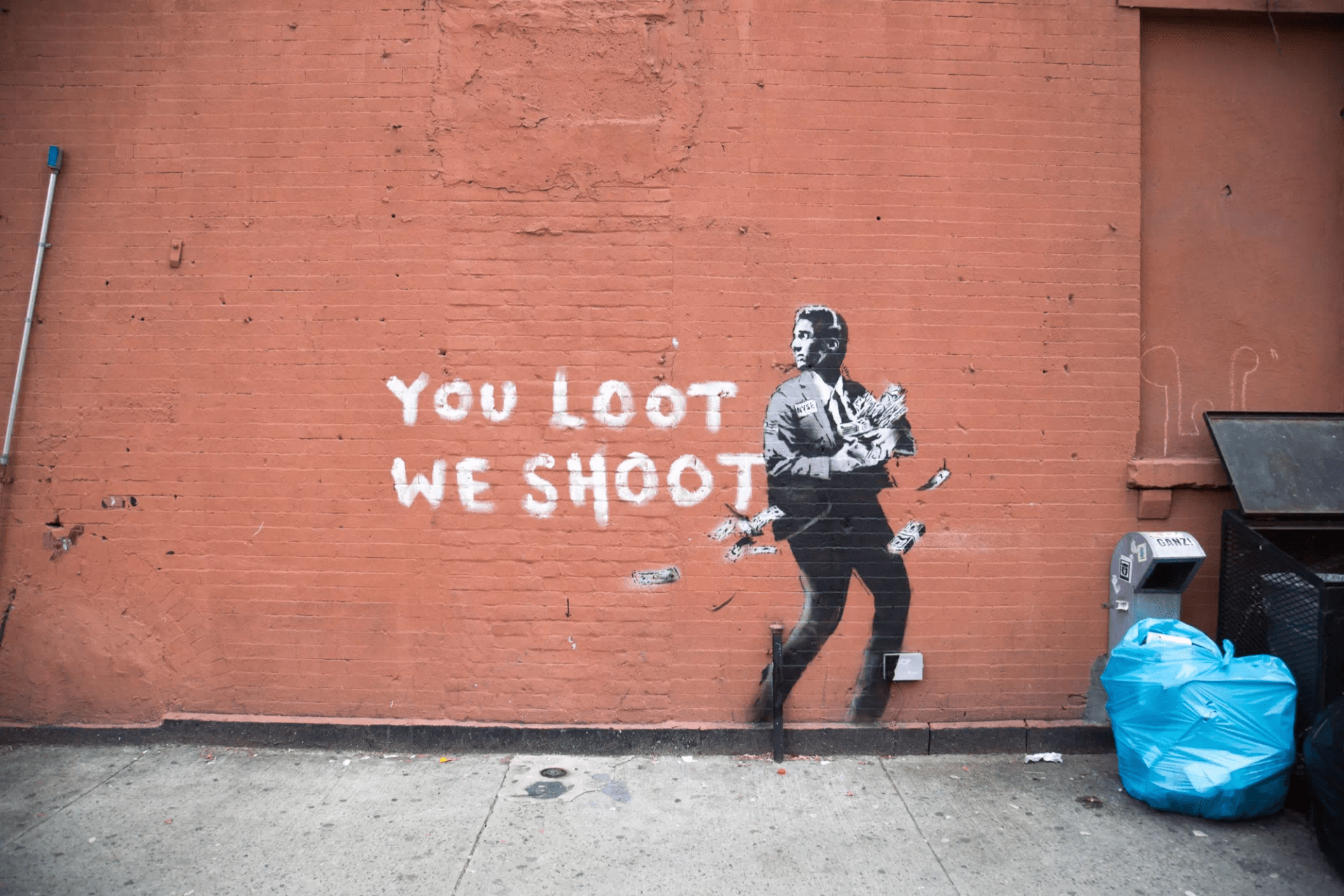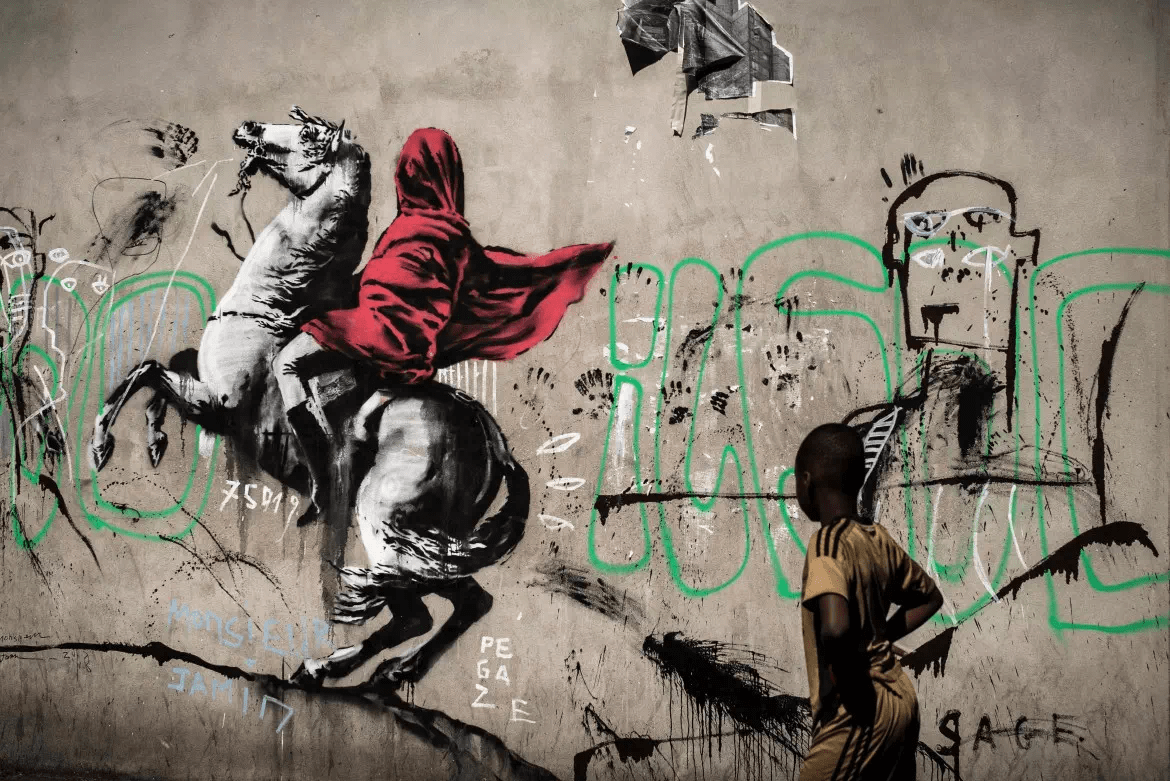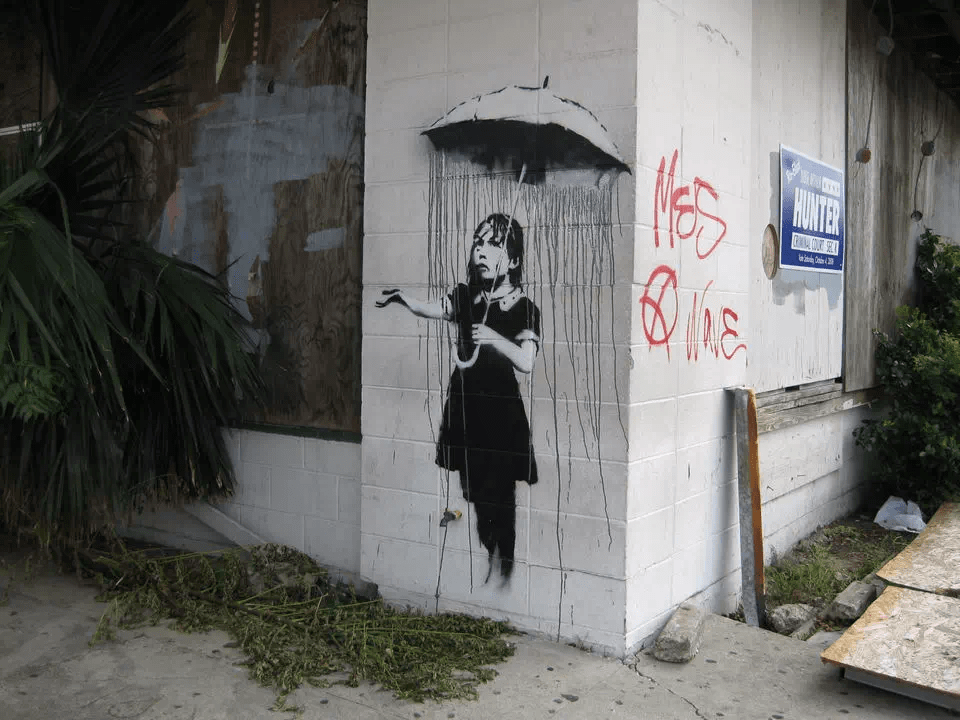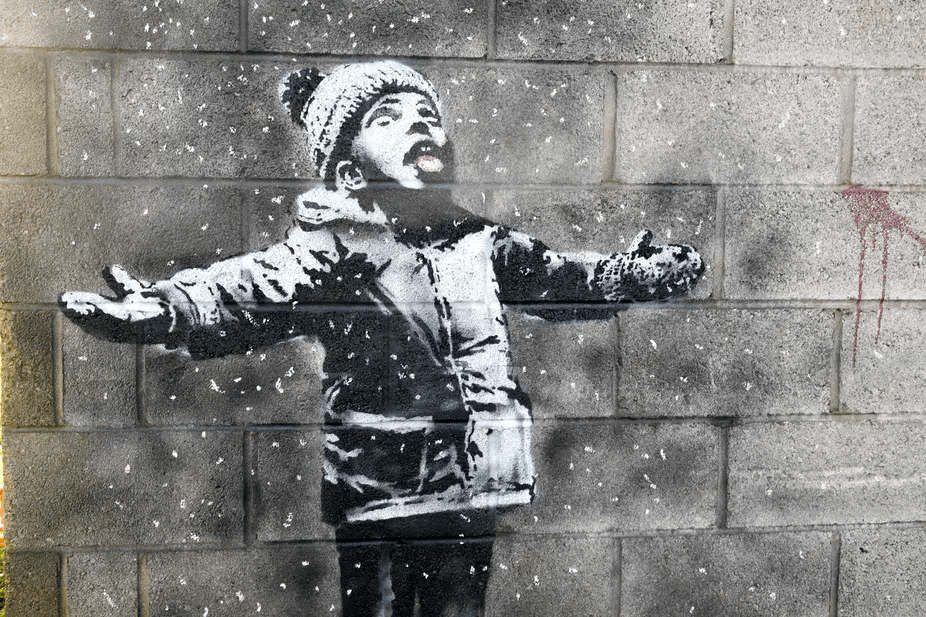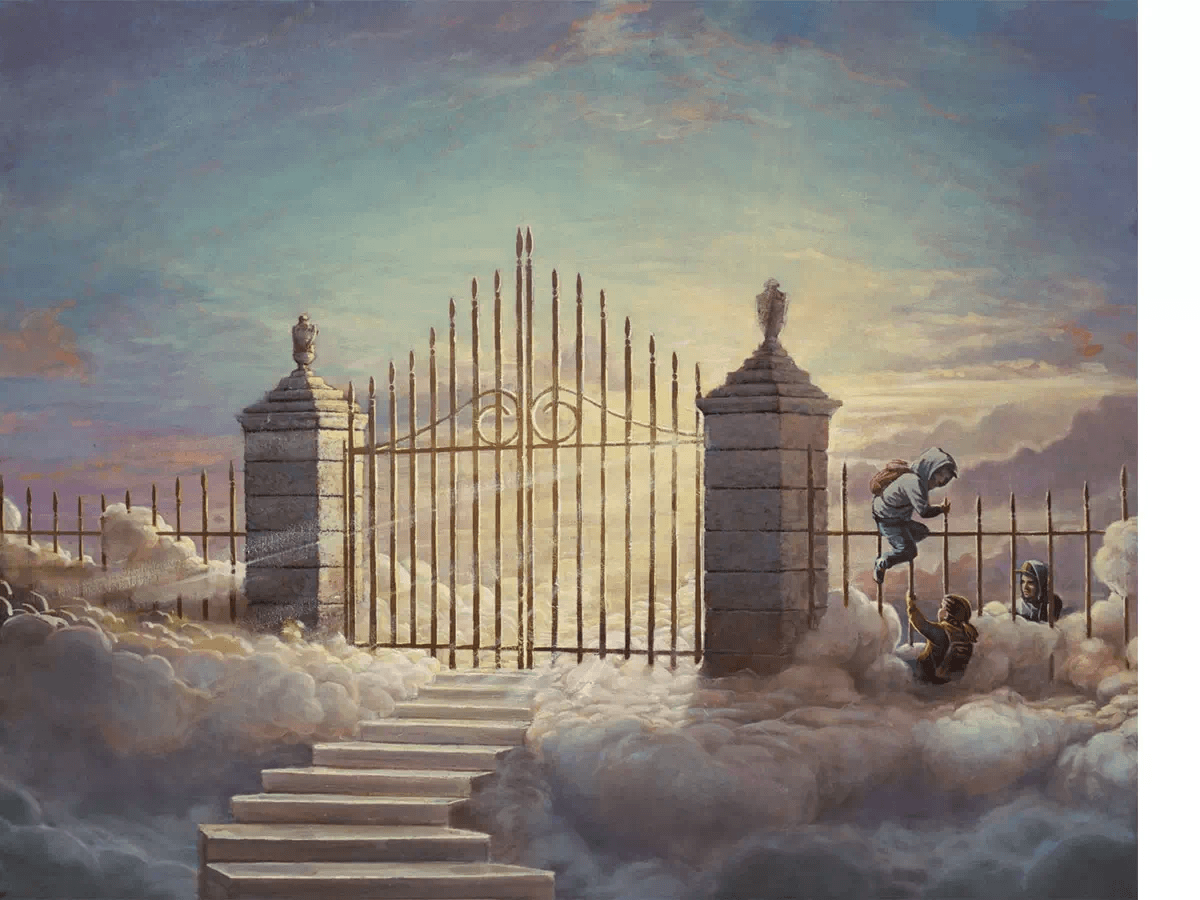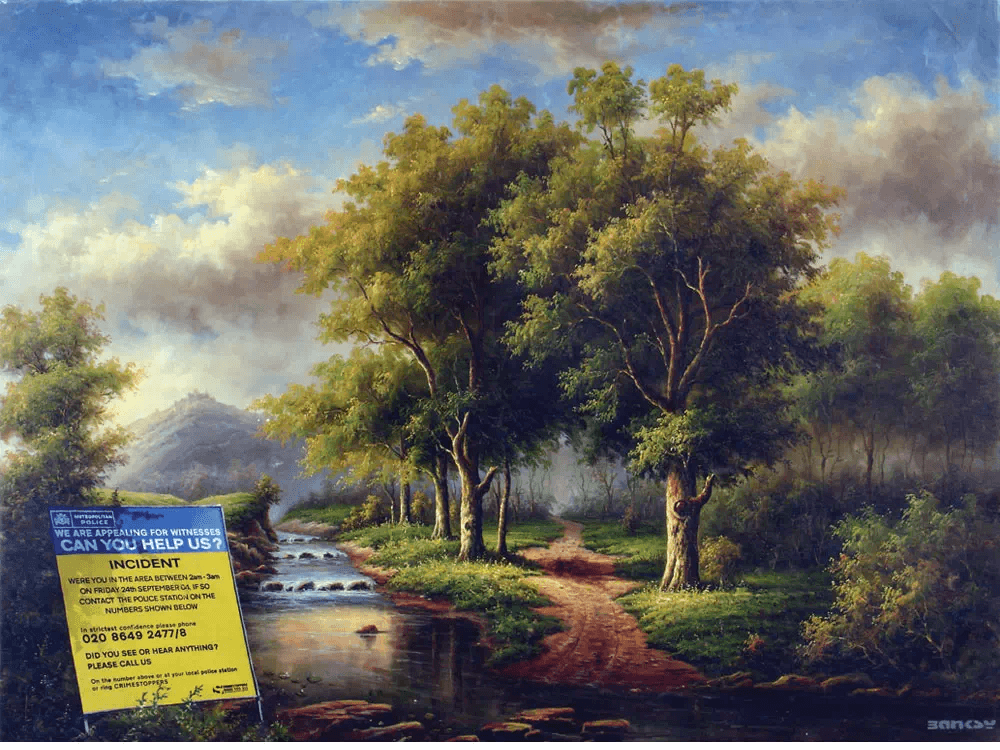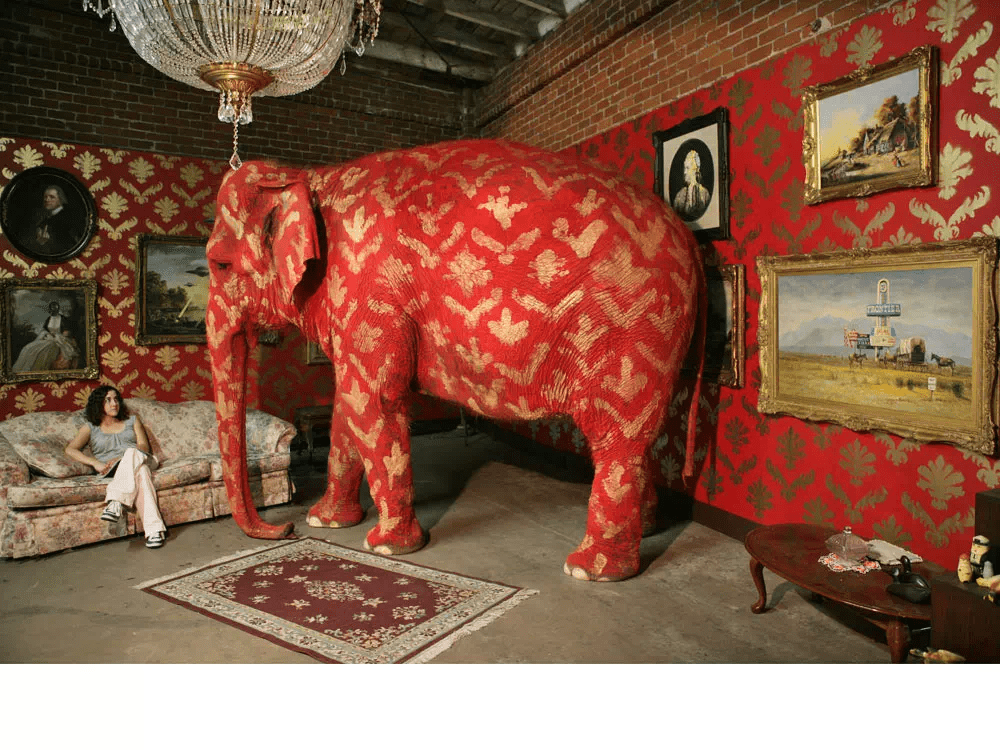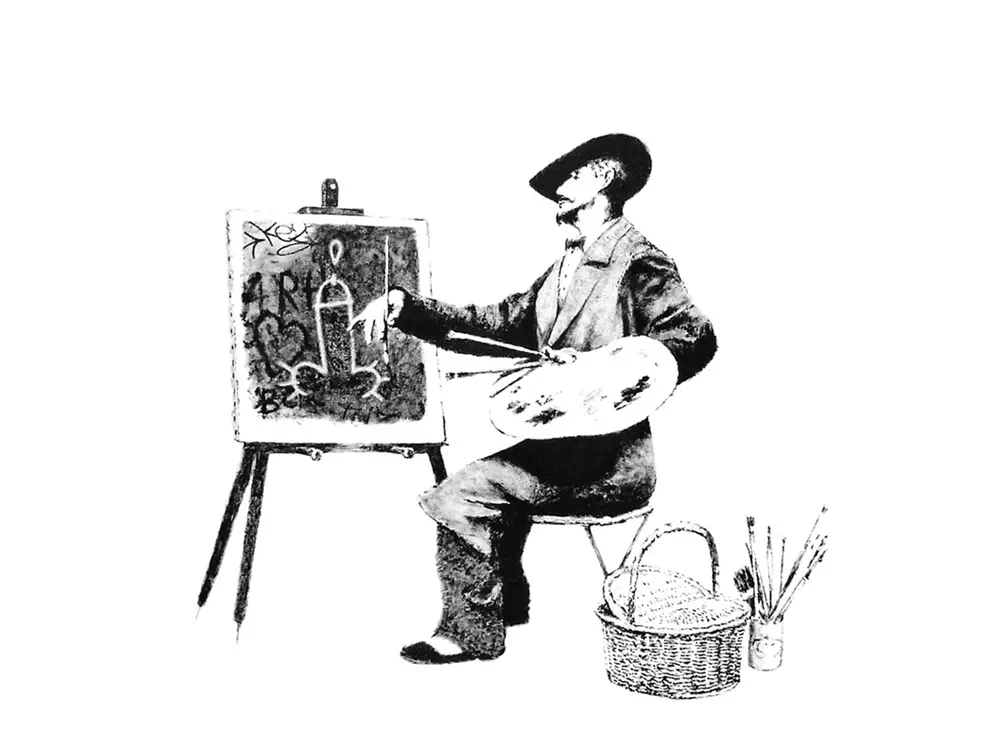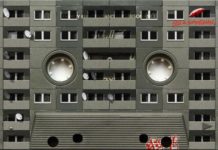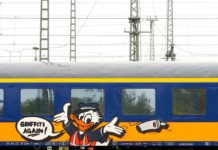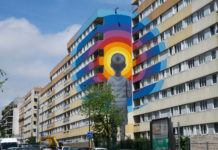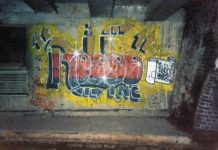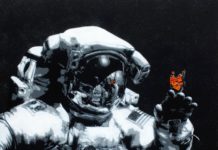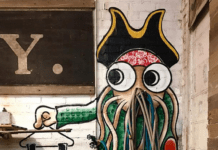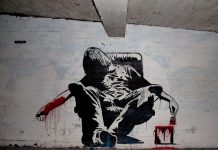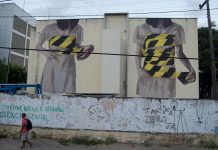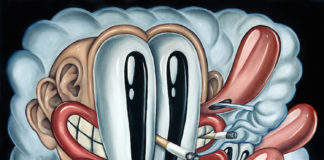Banksy, (born 1974?, Bristol?, England), anonymous British graffiti artist known for his antiauthoritarian art, often done in public places.
Though Banksy’s identity was well guarded, he came to notice as a freehand graffiti artist in 1993. Using stencils since 2000 to enhance his speed, he developed a distinctive iconography of highly recognizable images, such as rats and policemen, that communicated his antiauthoritarian message.
With wry wit and stealth, Banksy merged graffiti art with installation and performance. In the 2003 exhibition “Turf War,” he painted on the bodies of live pigs. At his “Crude Oils” exhibition in London in 2005, which featured altered replicas of the works of Claude Monet, Vincent van Gogh, and Edward Hopper, he released 200 live rats in the gallery. In 2005 Banksy, fully disguised, installed his own works on the walls of major museums in New York City and London, including the Metropolitan Museum of Art and Tate Britain.
In 2005 Banksy also painted a wall on the Palestinian side of the West Bank: on the viewer’s side, children play on a forlorn patch of earth, while through an apparent hole in the wall there is a scene of a perfect tropical beach. Banksy described himself as a “quality vandal,” challenging the authority of political and art institutions on both the right and the left. In September 2006 his one-weekend Los Angeles warehouse installation “Barely Legal,” for which he decorated a live elephant, attracted large crowds despite a lack of publicity. In Bristol, England, in 2006 he depicted a naked man clinging to a windowsill on the side of a public family-planning clinic; local residents voted to keep the mural.
In 2008 Banksy’s “Cans Festival”—a play on the Cannes film festival—encouraged visitors to add their own art to a south London rail tunnel on which he and 40 international artists had done airbrush paintings. The following year he staged a surprise show at the City Museum and Art Gallery in Bristol. It featured animatronics, oil paintings, and an old ice-cream truck.
Banksy’s books—which include Banging Your Head Against a Brick Wall (2001), Existencilism (2002), and Wall and Piece (2005)—document his projects; iconic examples of his work, including a life-size image of two policemen kissing, were featured in the bleak futuristic film Children of Men (2006). Banksy directed the 2010 film Exit Through the Gift Shop, a documentary that ostensibly profiled the lives and work of the world’s most talented graffiti artists. Critics were divided on the film, though, as some chose to accept it at face value while others saw it as a satire, with documentary subject and filmmaker-turned-street artist Thierry Guetta (who some theorized was an actor paid by Banksy or was, perhaps, Banksy himself) serving as a commentator on the commercialization of art.
In September 2015 Banksy debuted Dismaland, his most elaborate project to date, in Weston-super-Mare, England. The temporary amusement park and conceptual art show, which included work from other artists, was described by Banksy as “a family attraction that acknowledges inequality and impending catastrophe.” Among the sites and features was a fake security checkpoint created by Bill Barminski where visitors’ belongings were examined in a cardboard X-ray machine, and disgruntled greeters circulated through the park wearing shirts that read “Dismal.” The park also hosted late-night parties and concerts by various bands. Dismaland closed in September 2015.
Banksy’s next grand-scale project, the Walled Off Hotel, opened in Bethlehem in 2017. Constructed next to the barrier wall that separates Israel from the Palestinian territories, the hotel sardonically boasts “the worst view of any hotel in the world” and contains rooms decorated with original work by the artist and a gallery exhibiting work by Palestinian artists. That same year Banksy addressed “Brexit,” the scheduled exit of the United Kingdom from the European Union (EU), by painting on the side of a building in Dover the flag of the EU and a labourer poignantly removing one of its stars.
In late 2018 Girl with Balloon (2006), a canvas version of one of Banksy’s most popular murals, startled onlookers at an auction when the work seemingly self-destructed by partly shredding just after selling for $1.4 million. As speculation about the meaning of the stunt and about the involvement of the auction house erupted on social media, Banksy posted a video claiming credit for the prank. He later released another video suggesting that the shredder, hidden in the frame, was meant to destroy the work completely but had malfunctioned. Pest Control, Banksy’s authentication bureau, also issued a certificate acknowledging that the destroyed work had become a new piece of art with a new name, Love Is in the Bin.
Although he was increasingly famous, Banksy remained anonymous; his rare interviews were conducted via e-mail or with responses delivered by an altered voice on tape. He remained committed to street art, declaring that life in a city in which graffiti was legal would be “like a party where everyone was invited.” (Encyclopædia Britannica)



